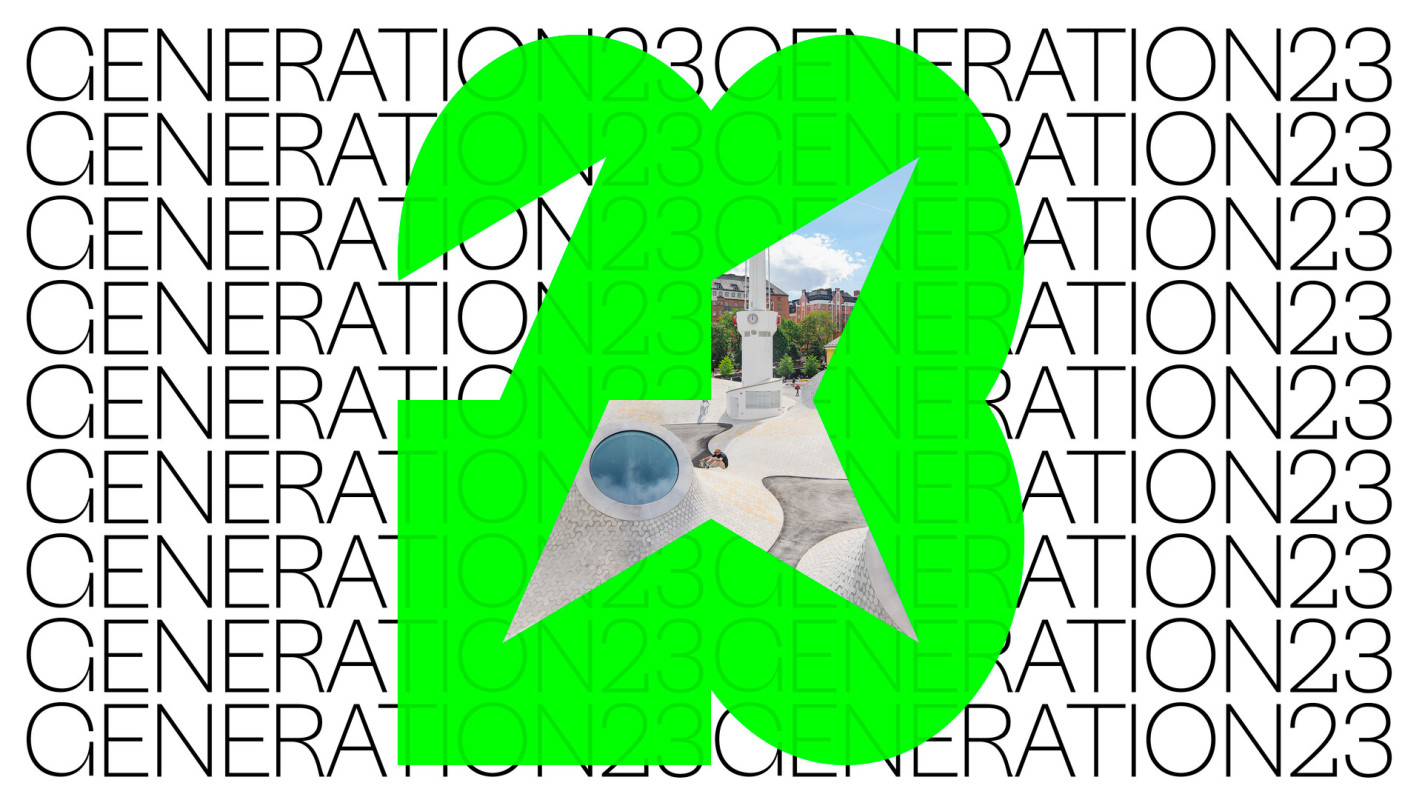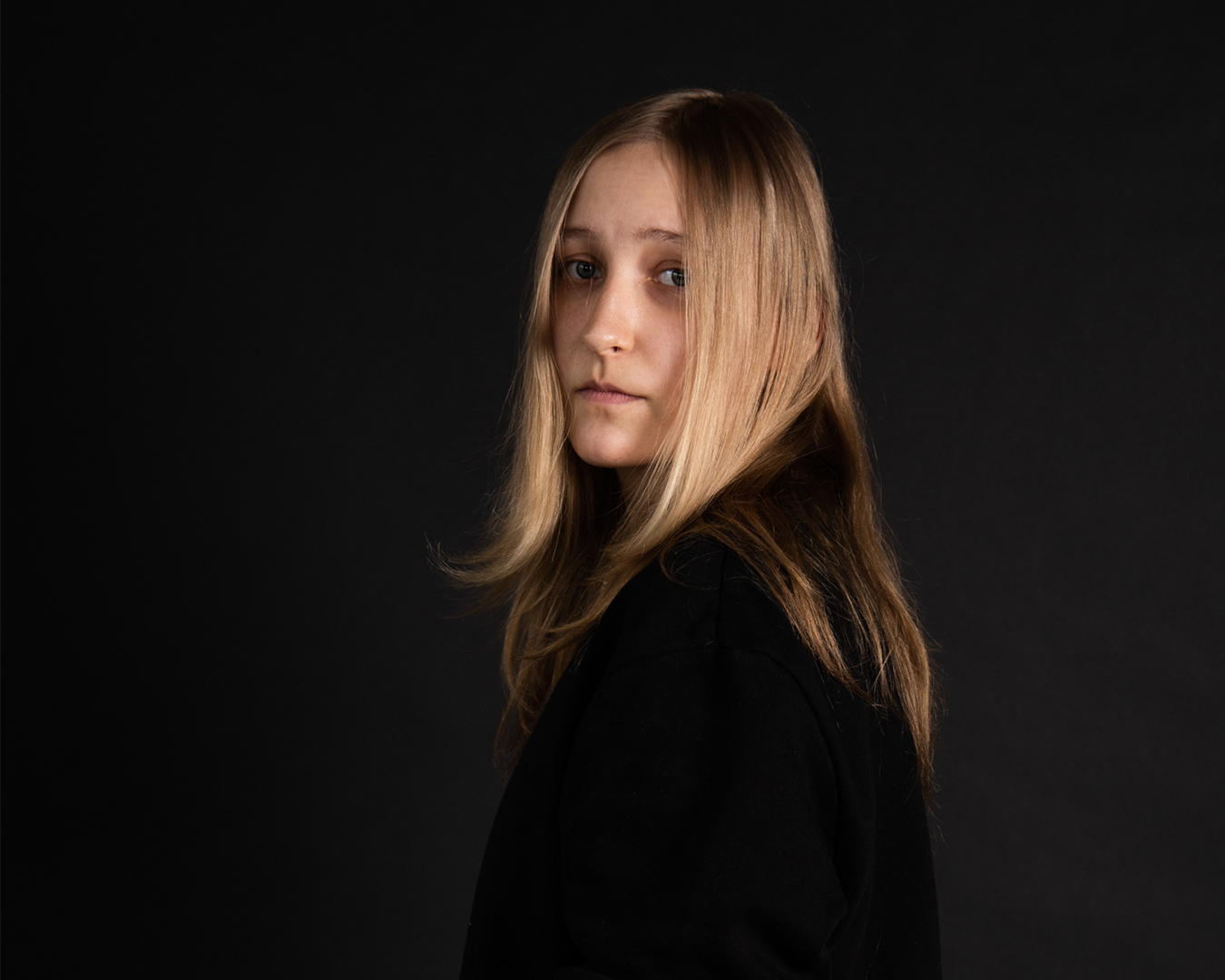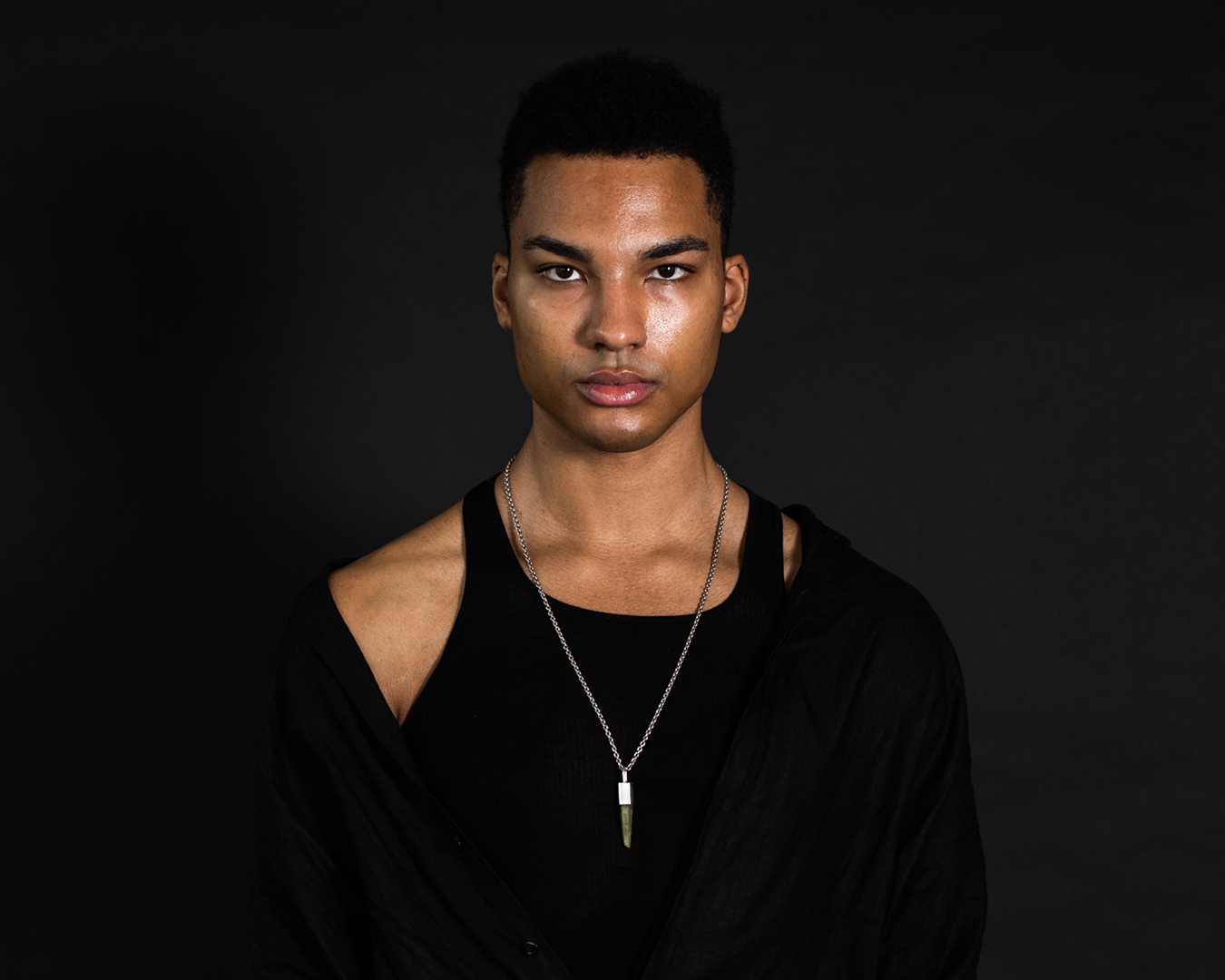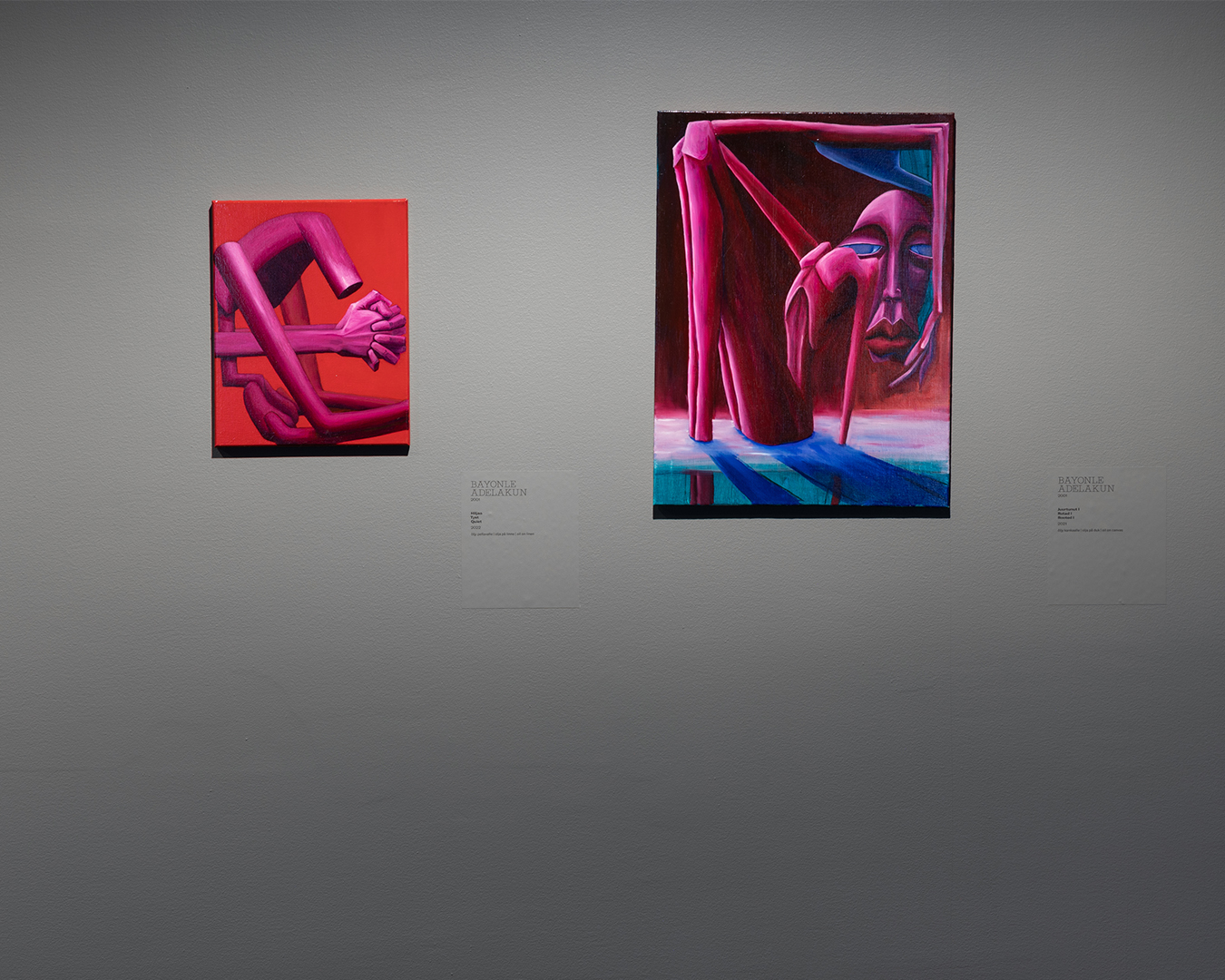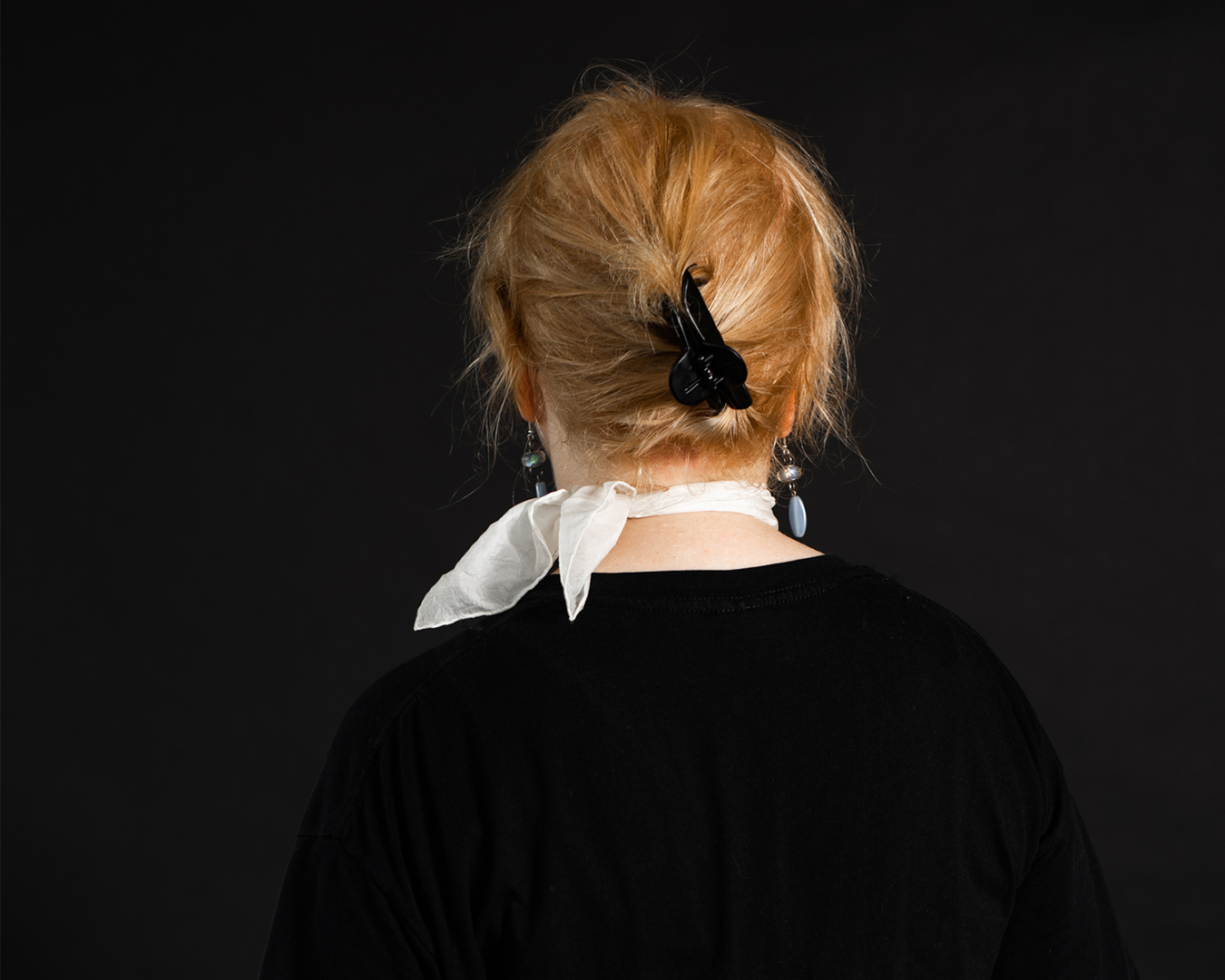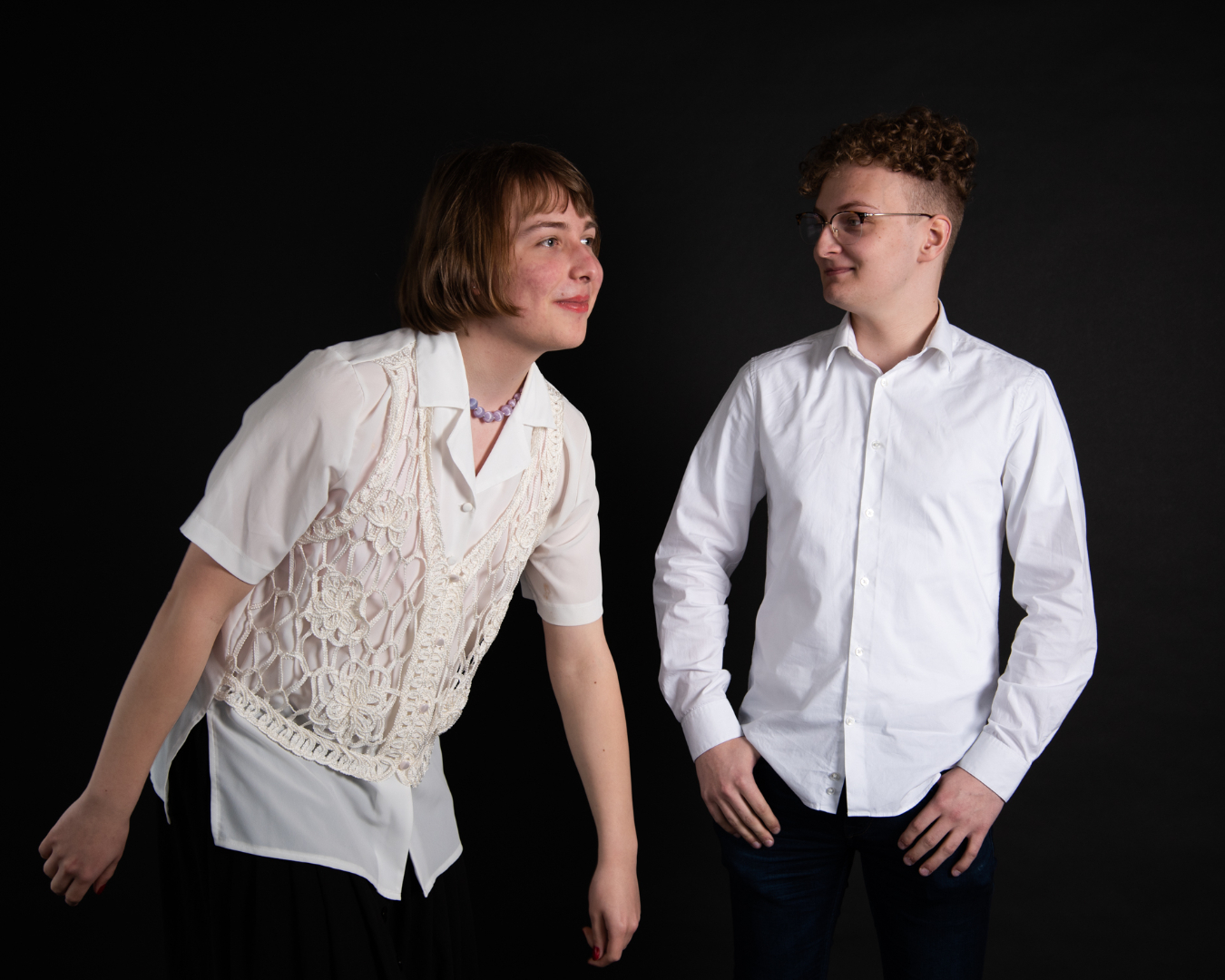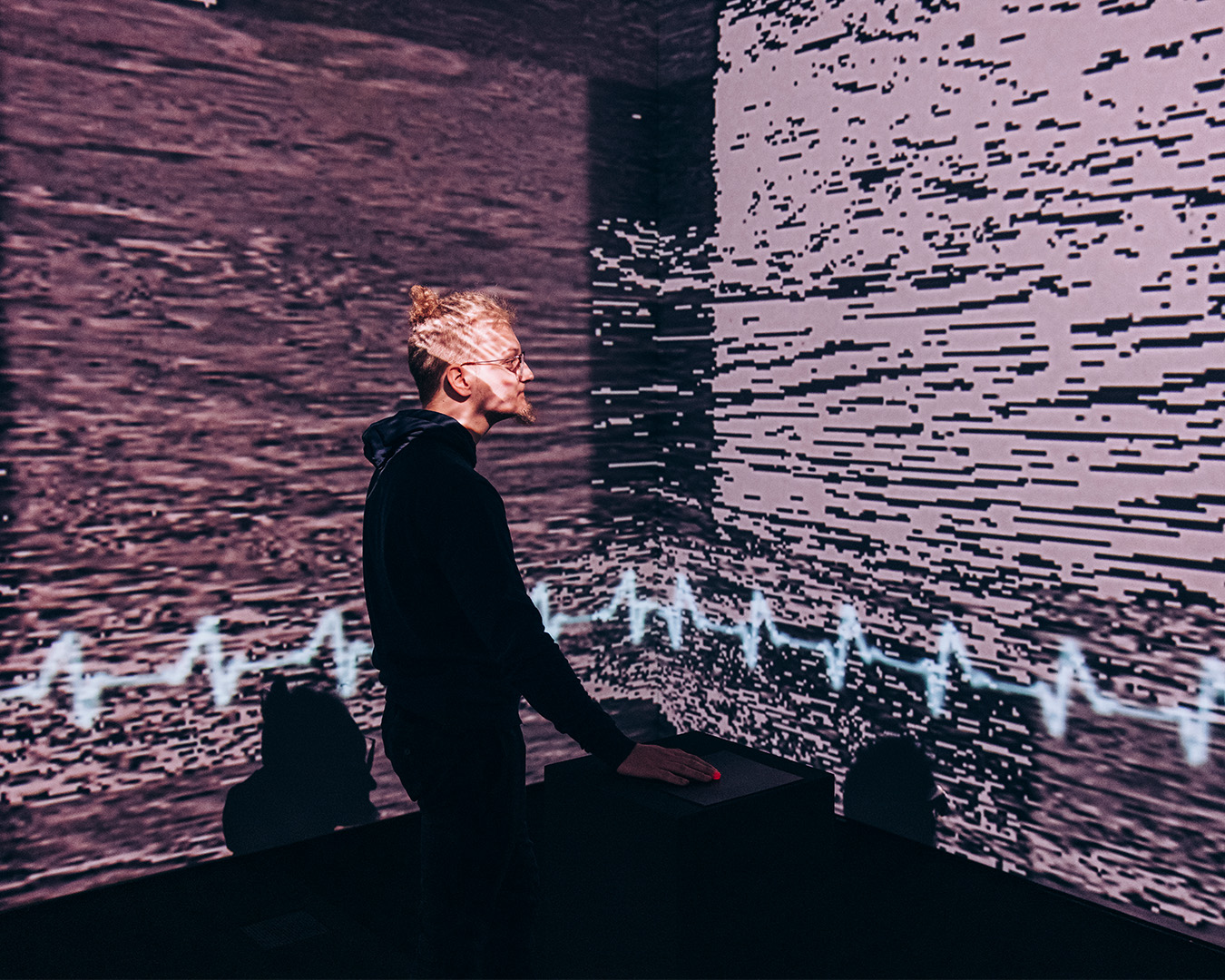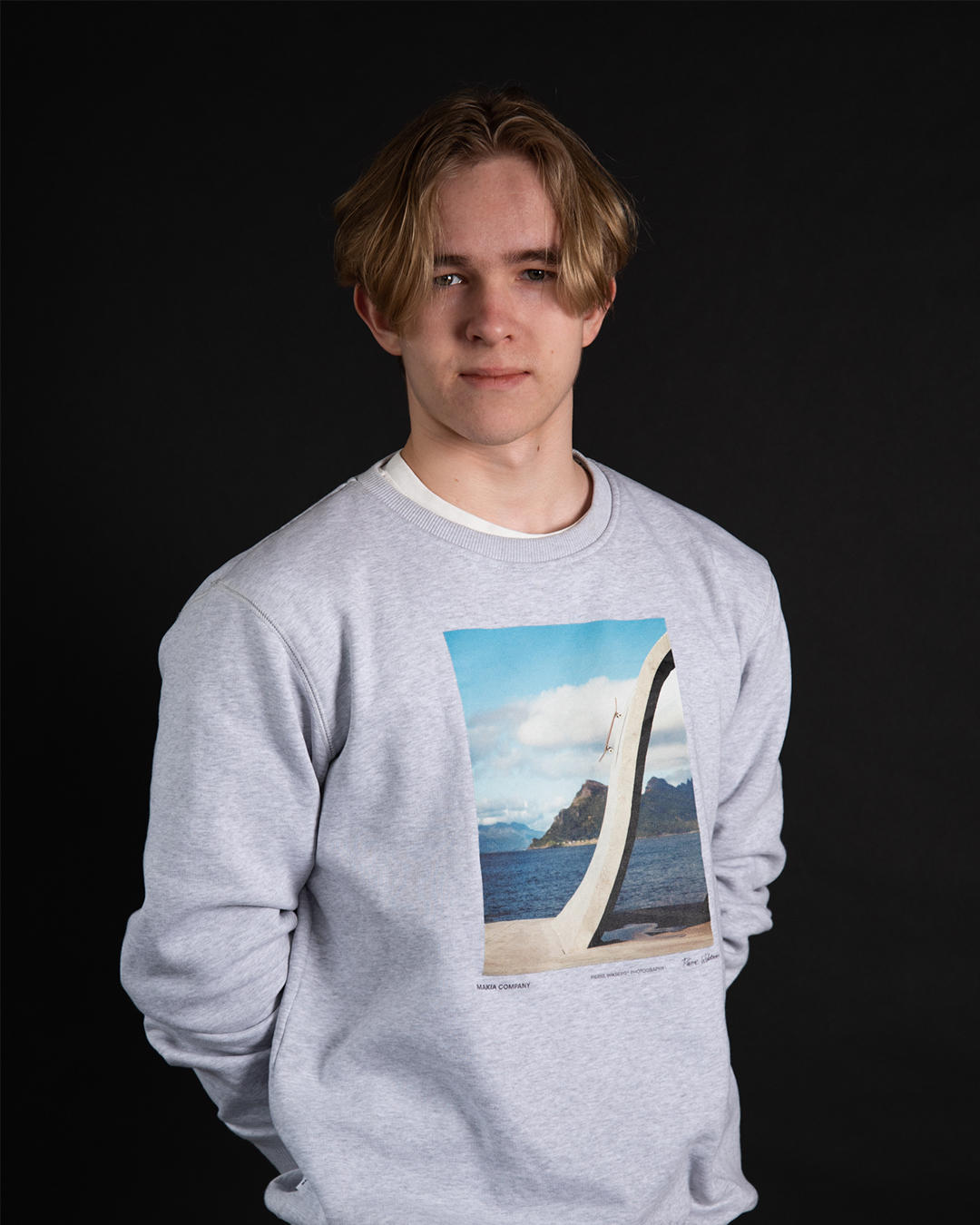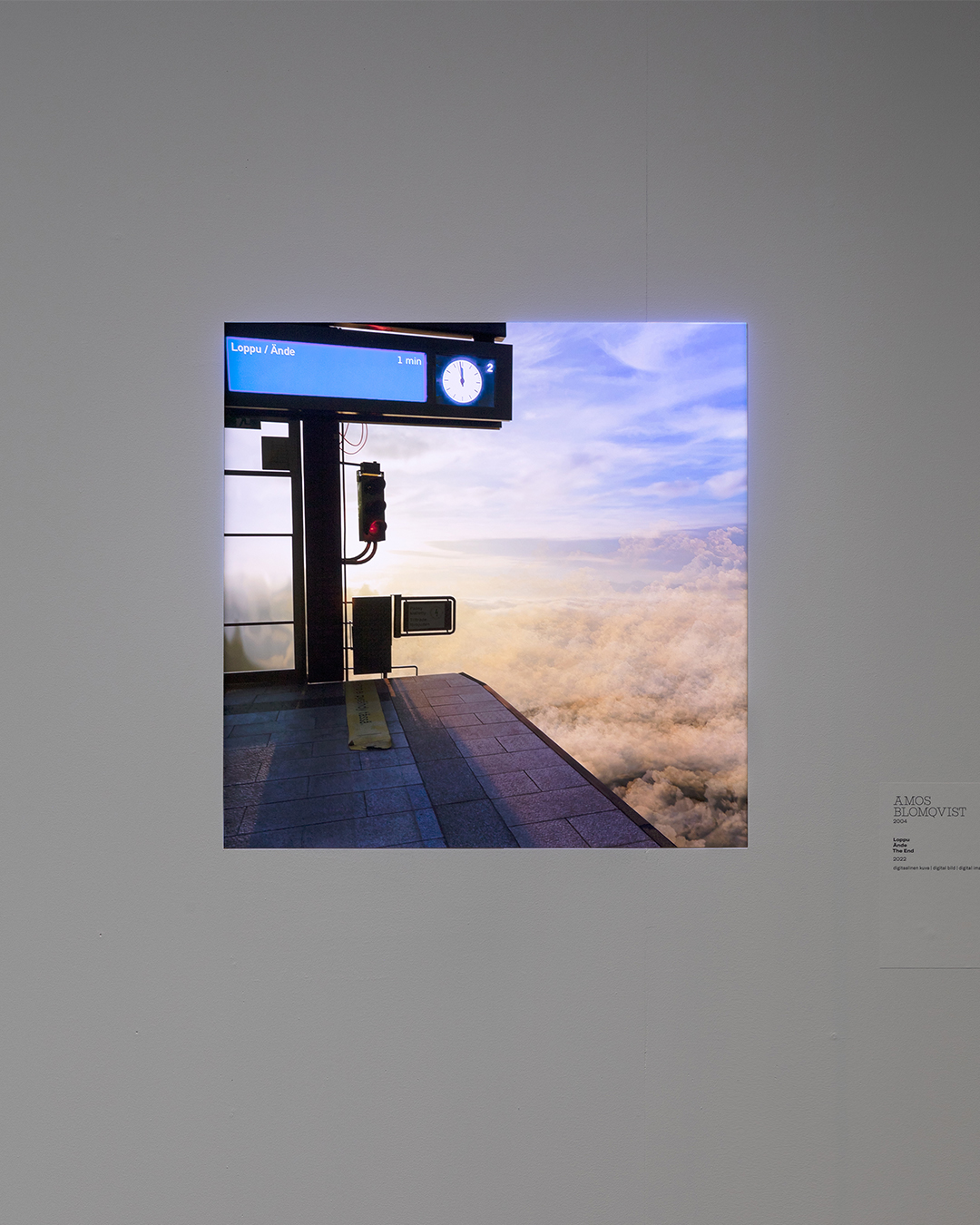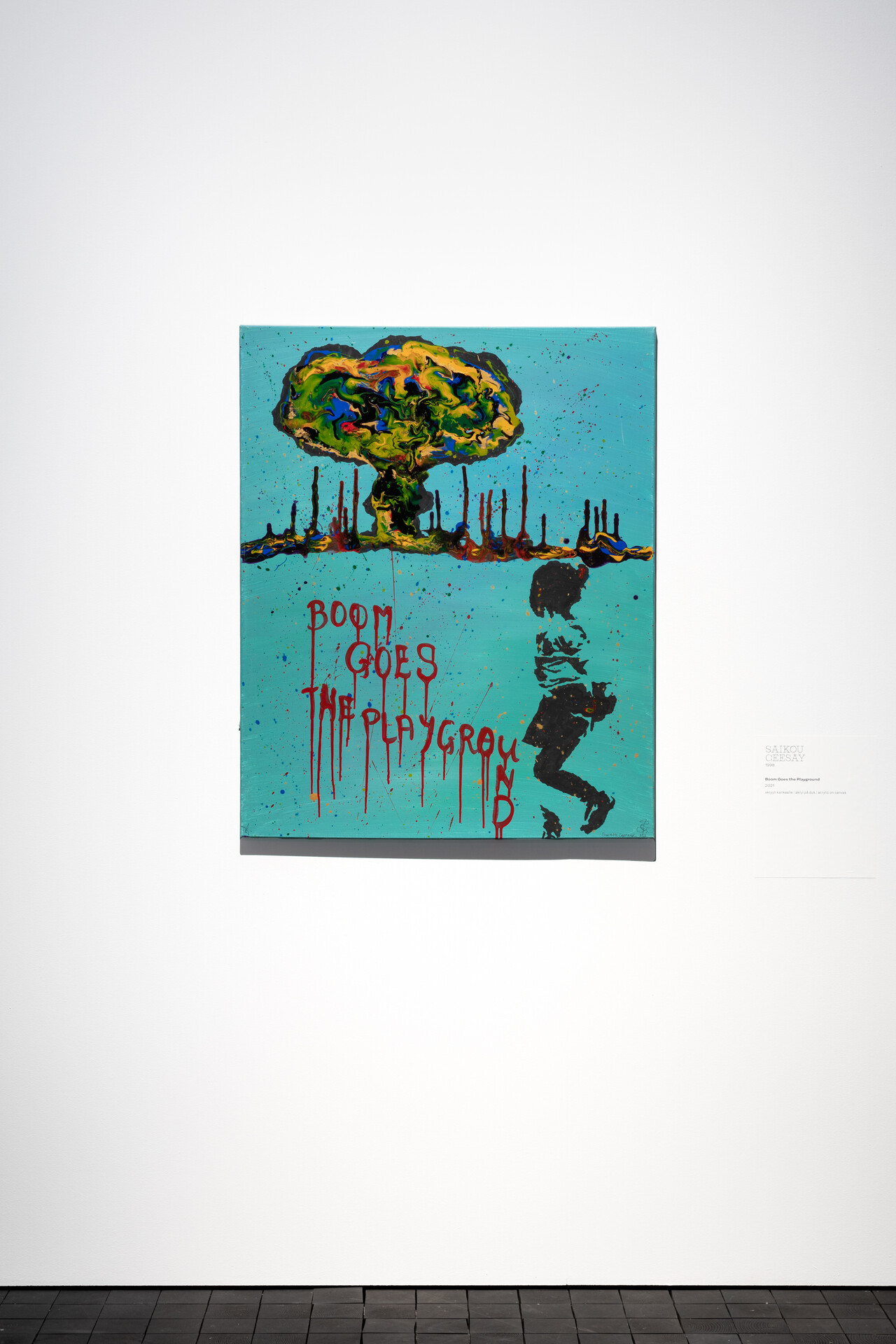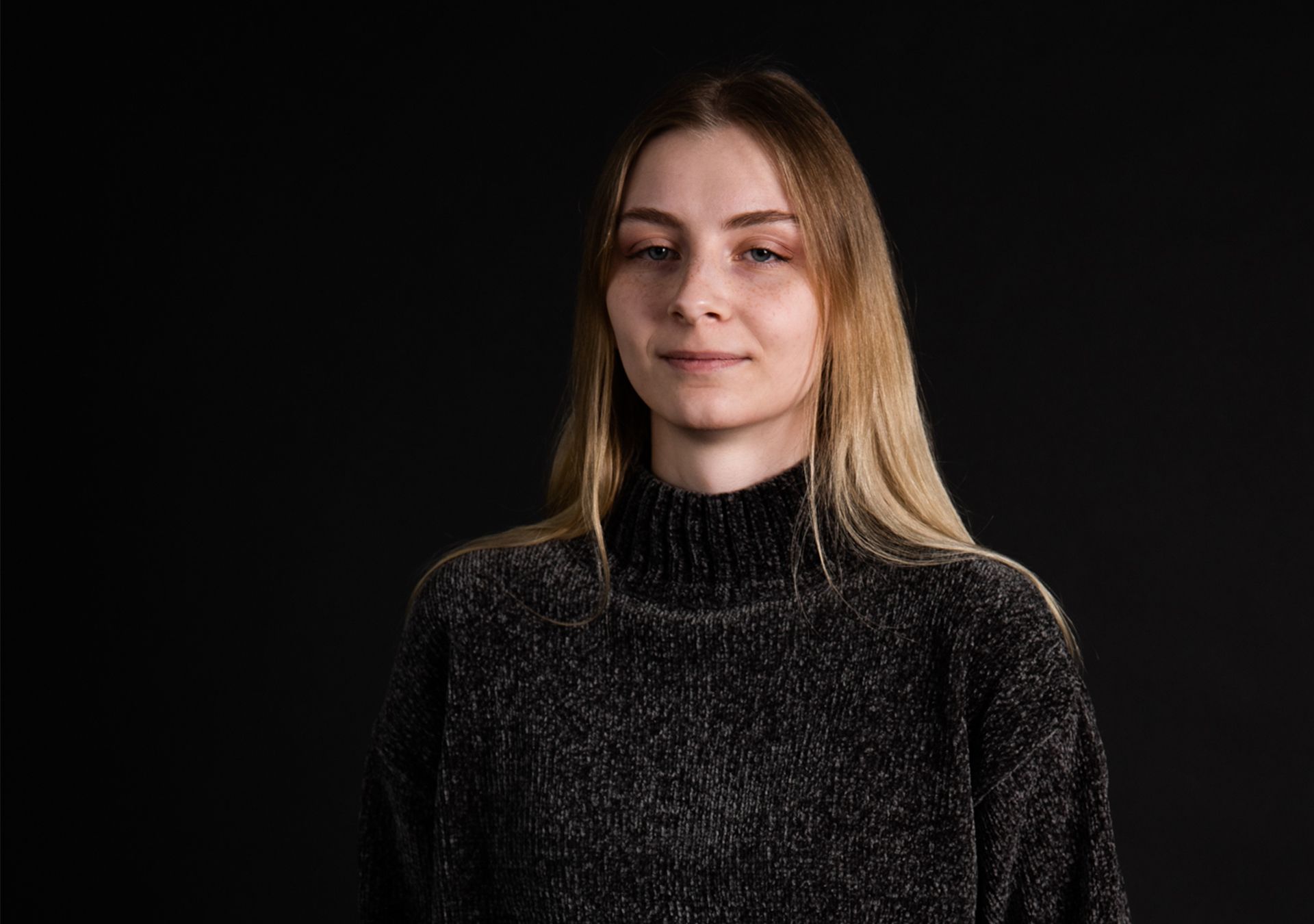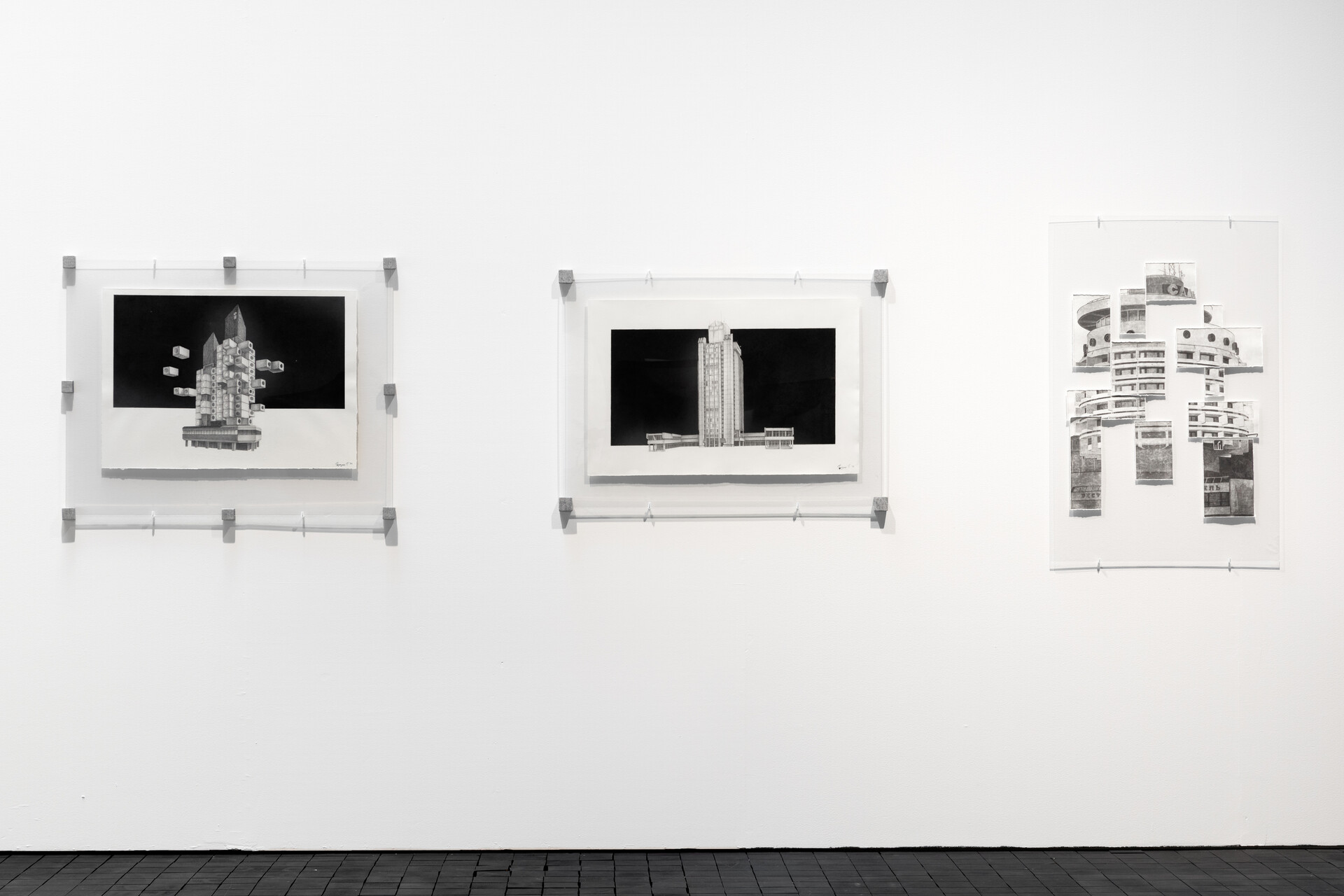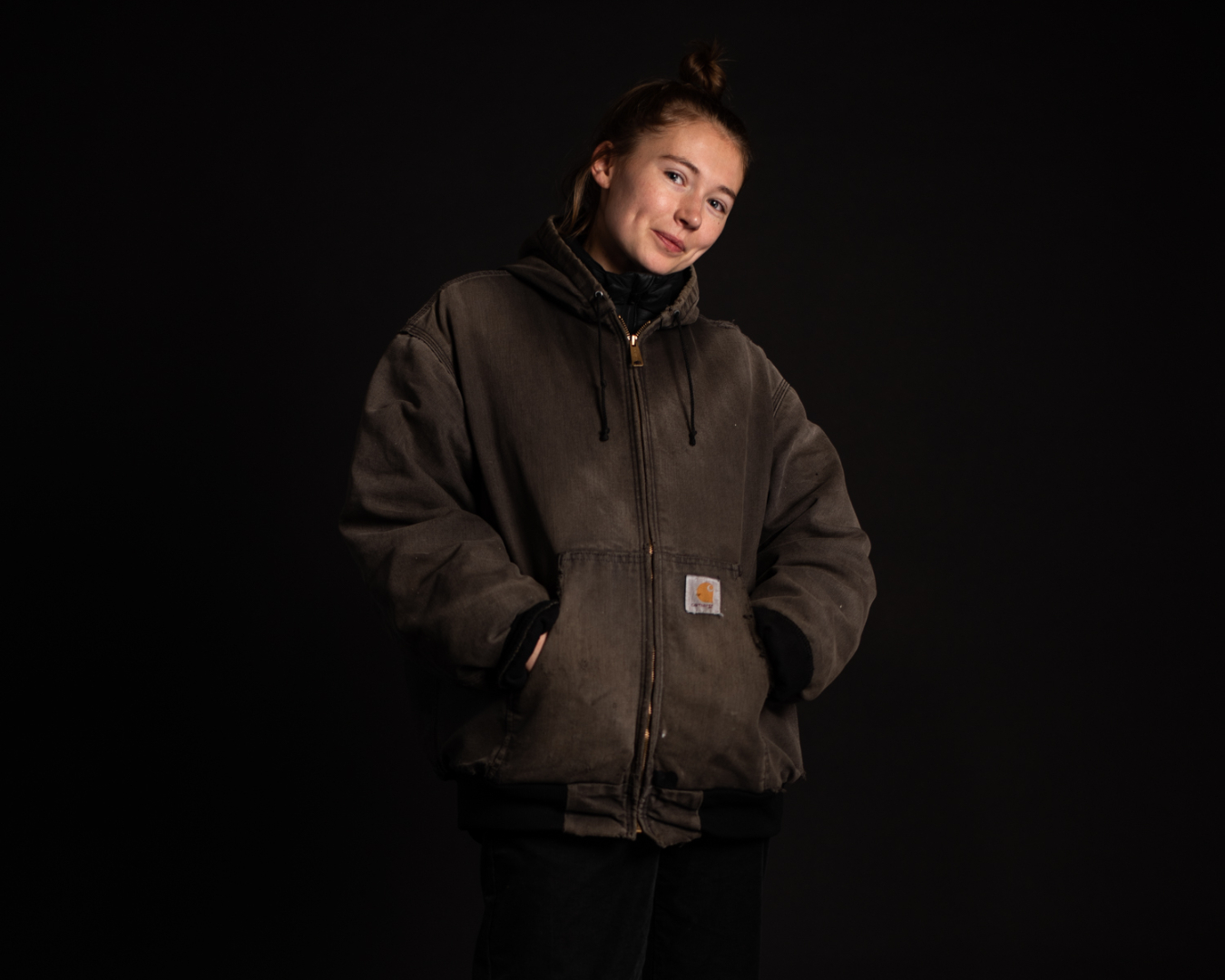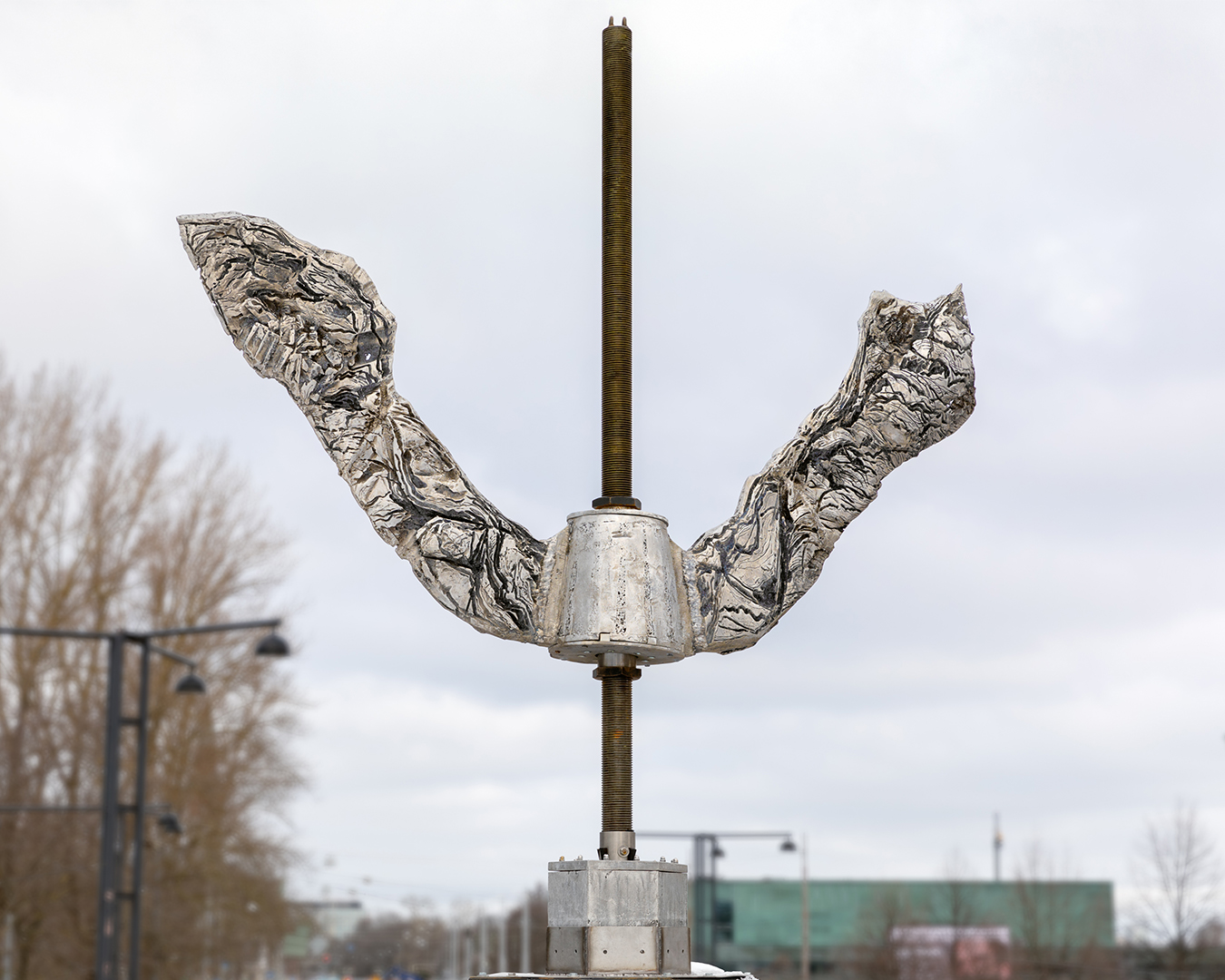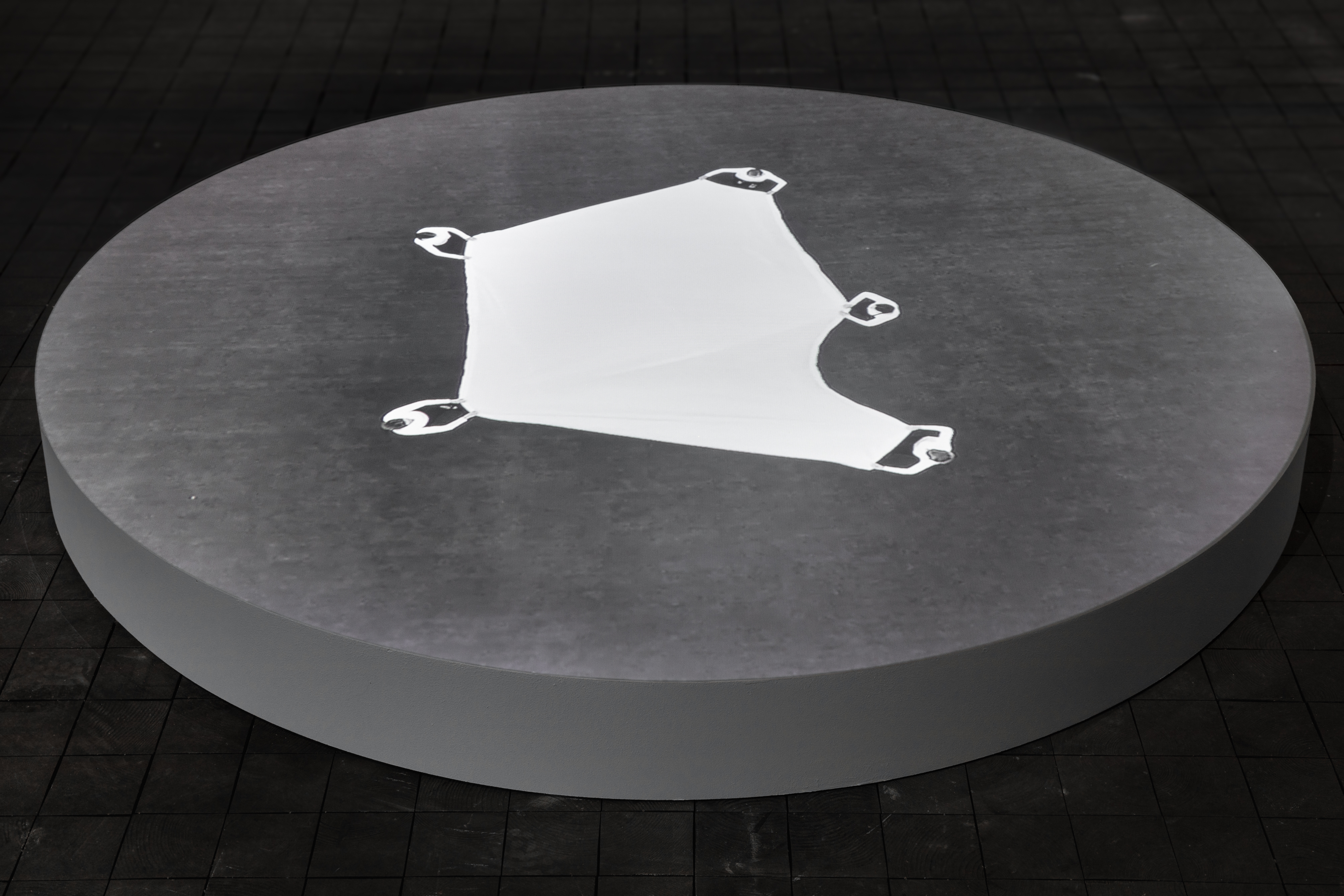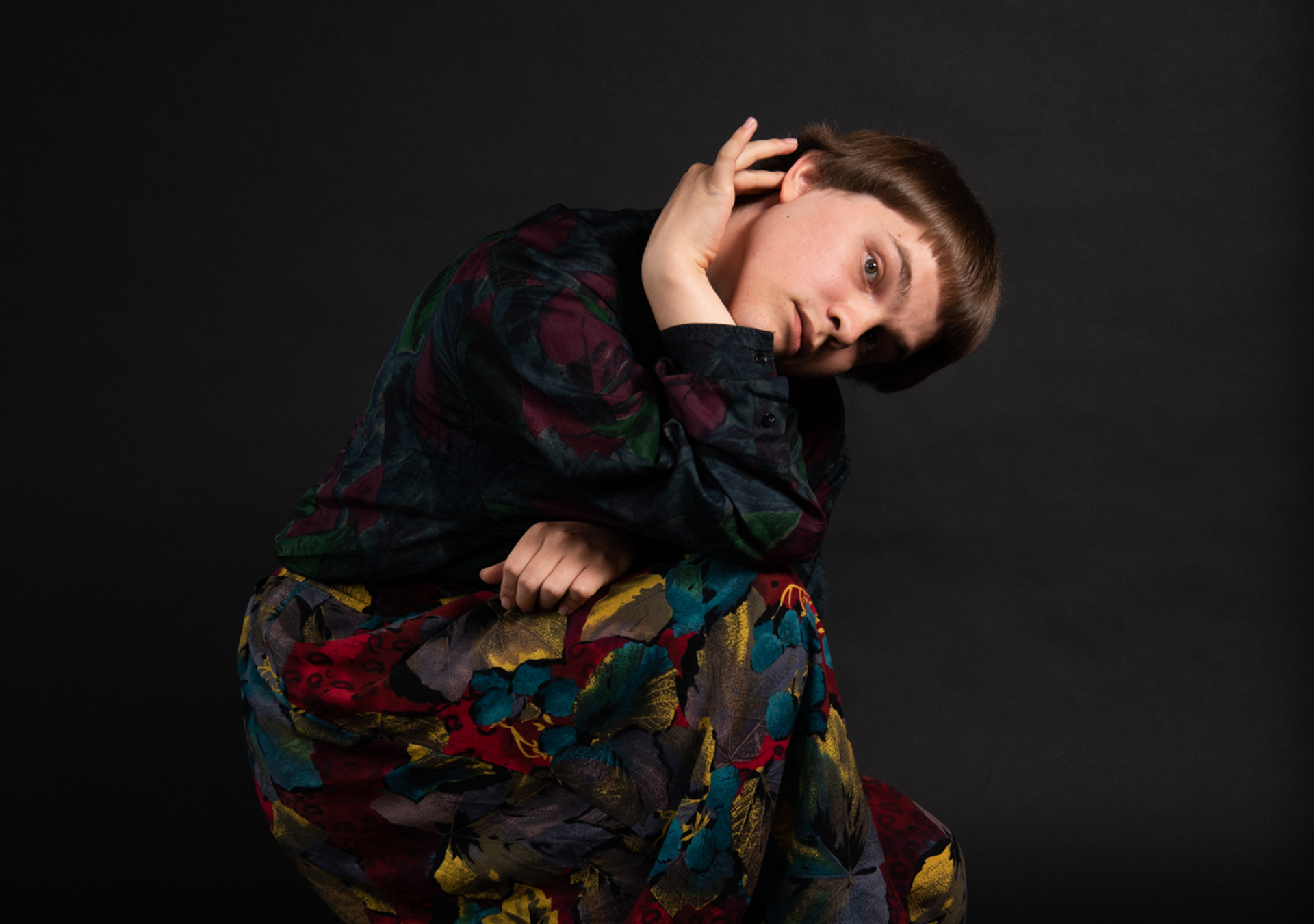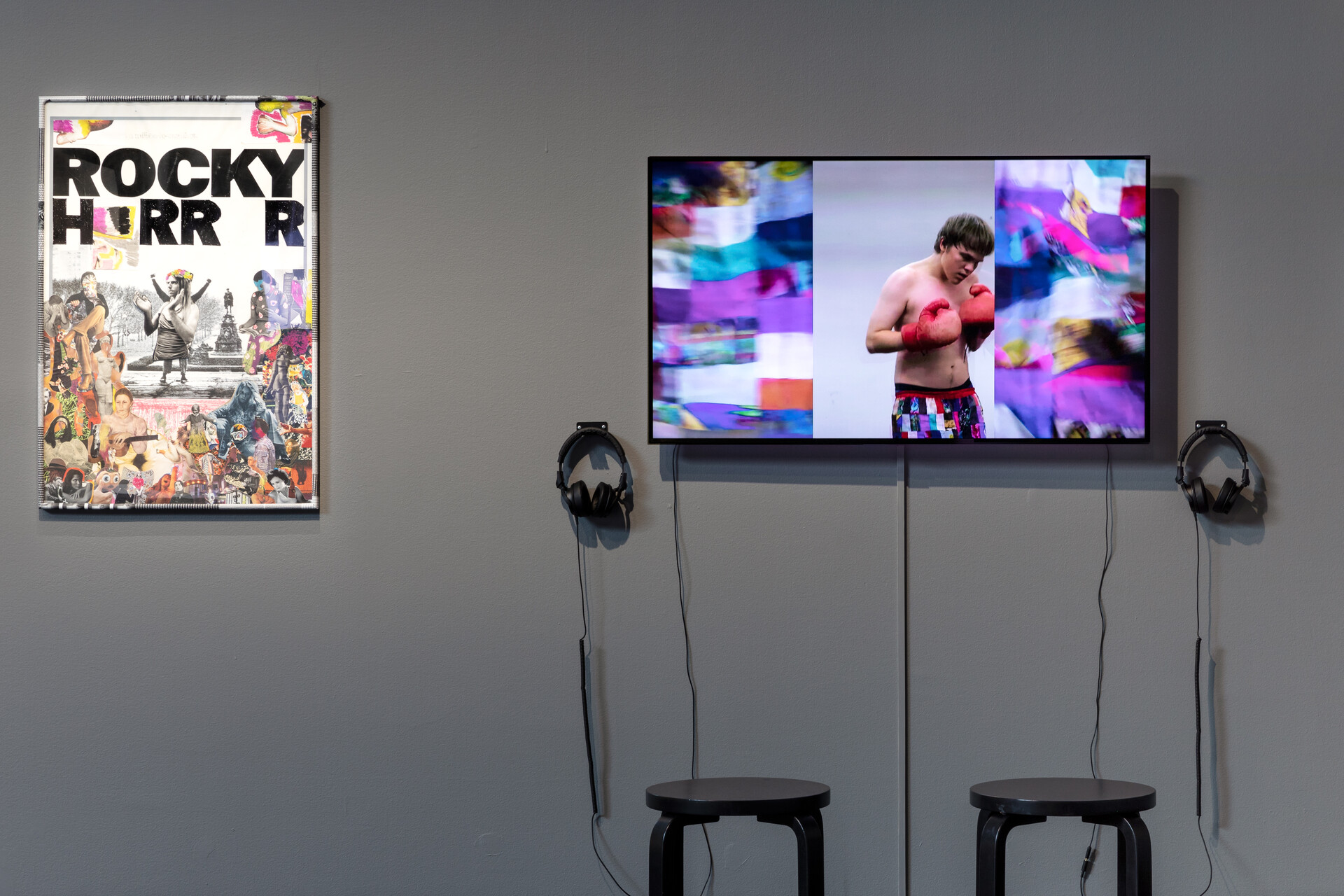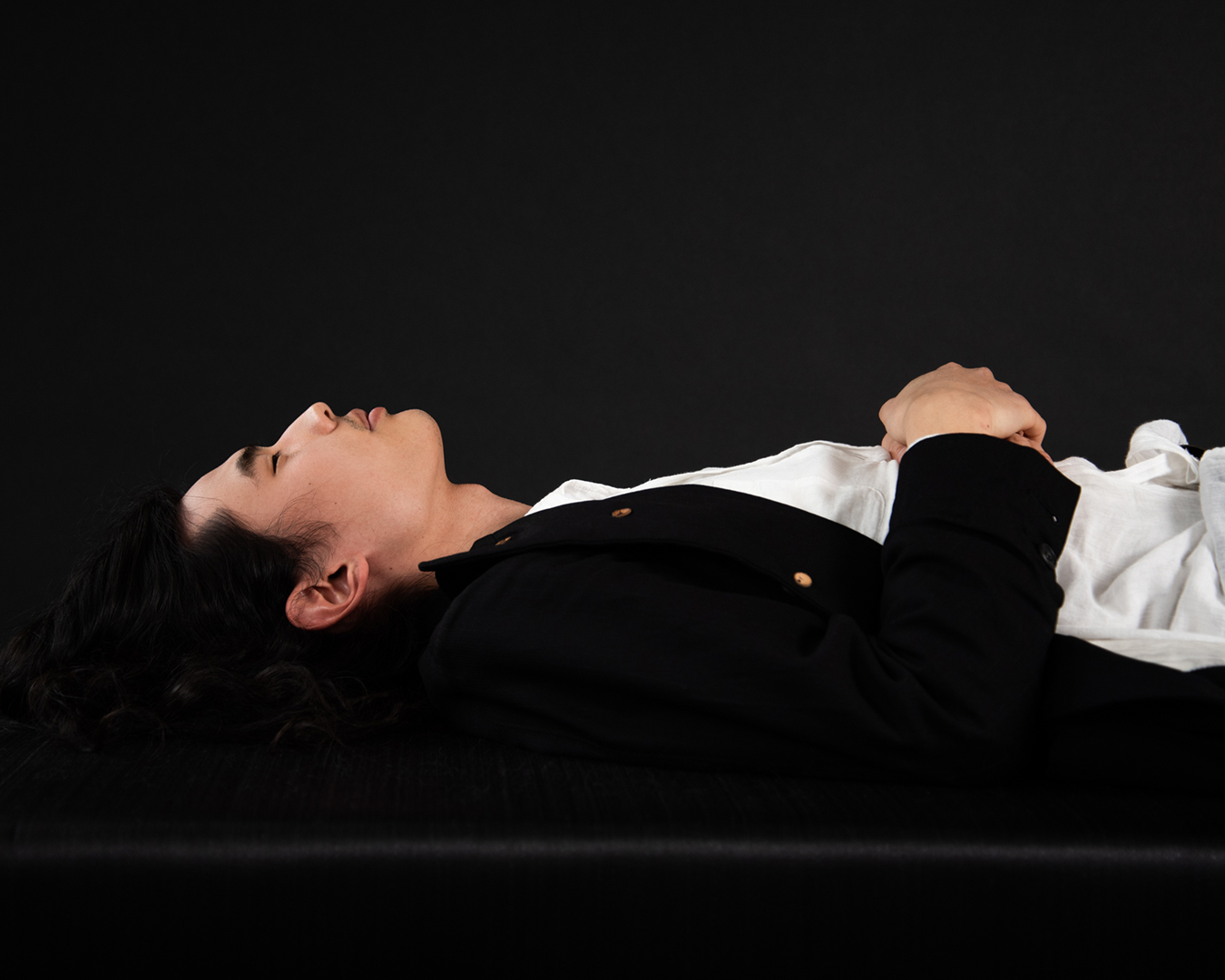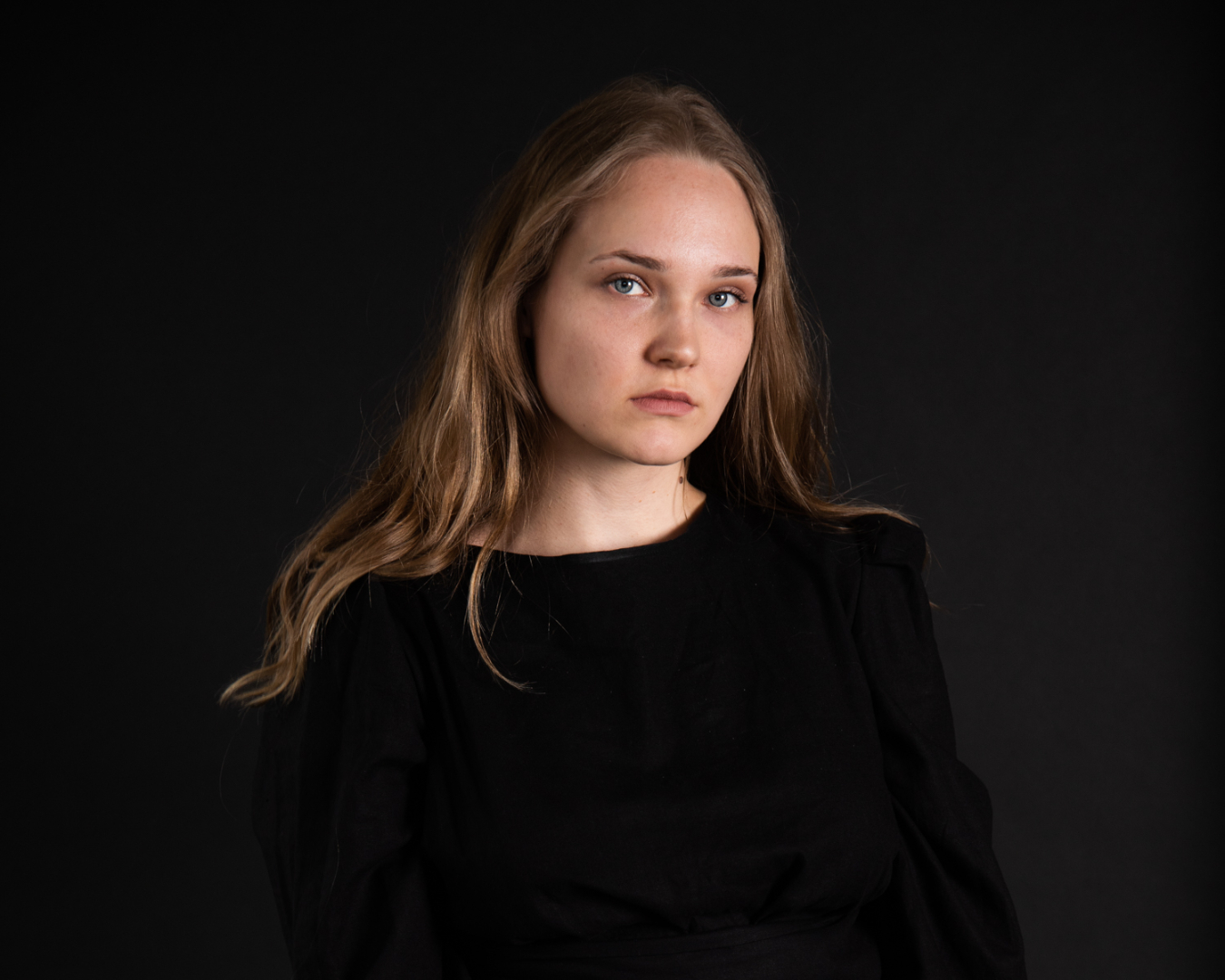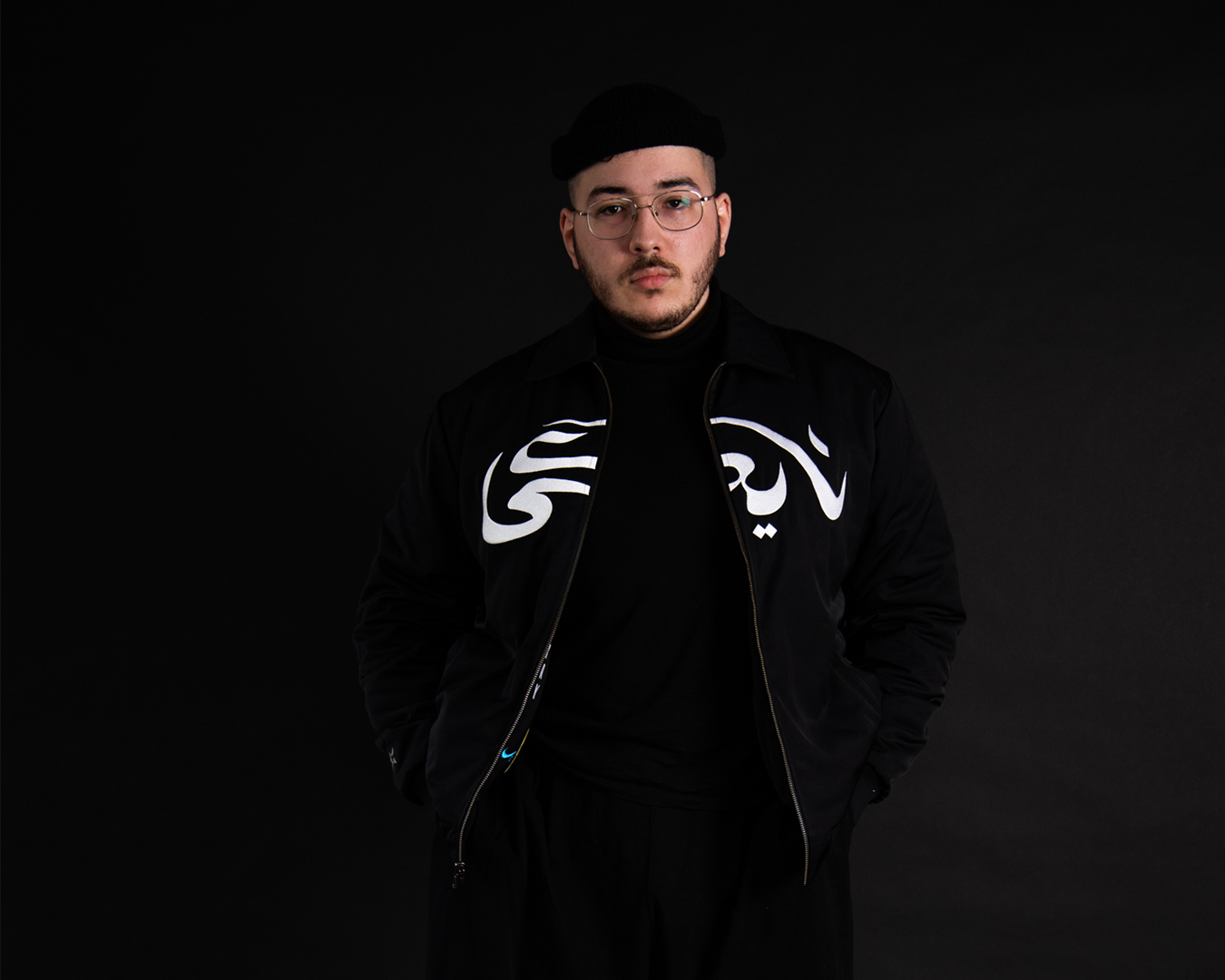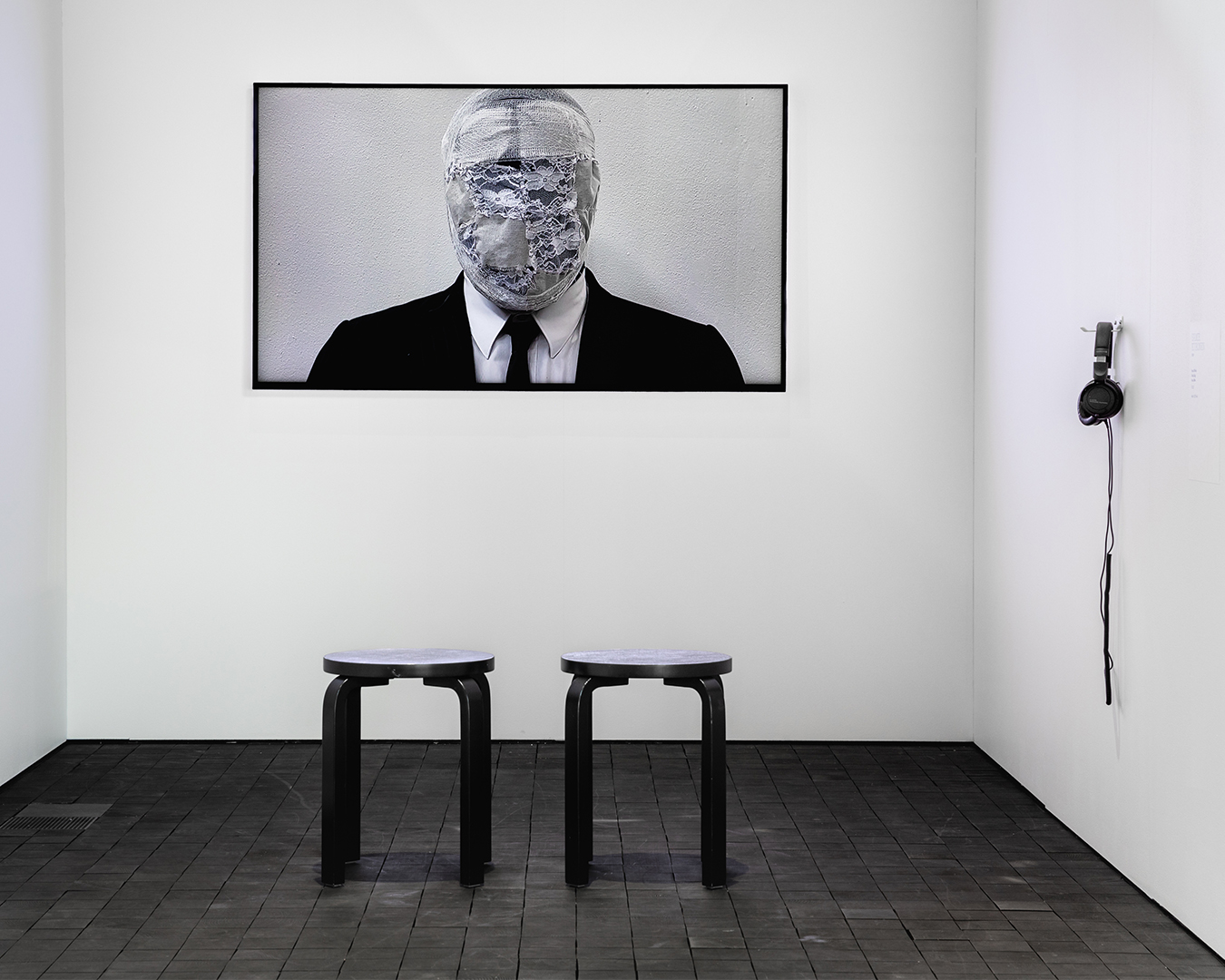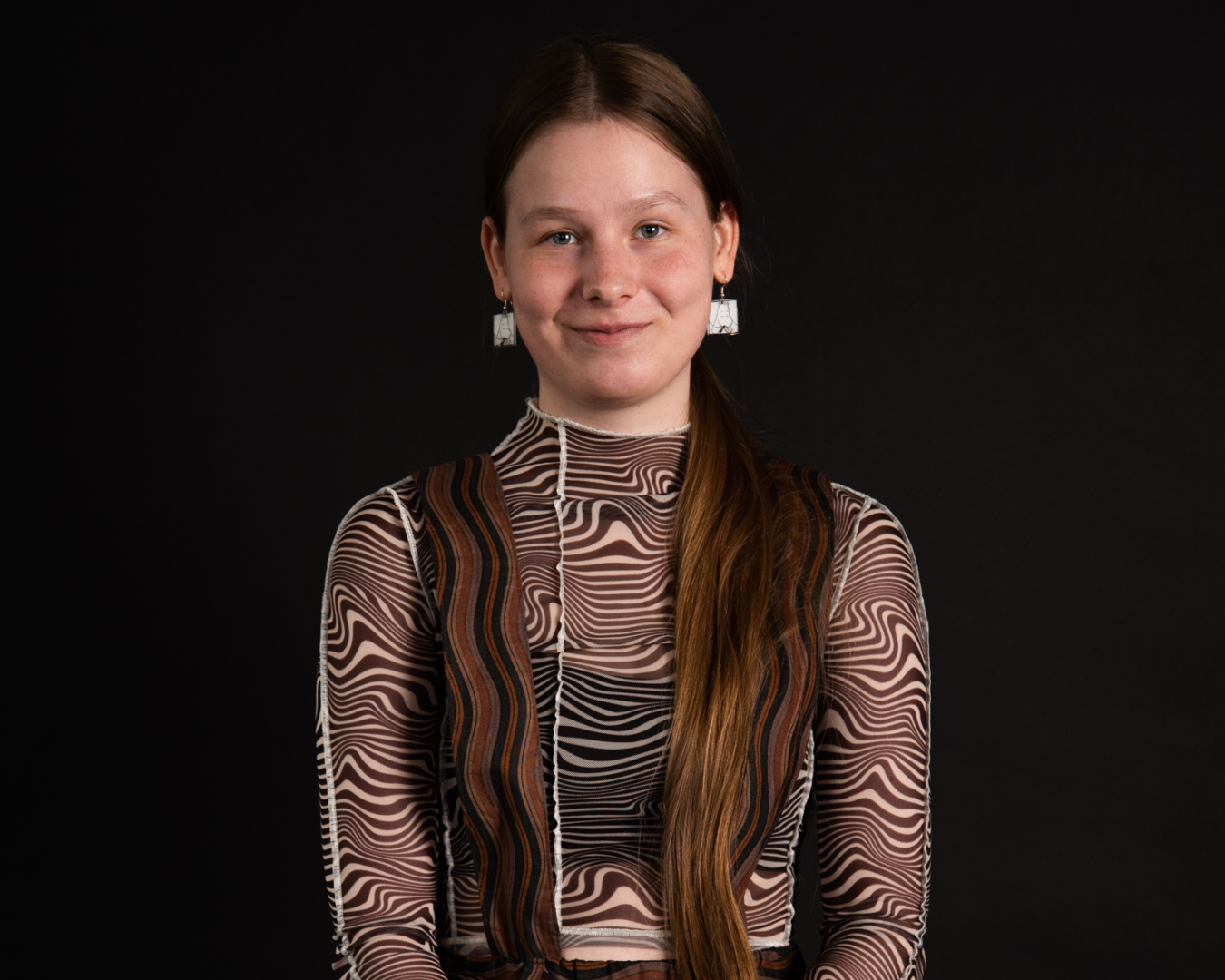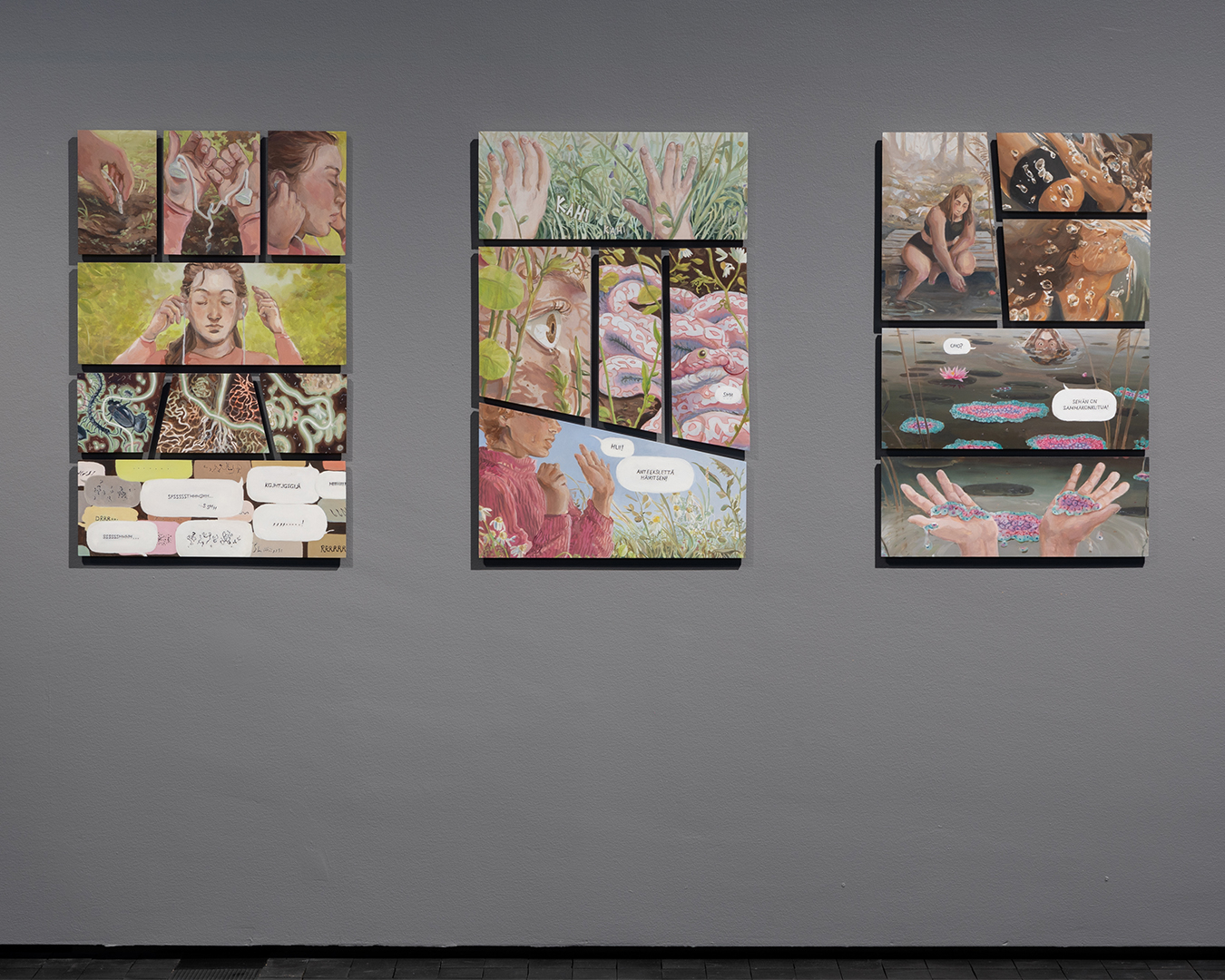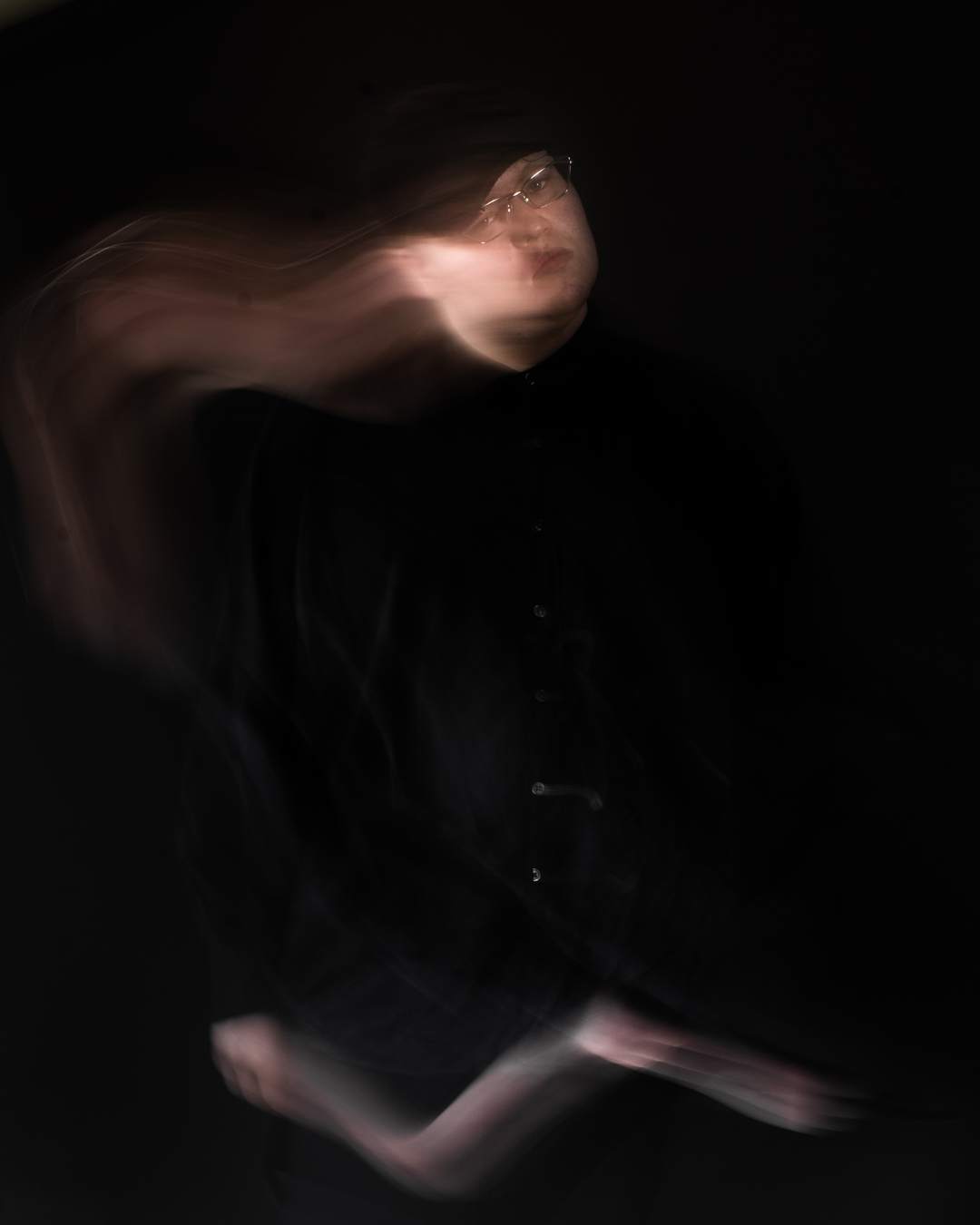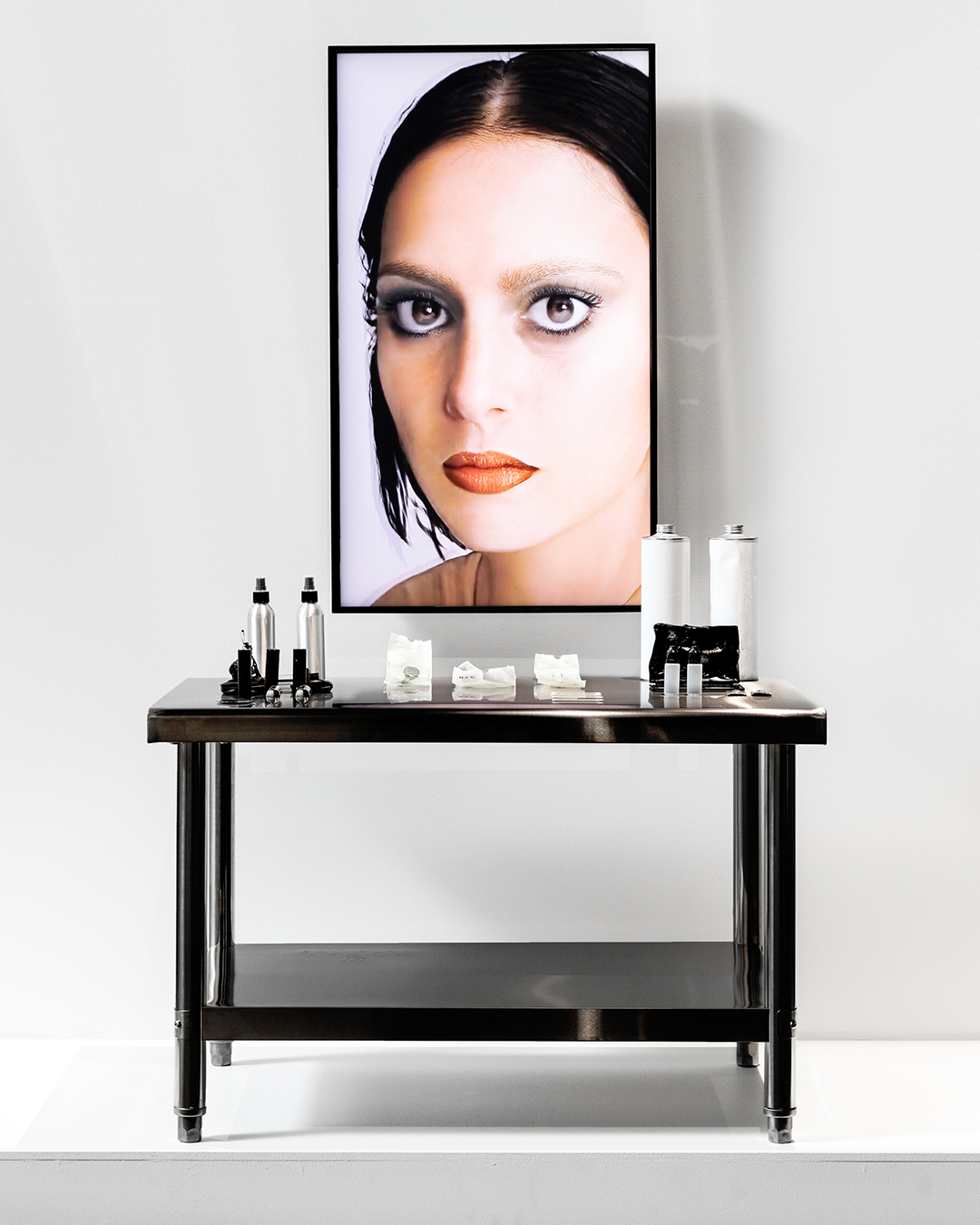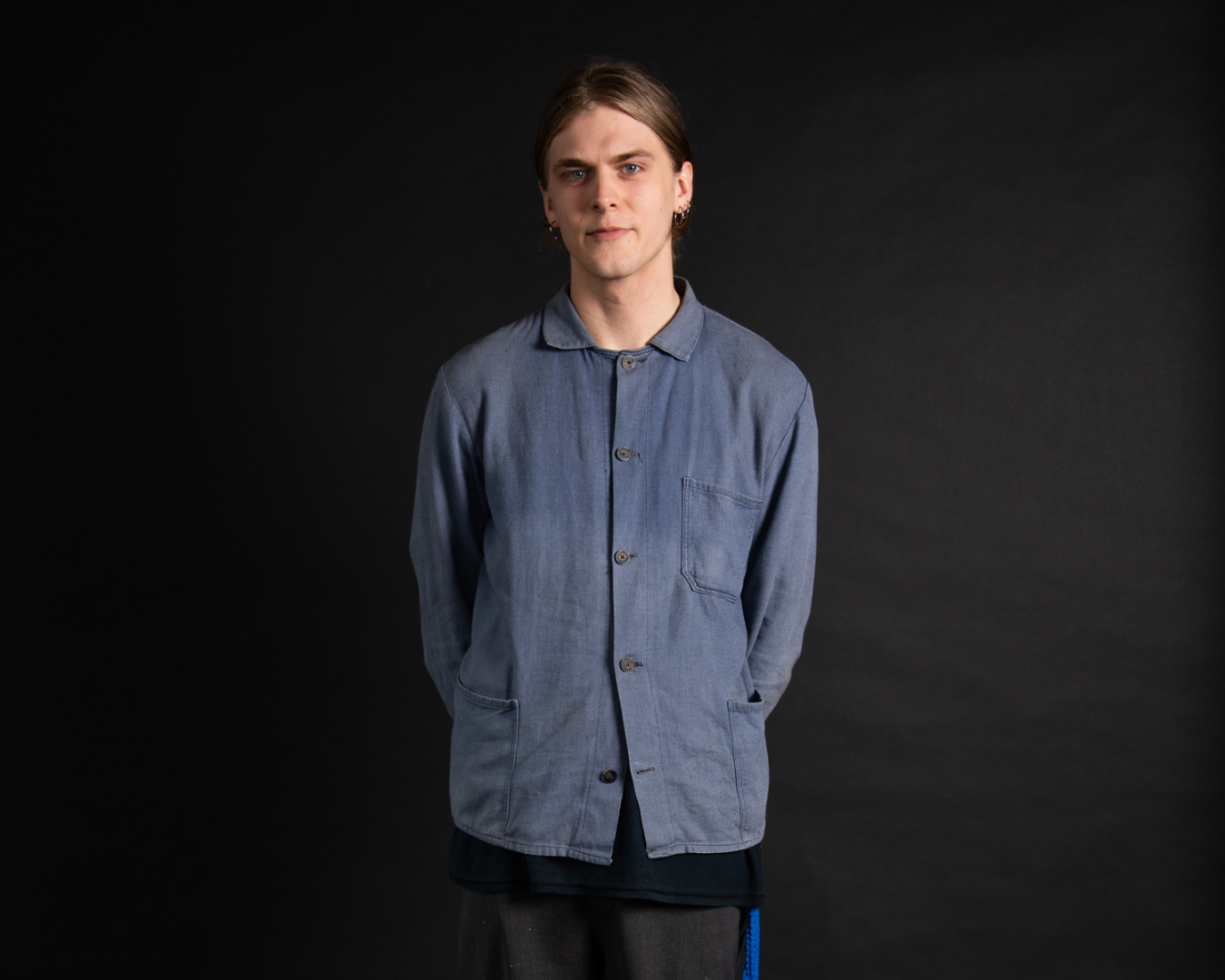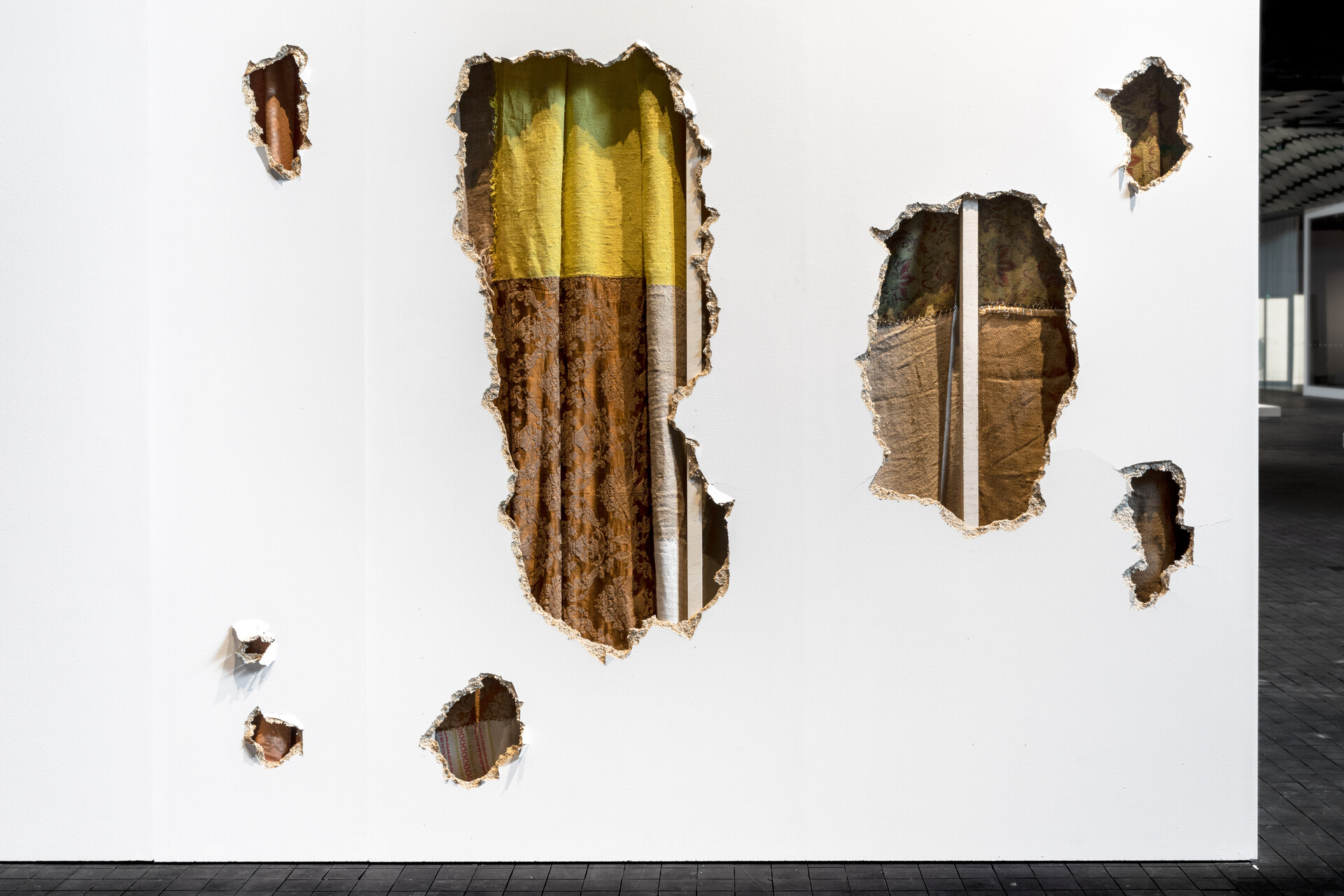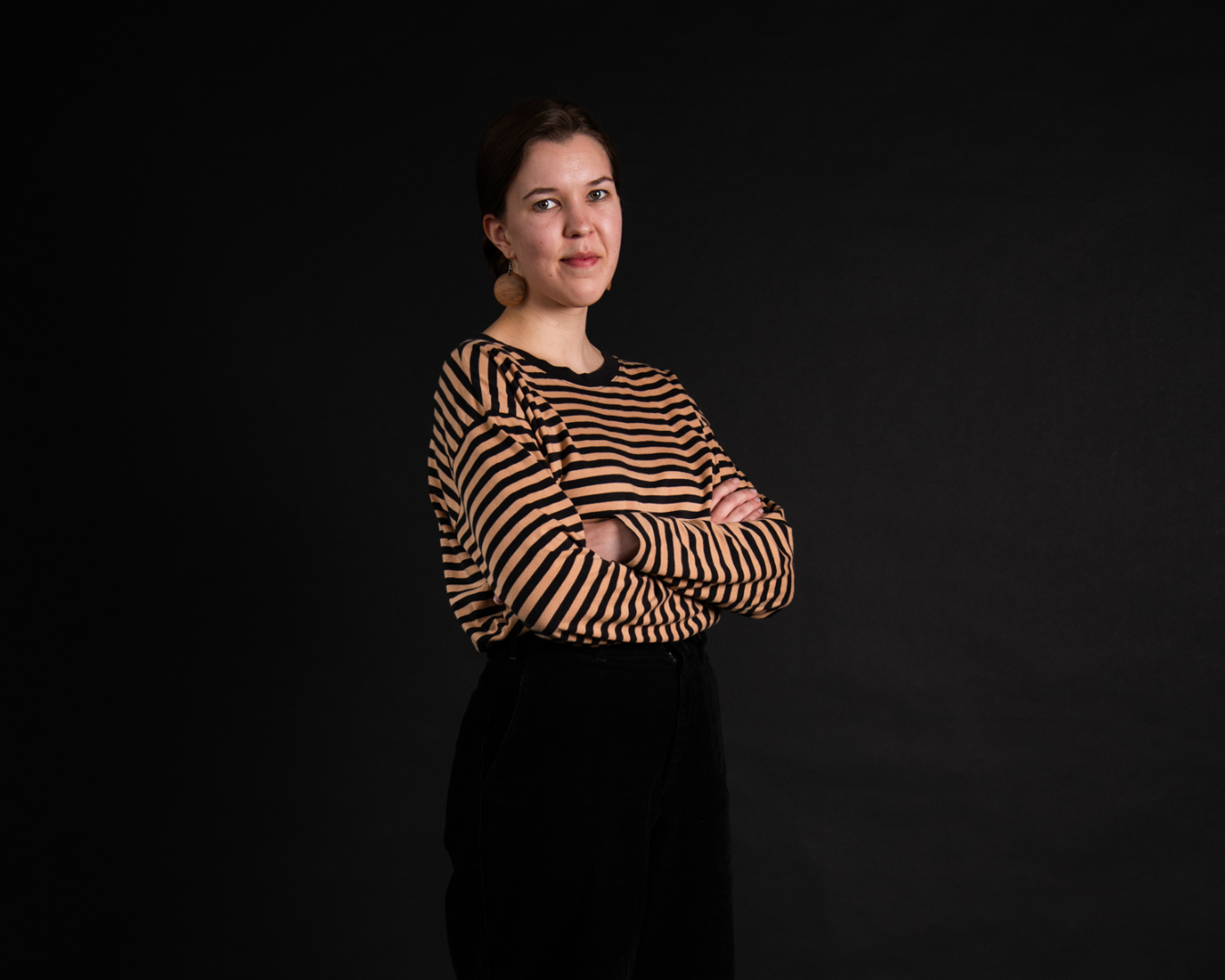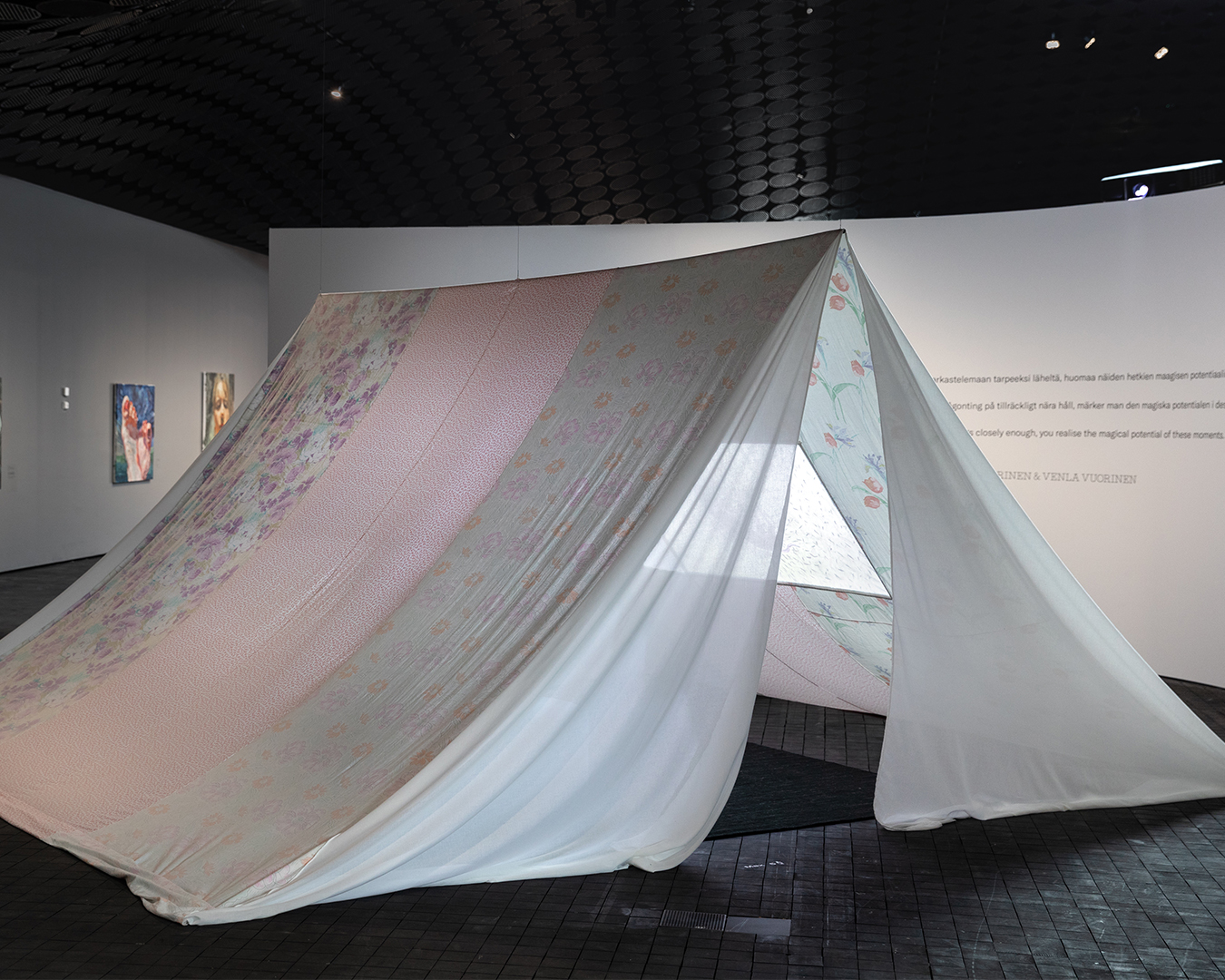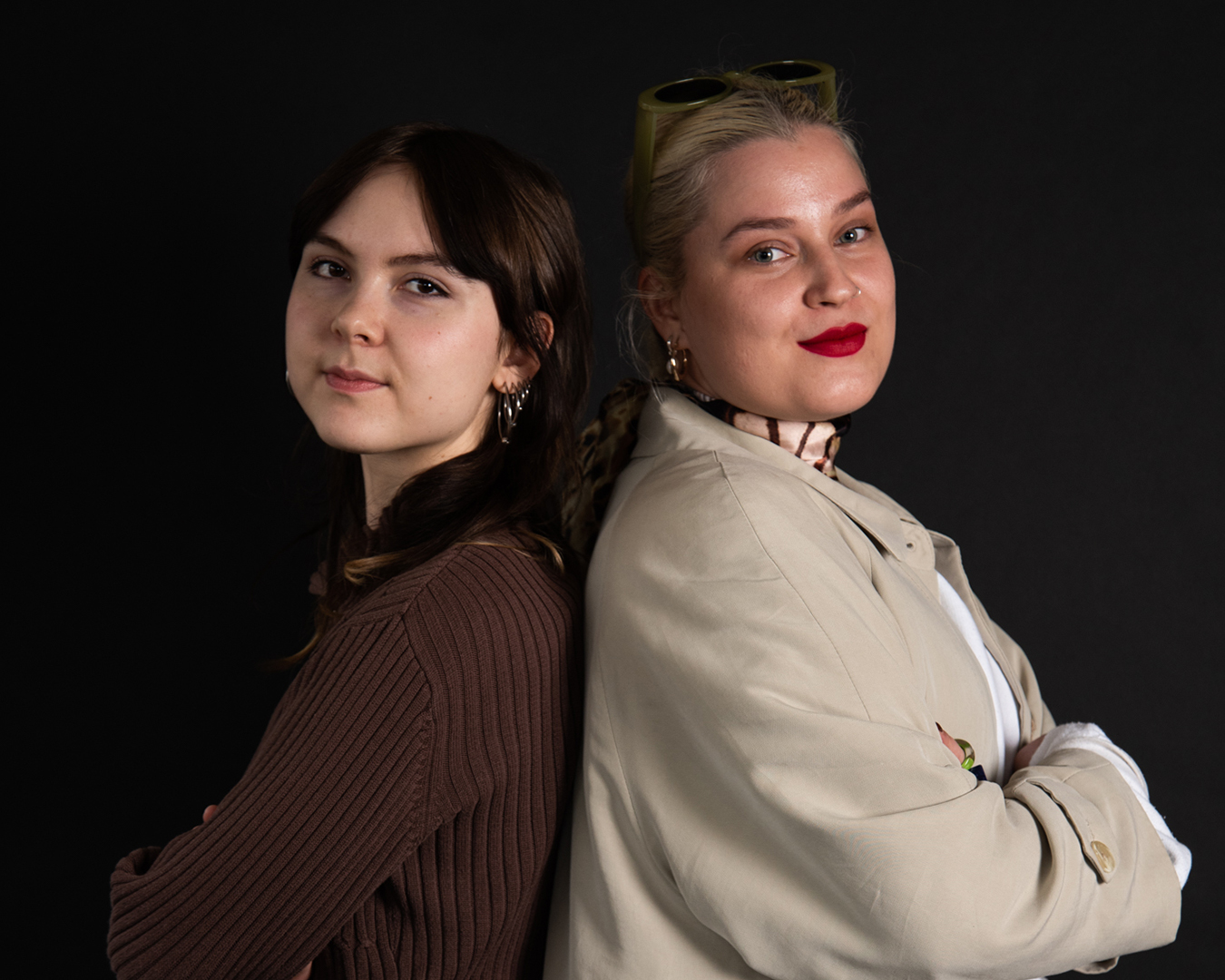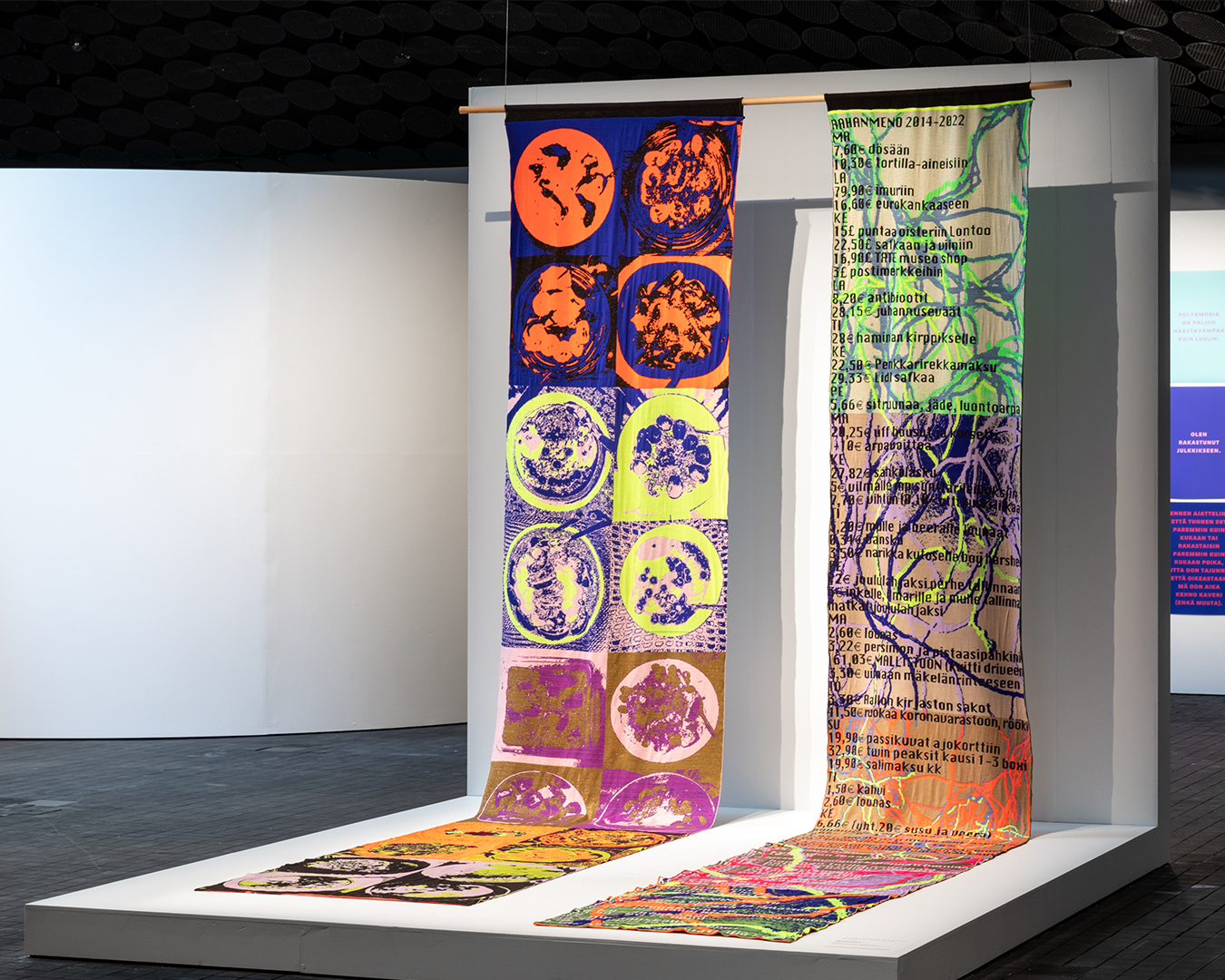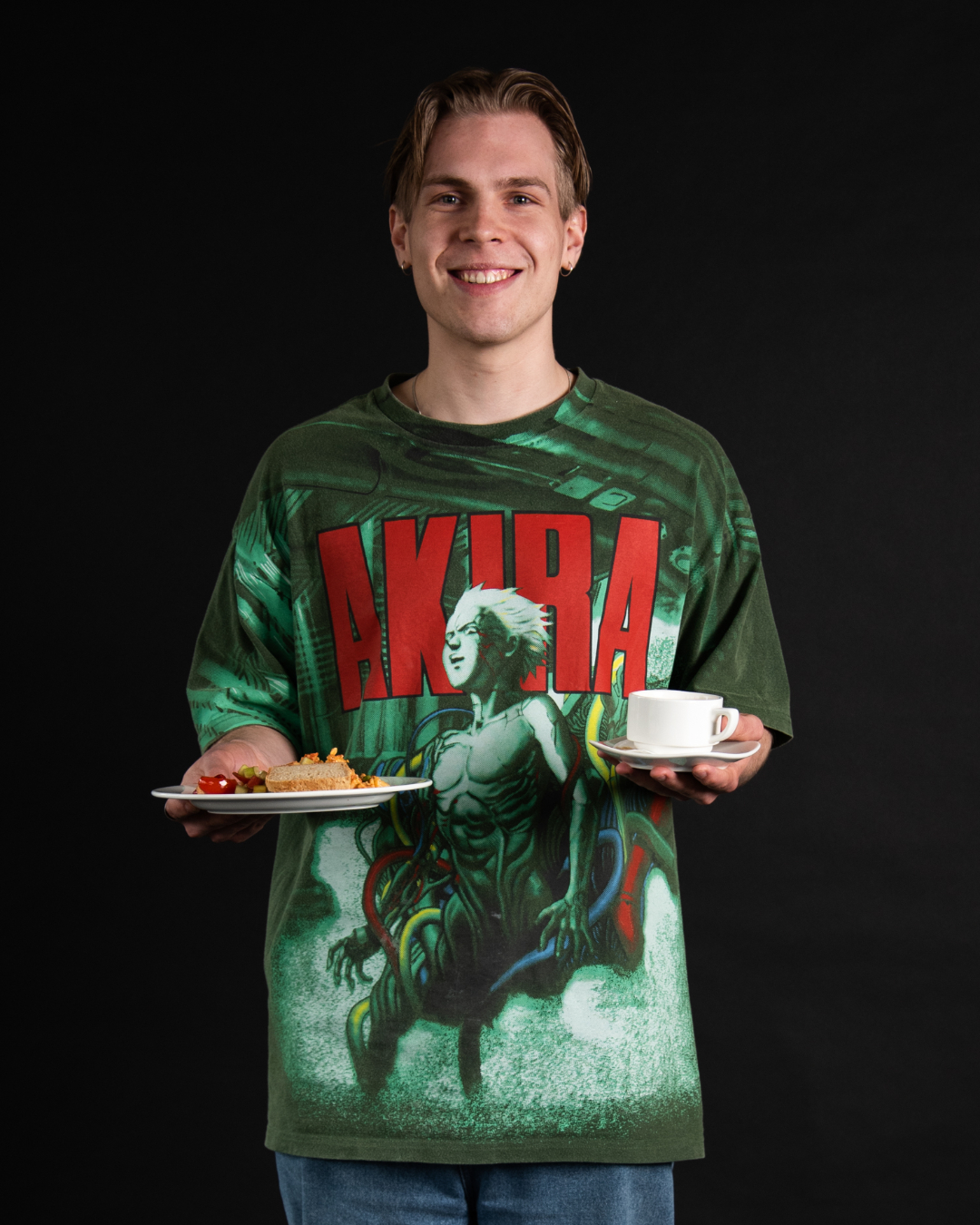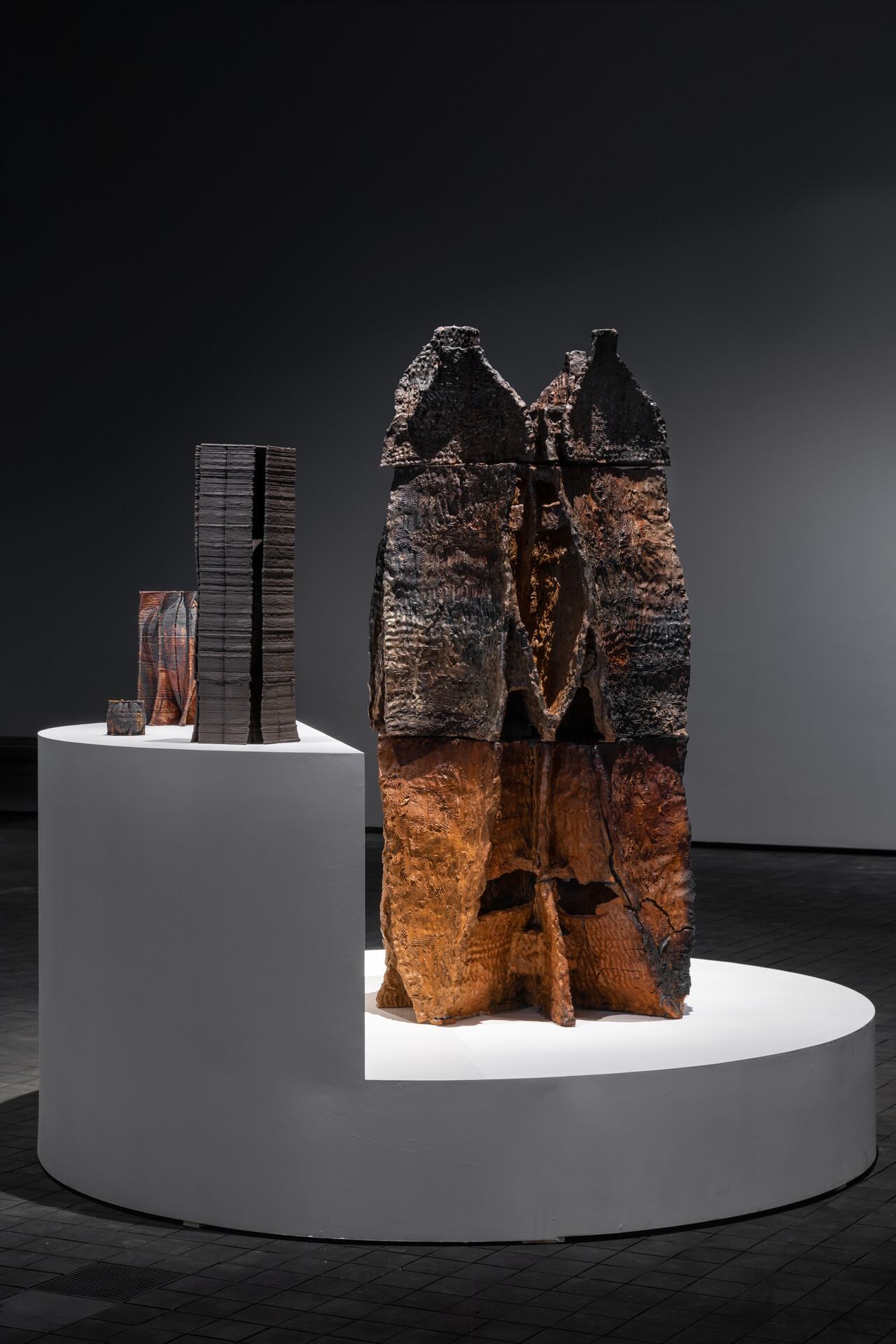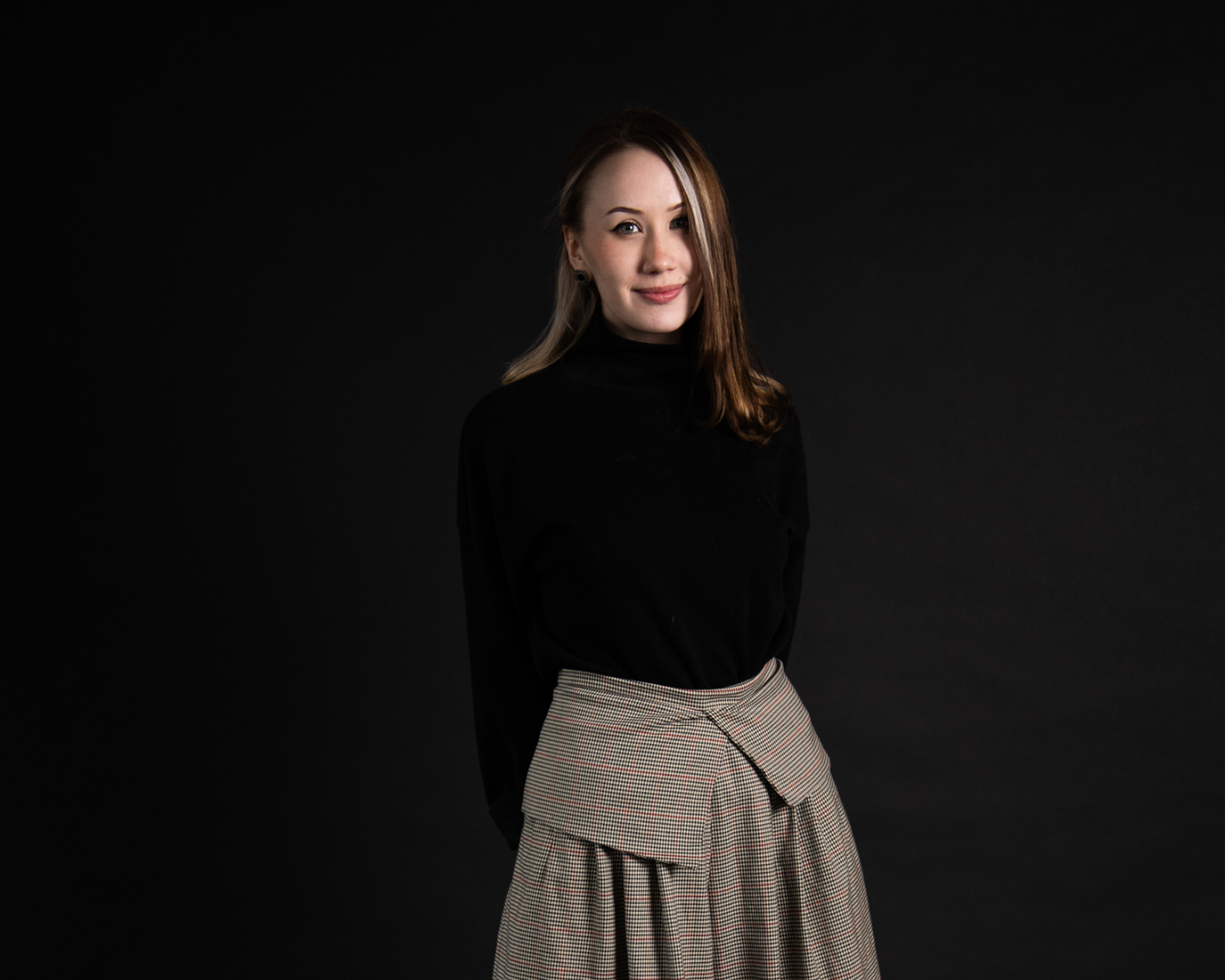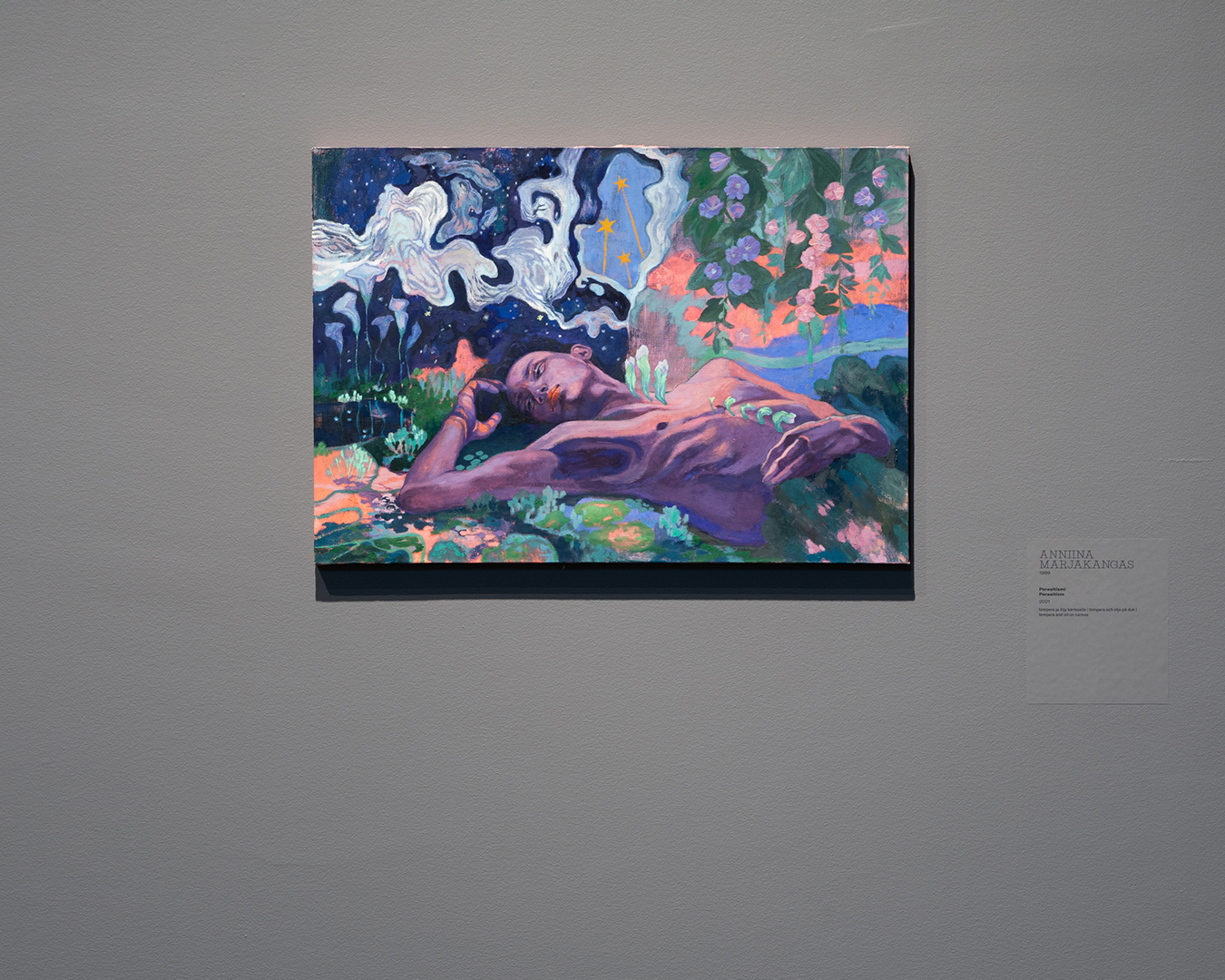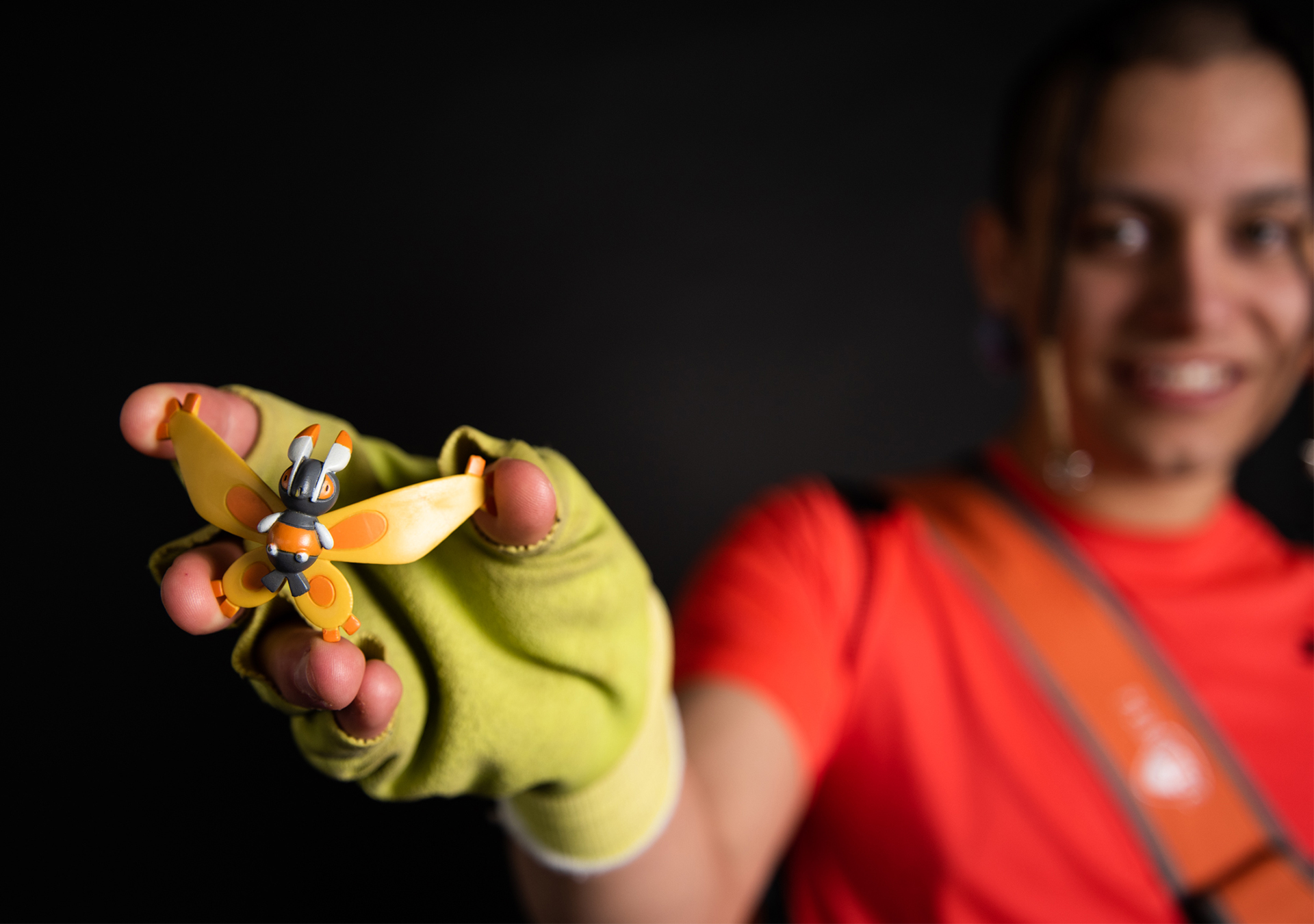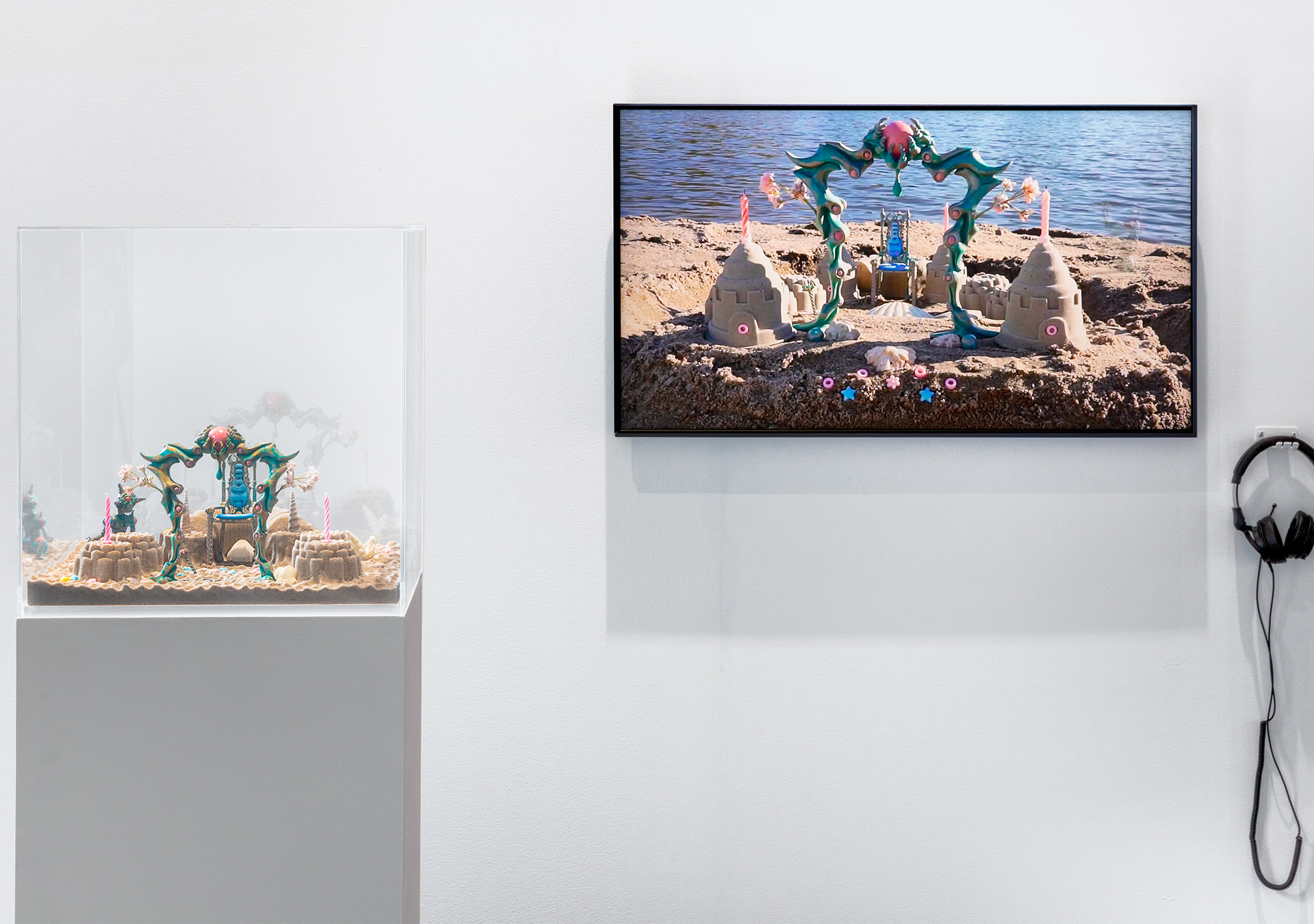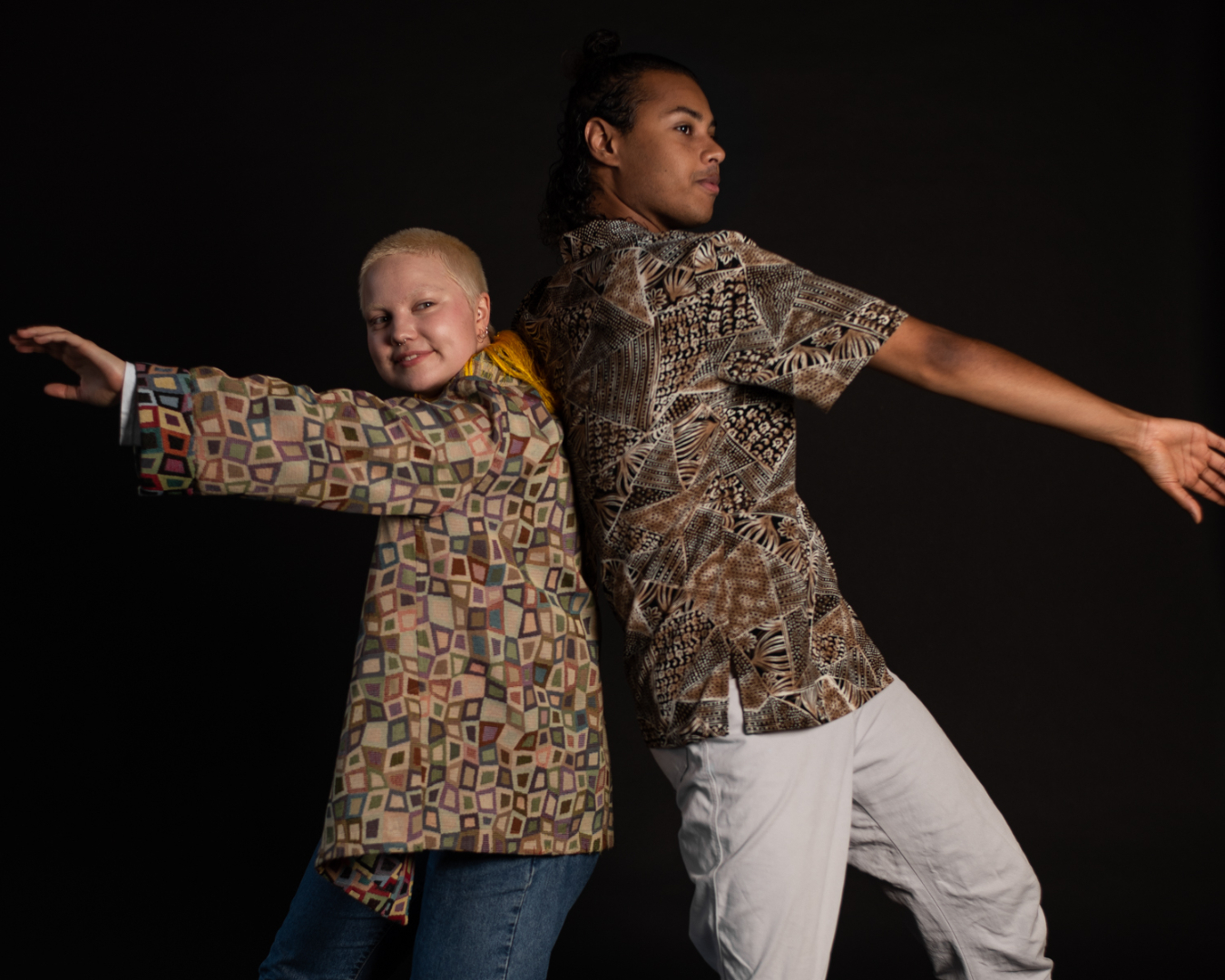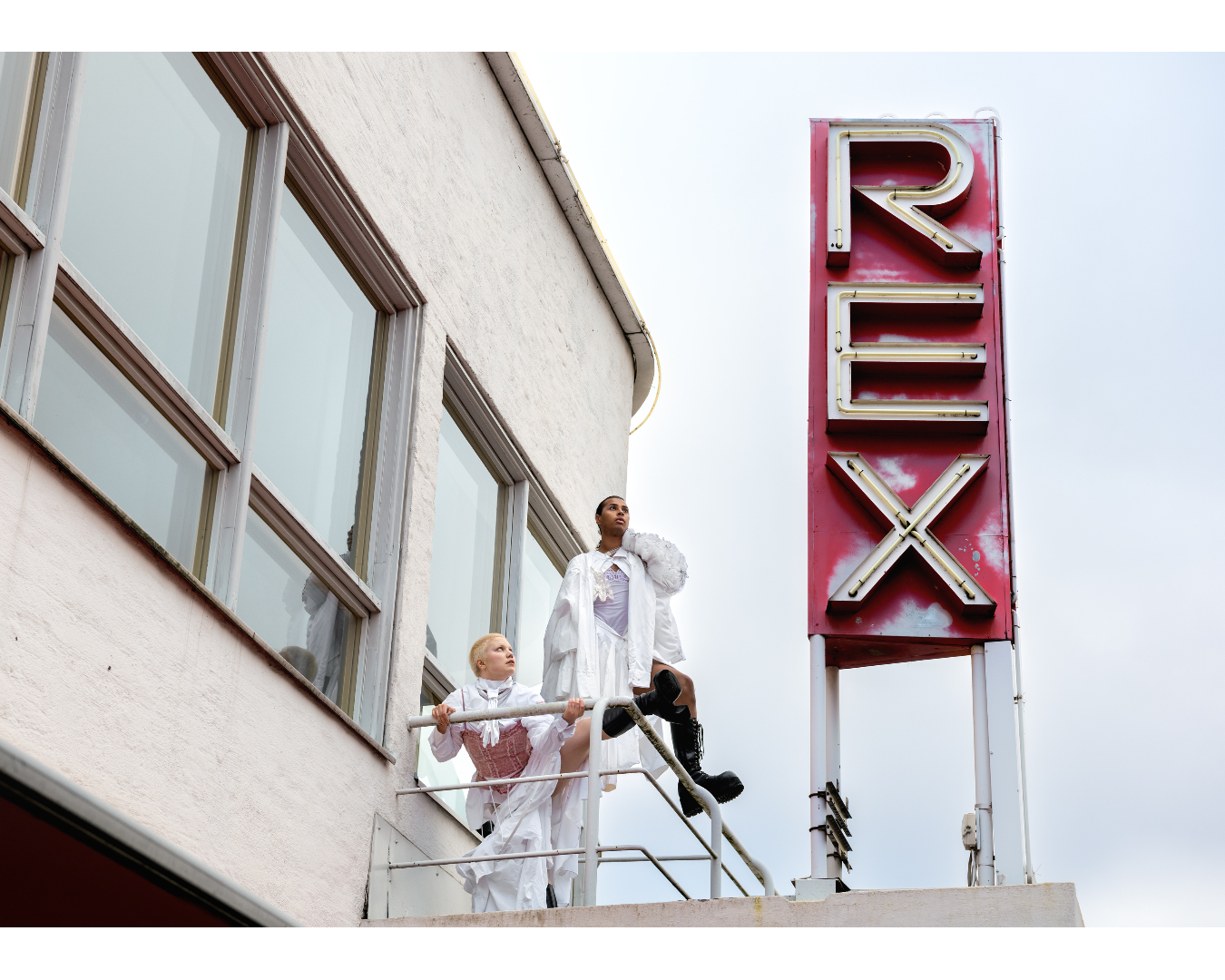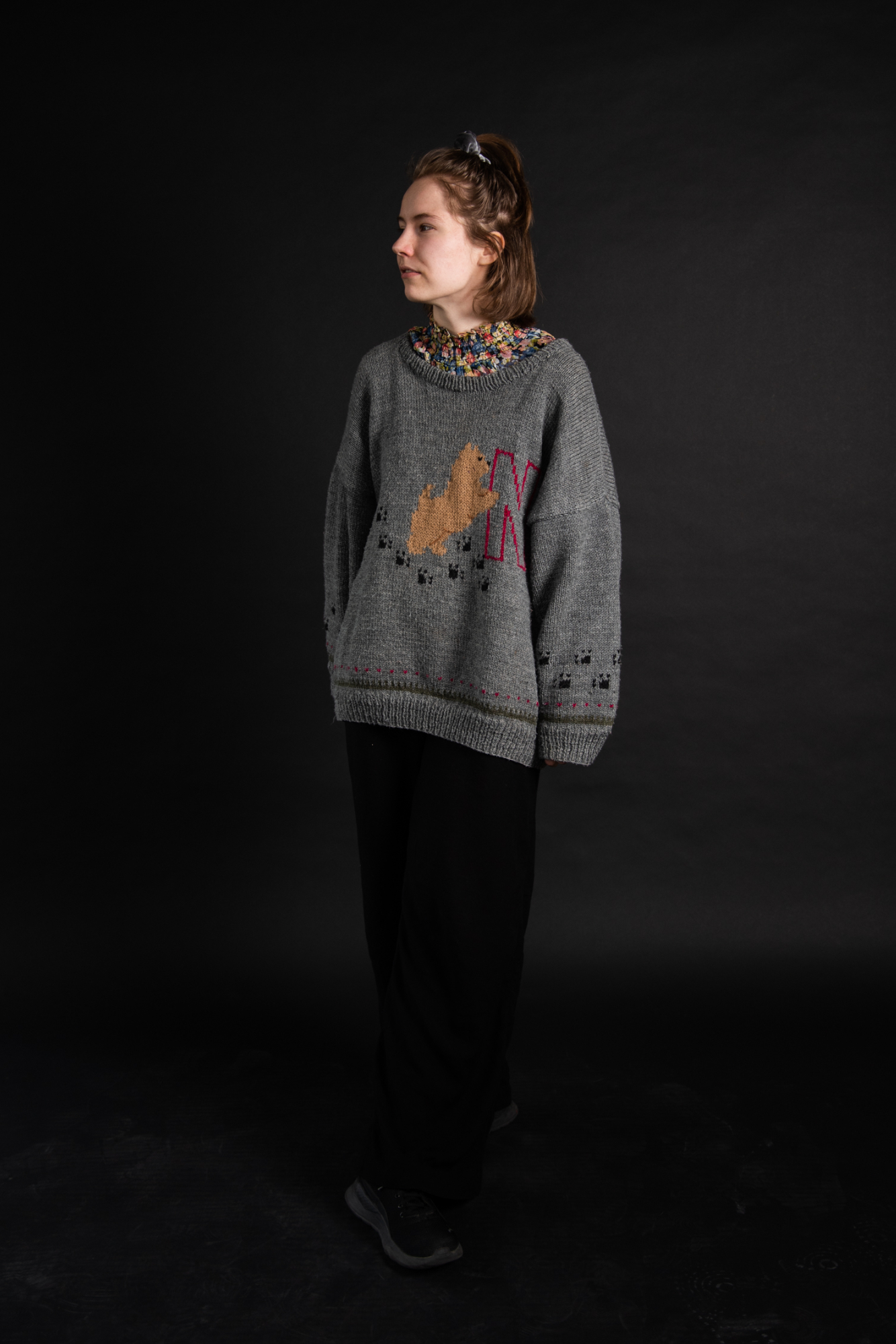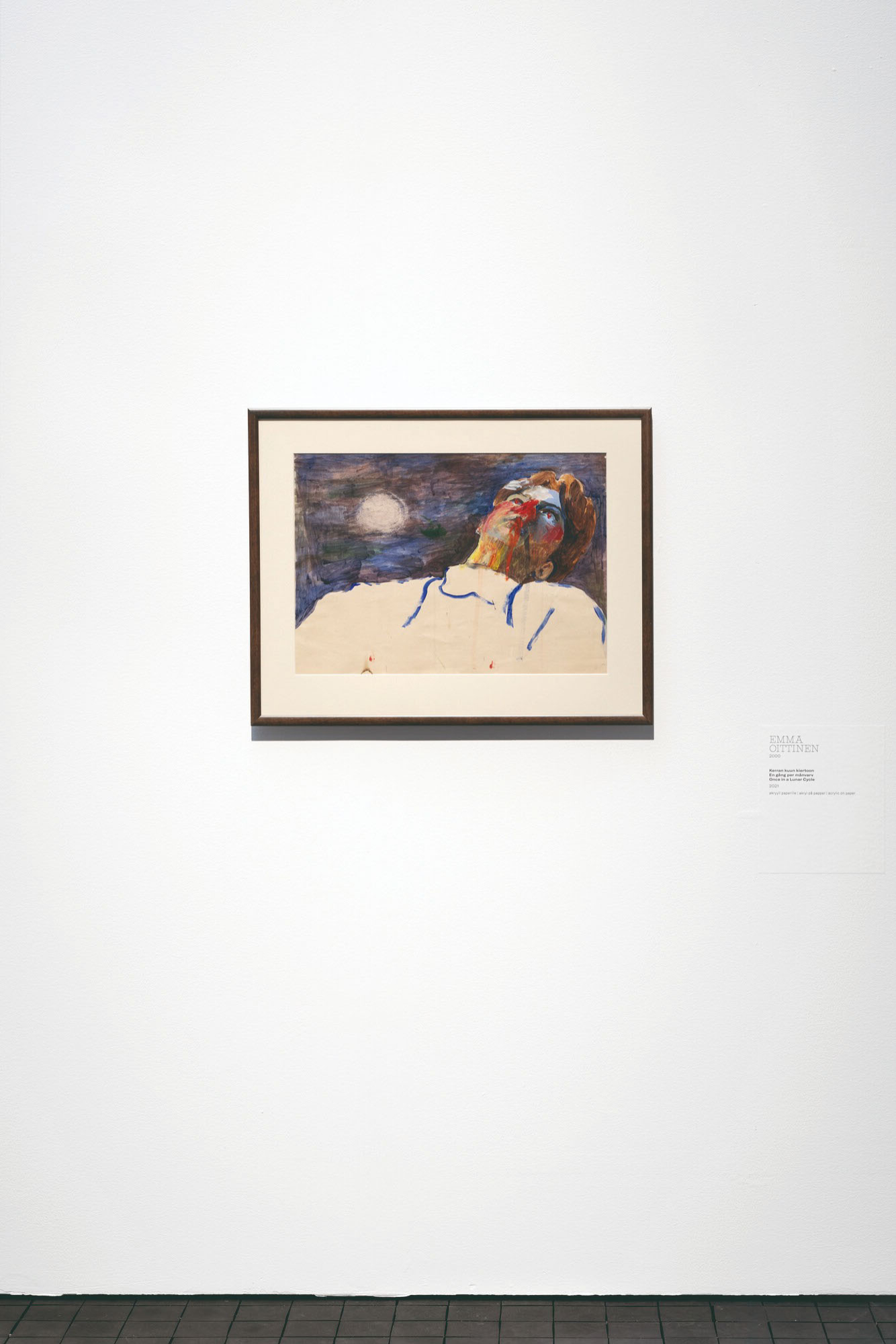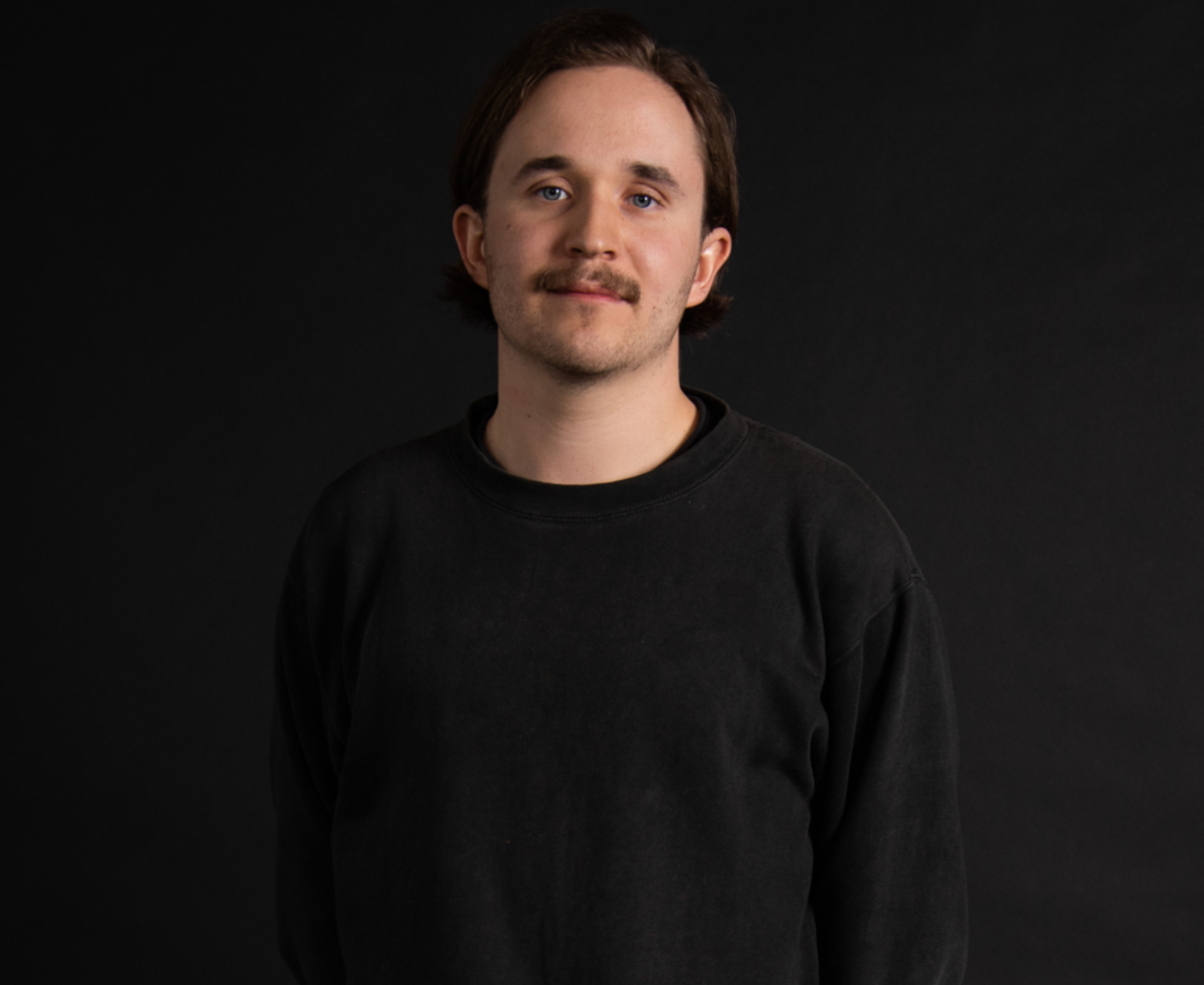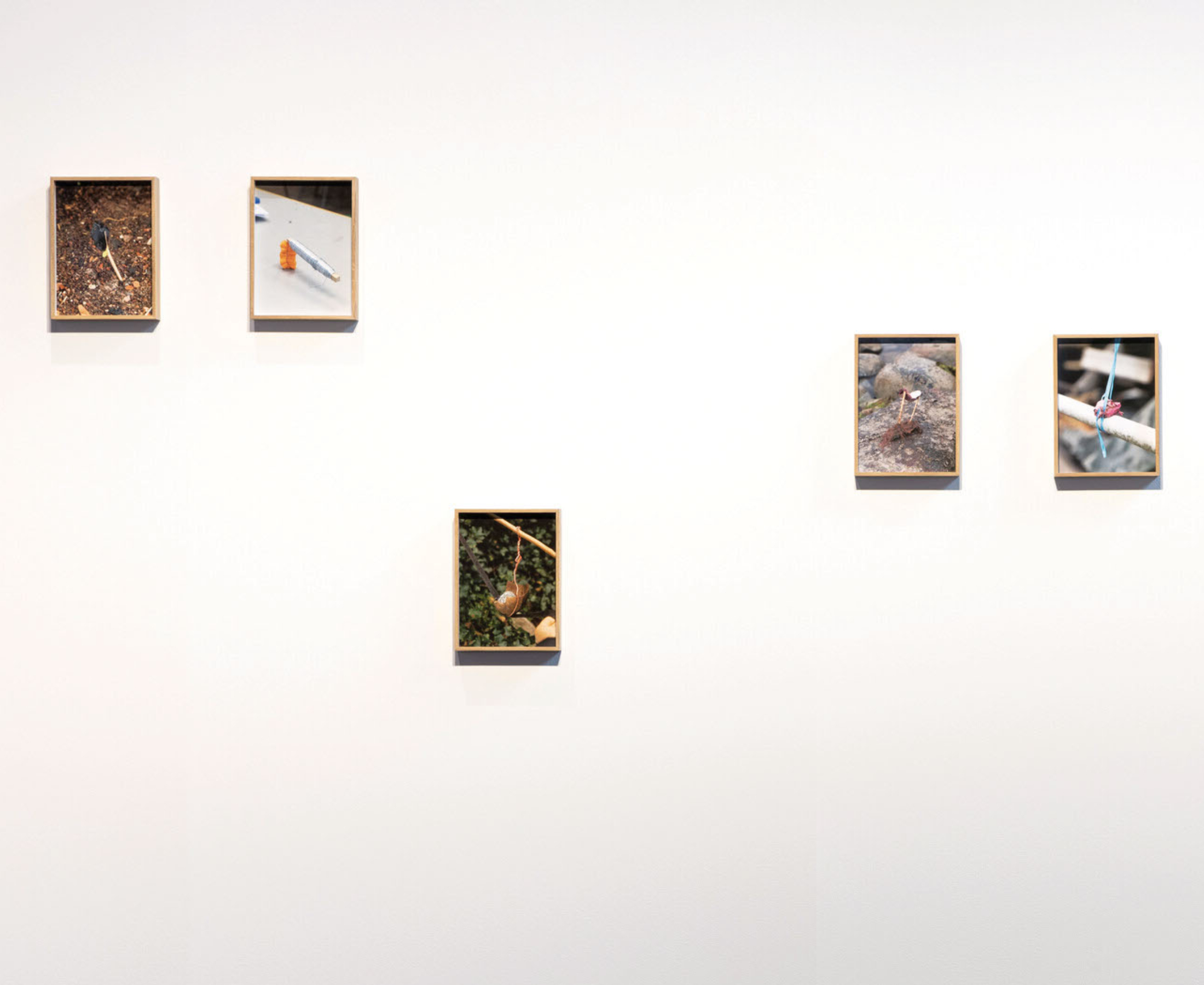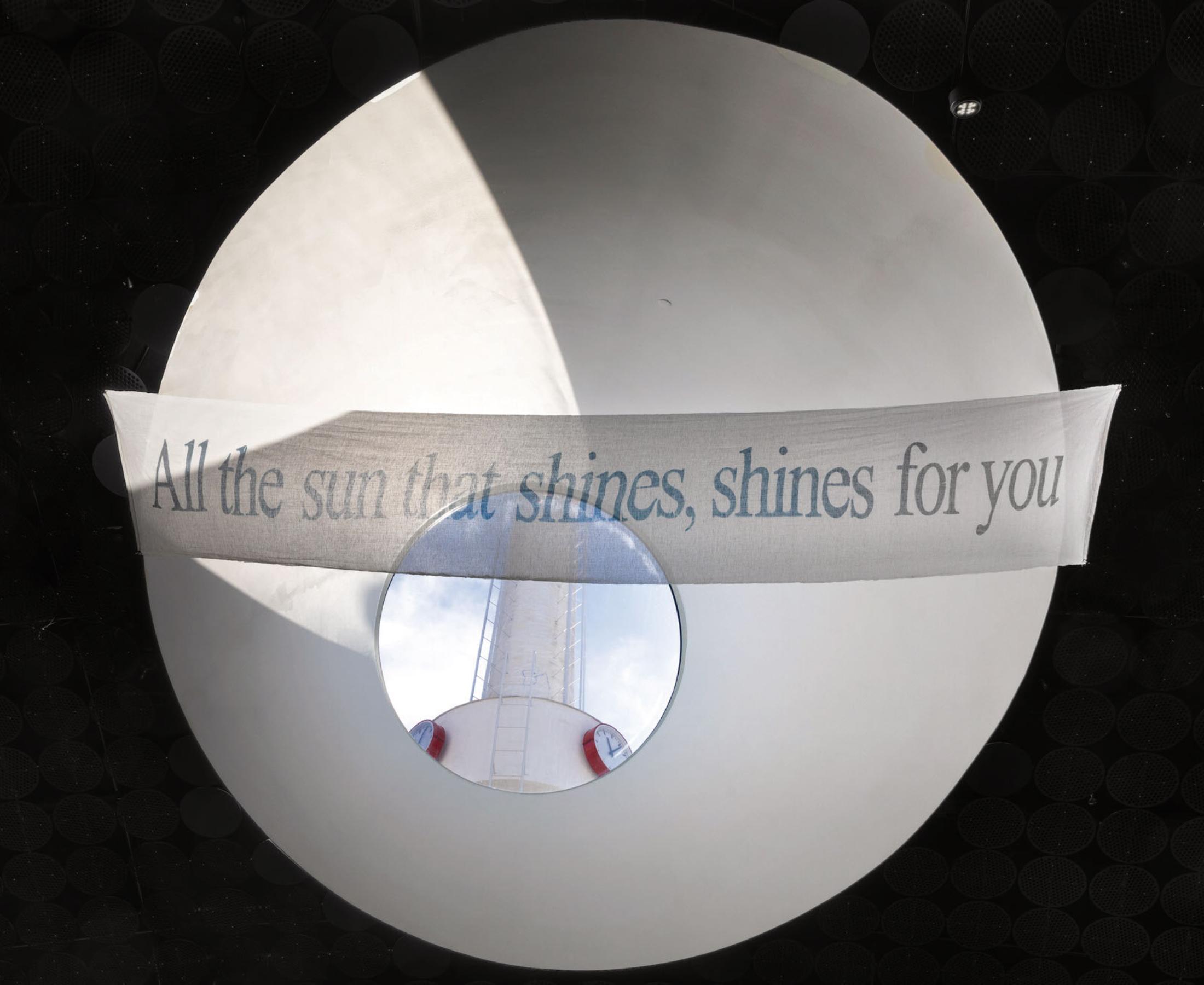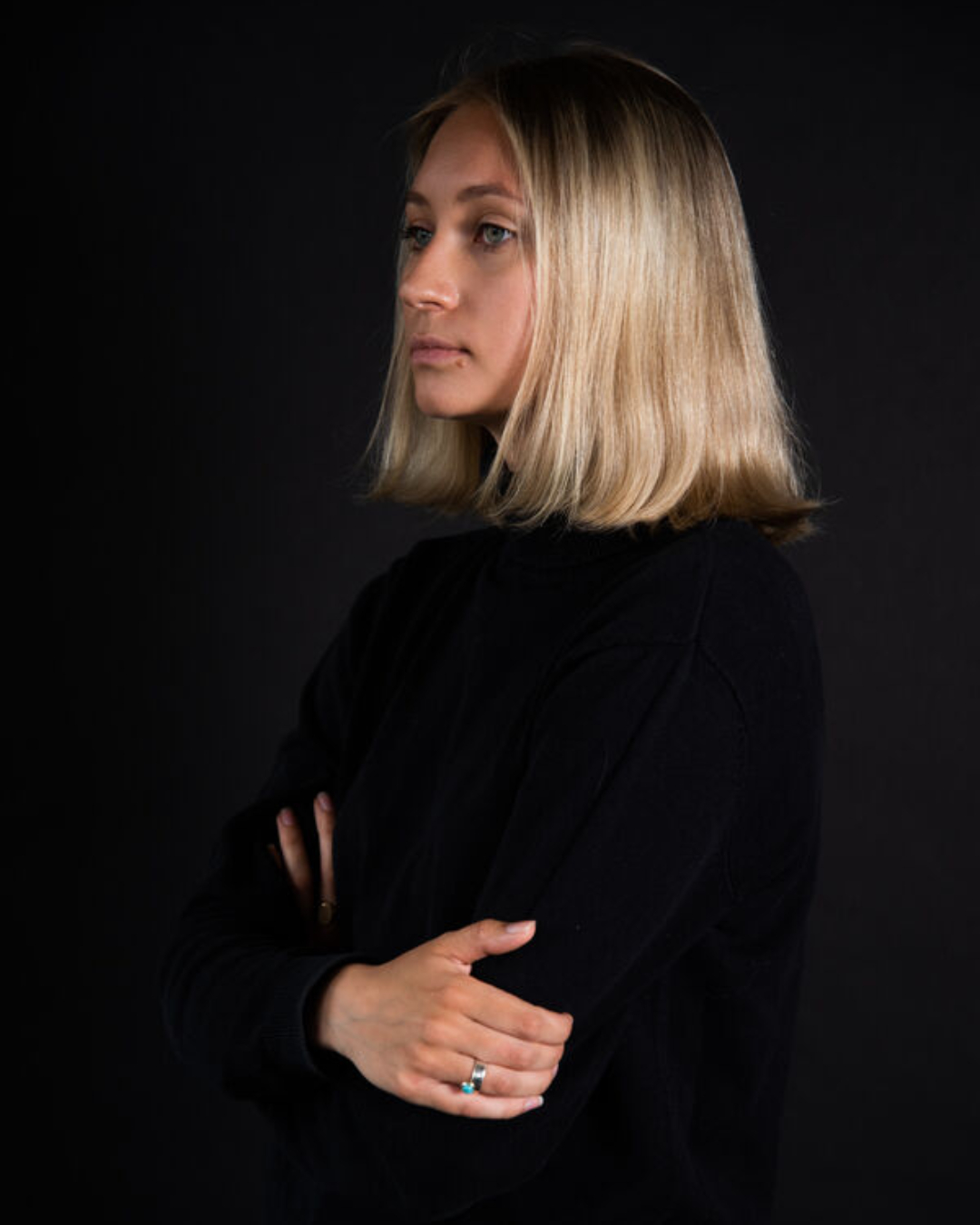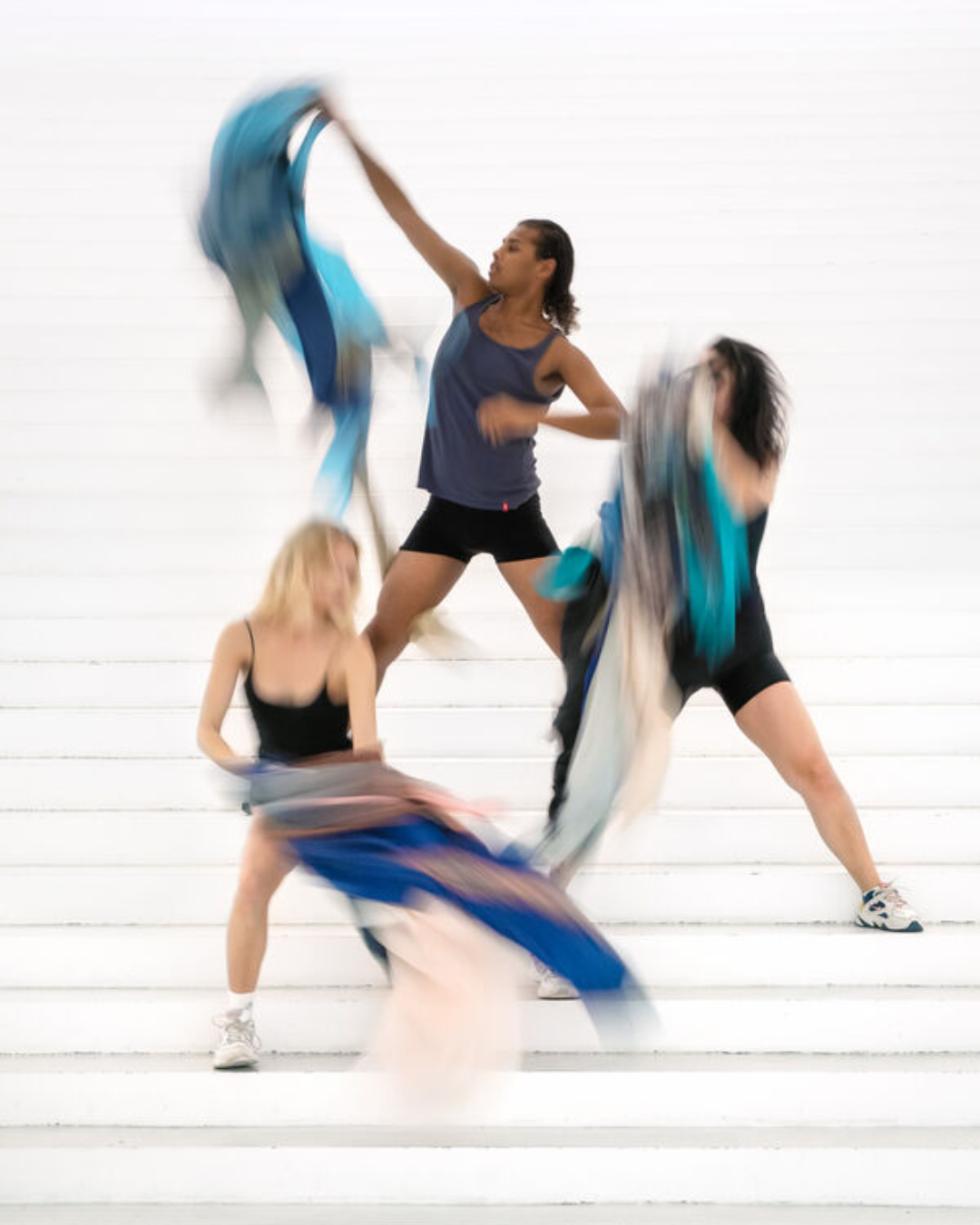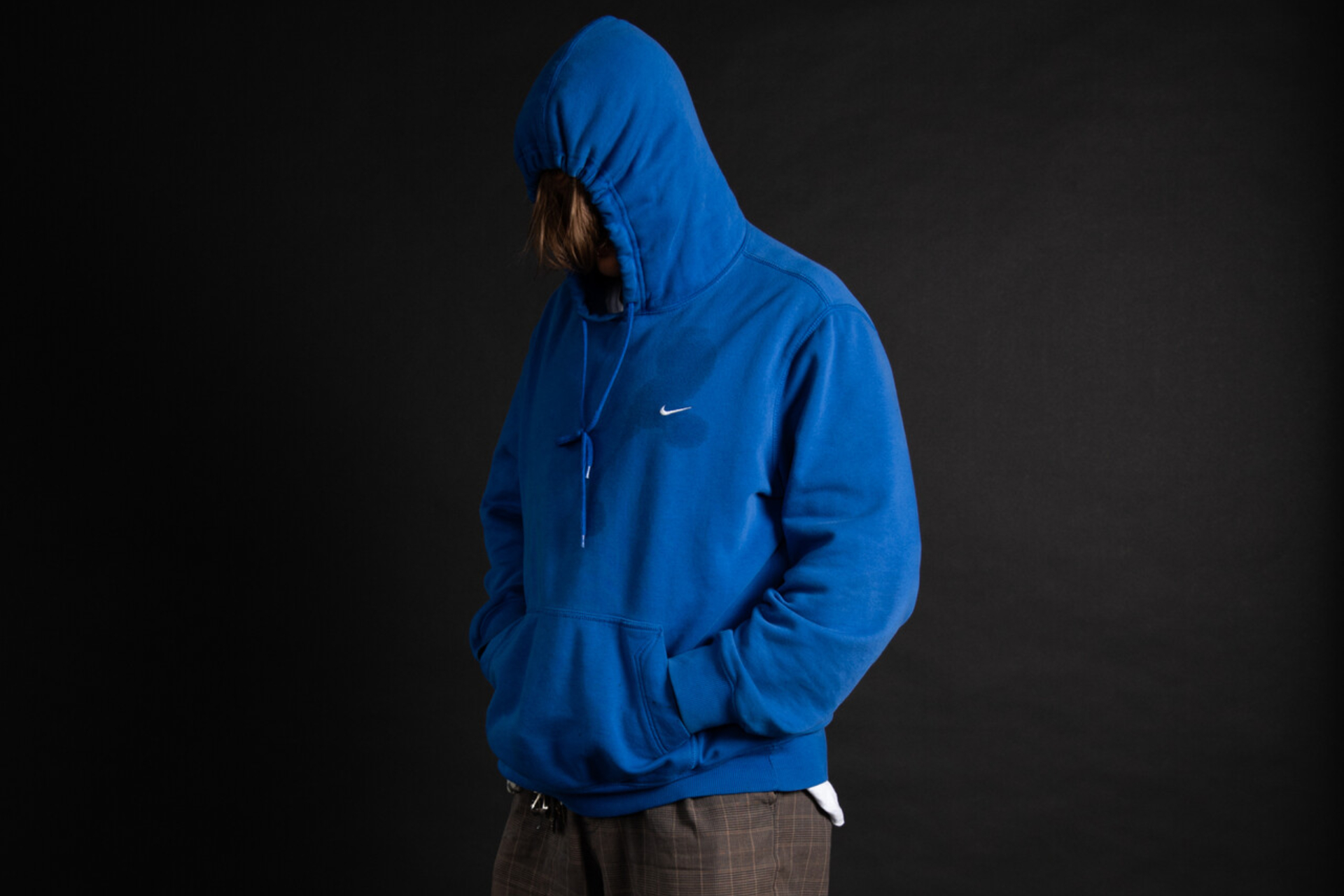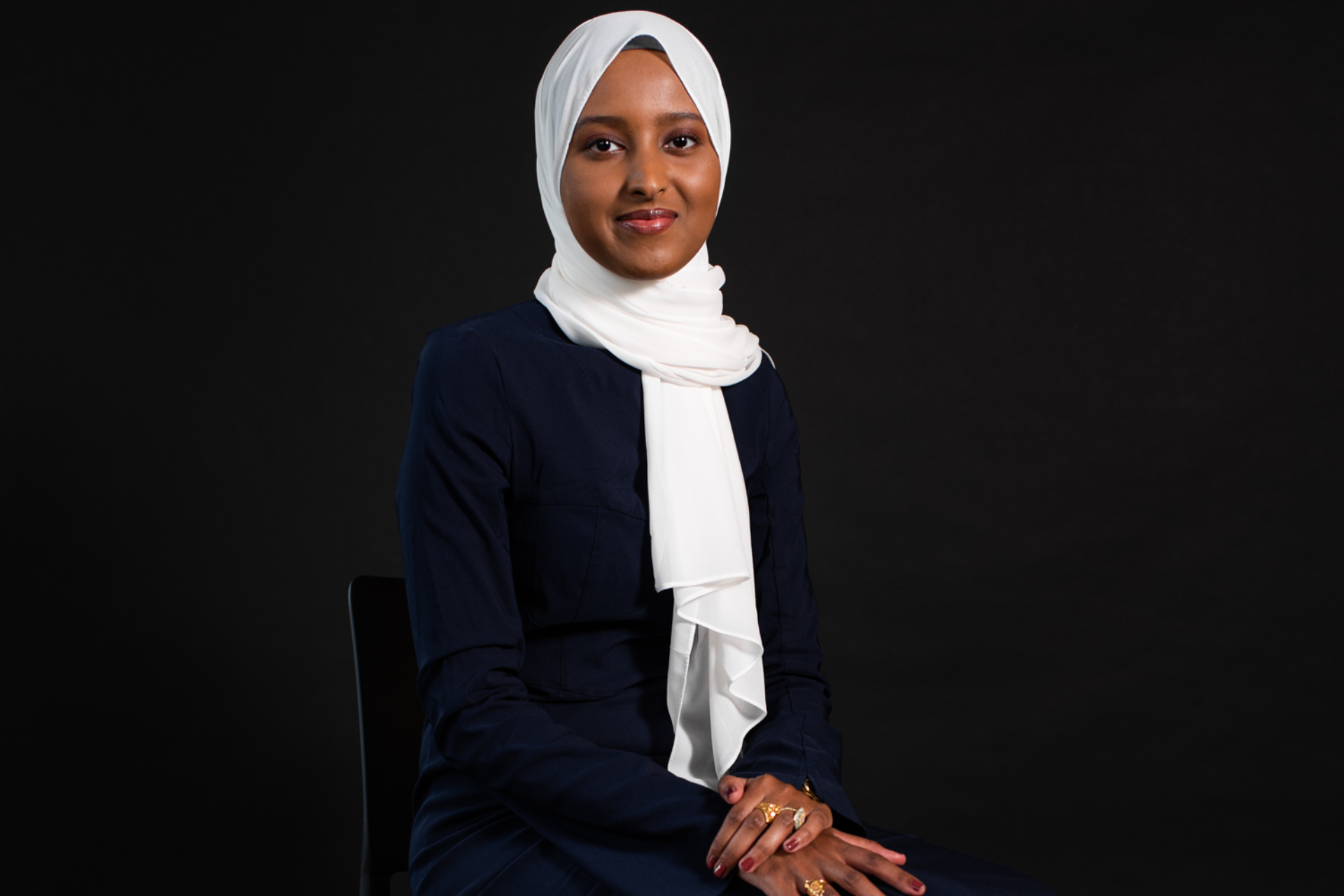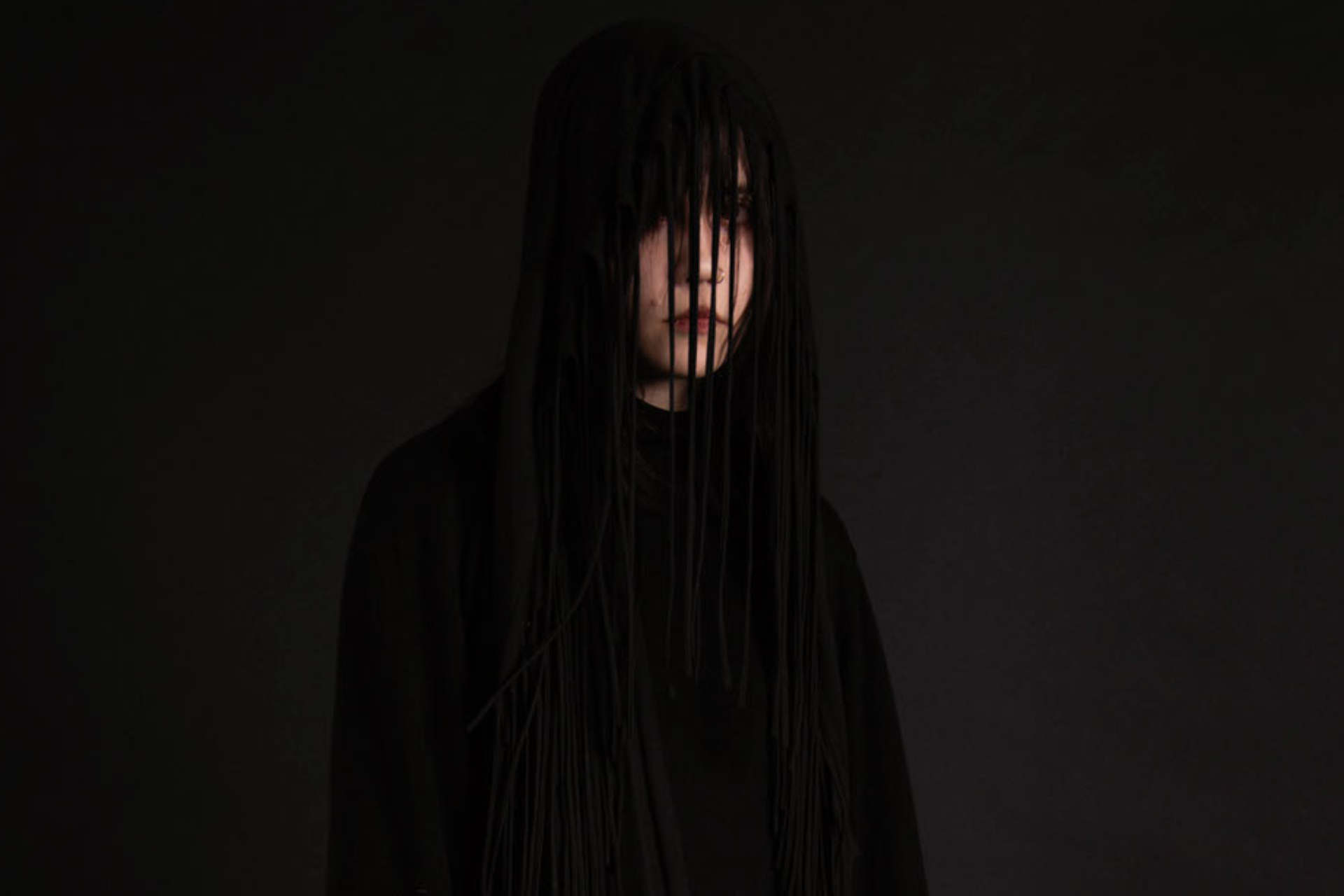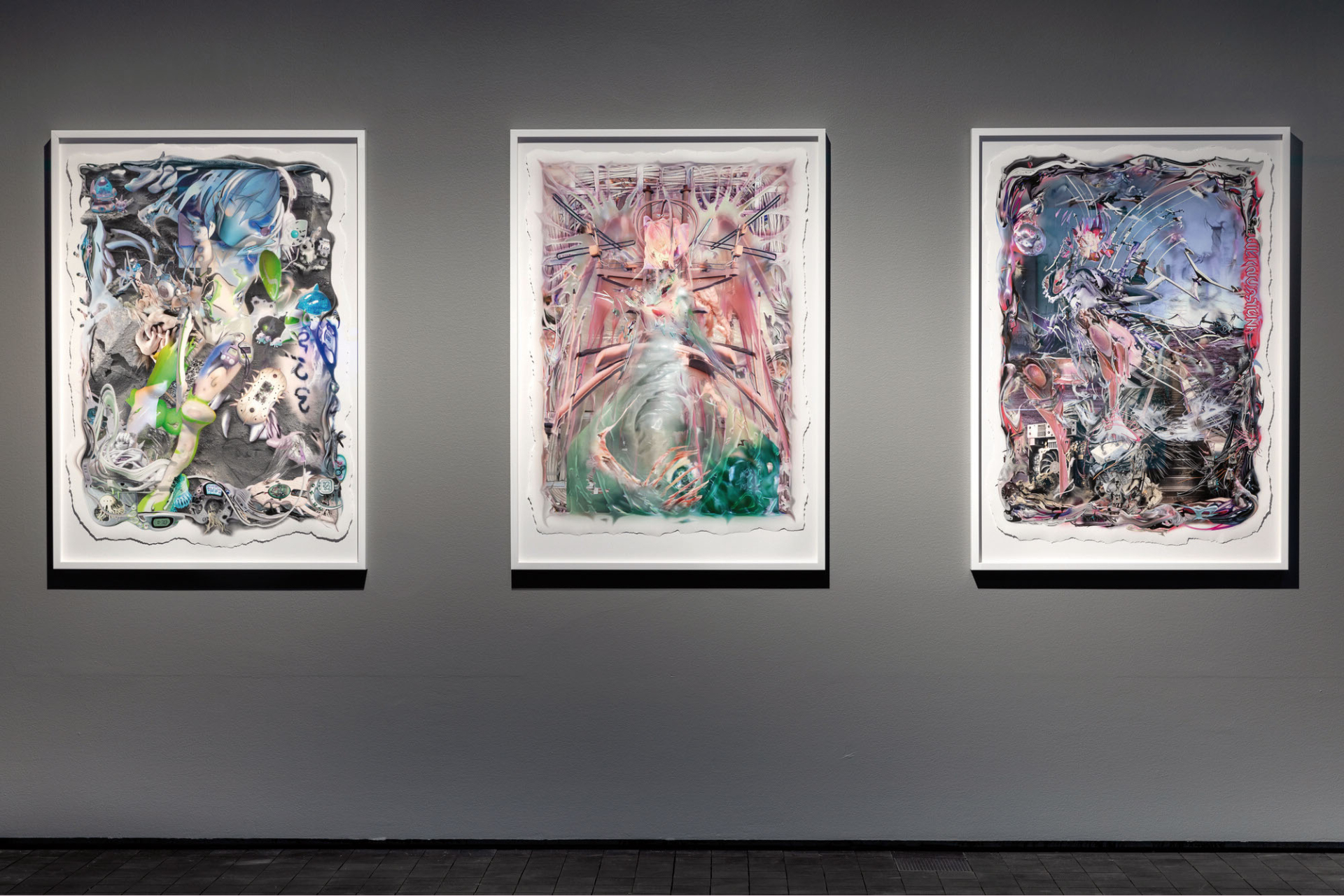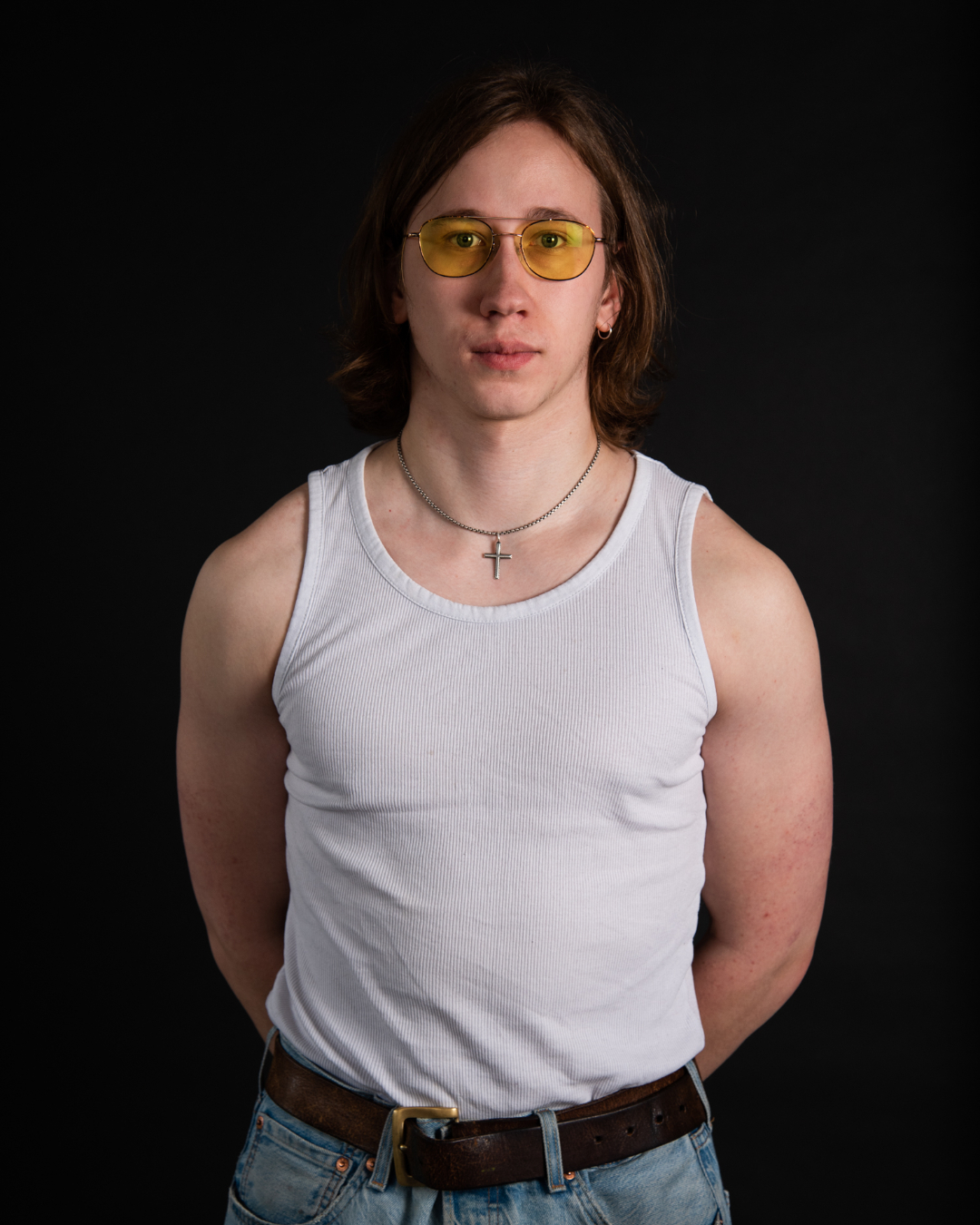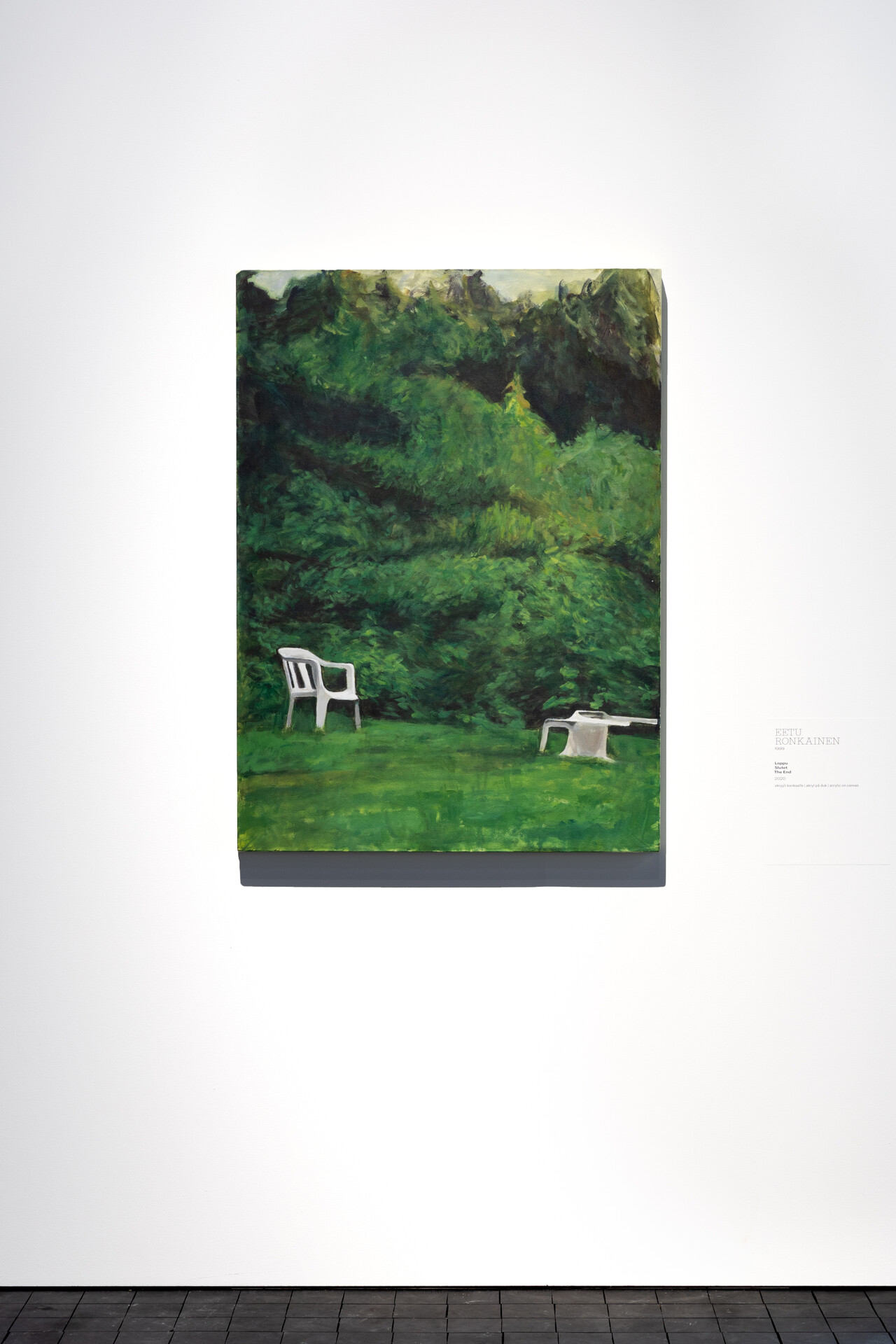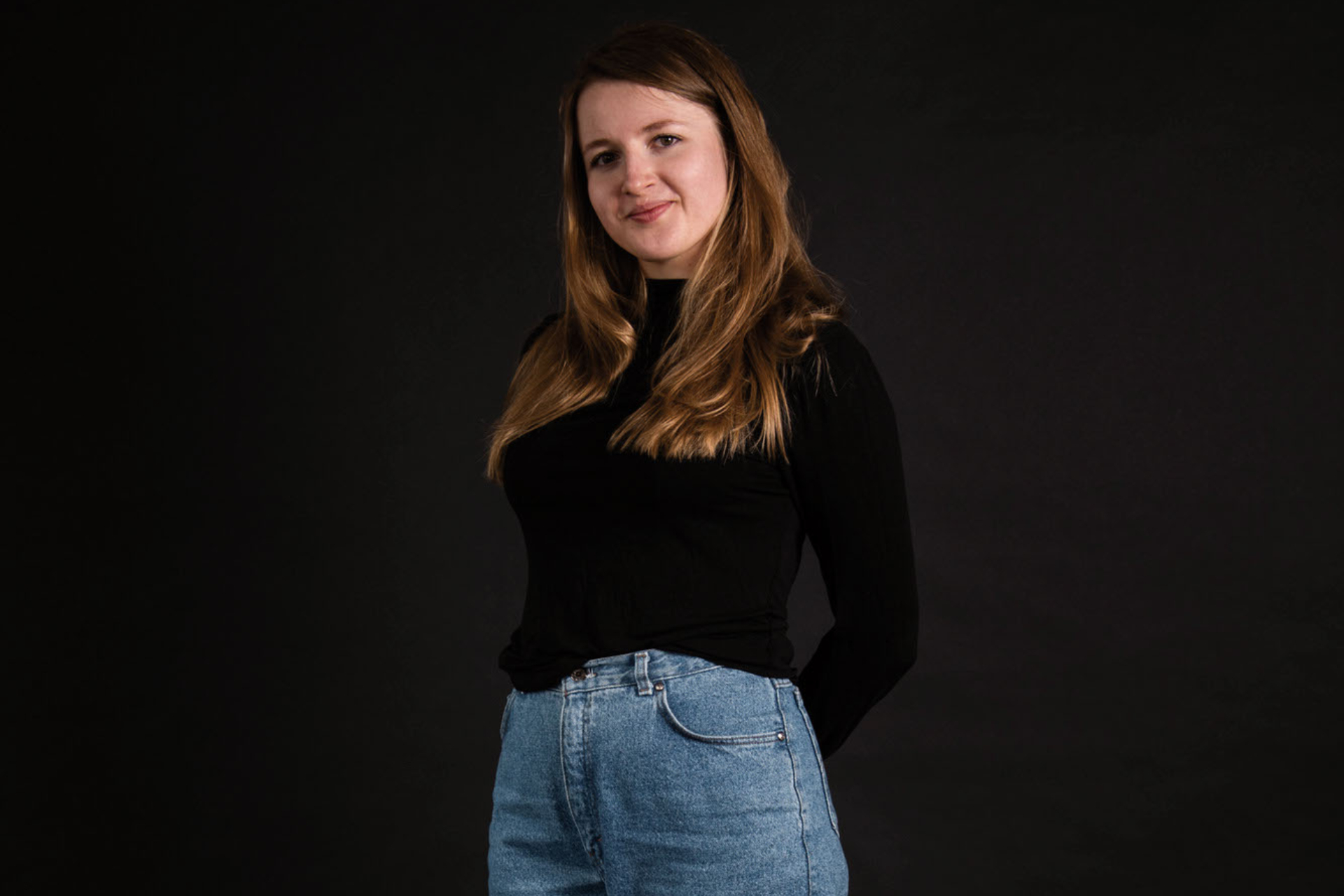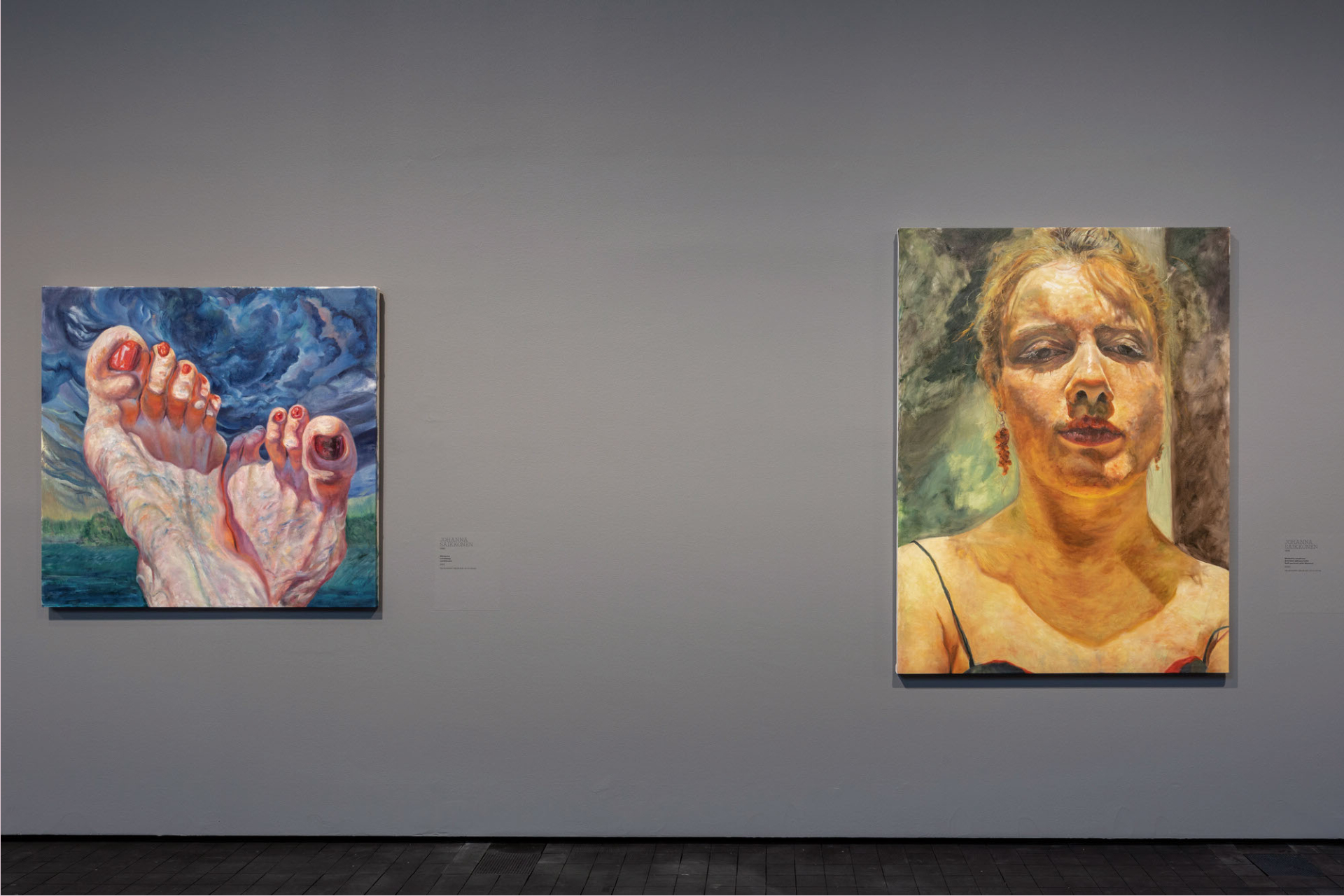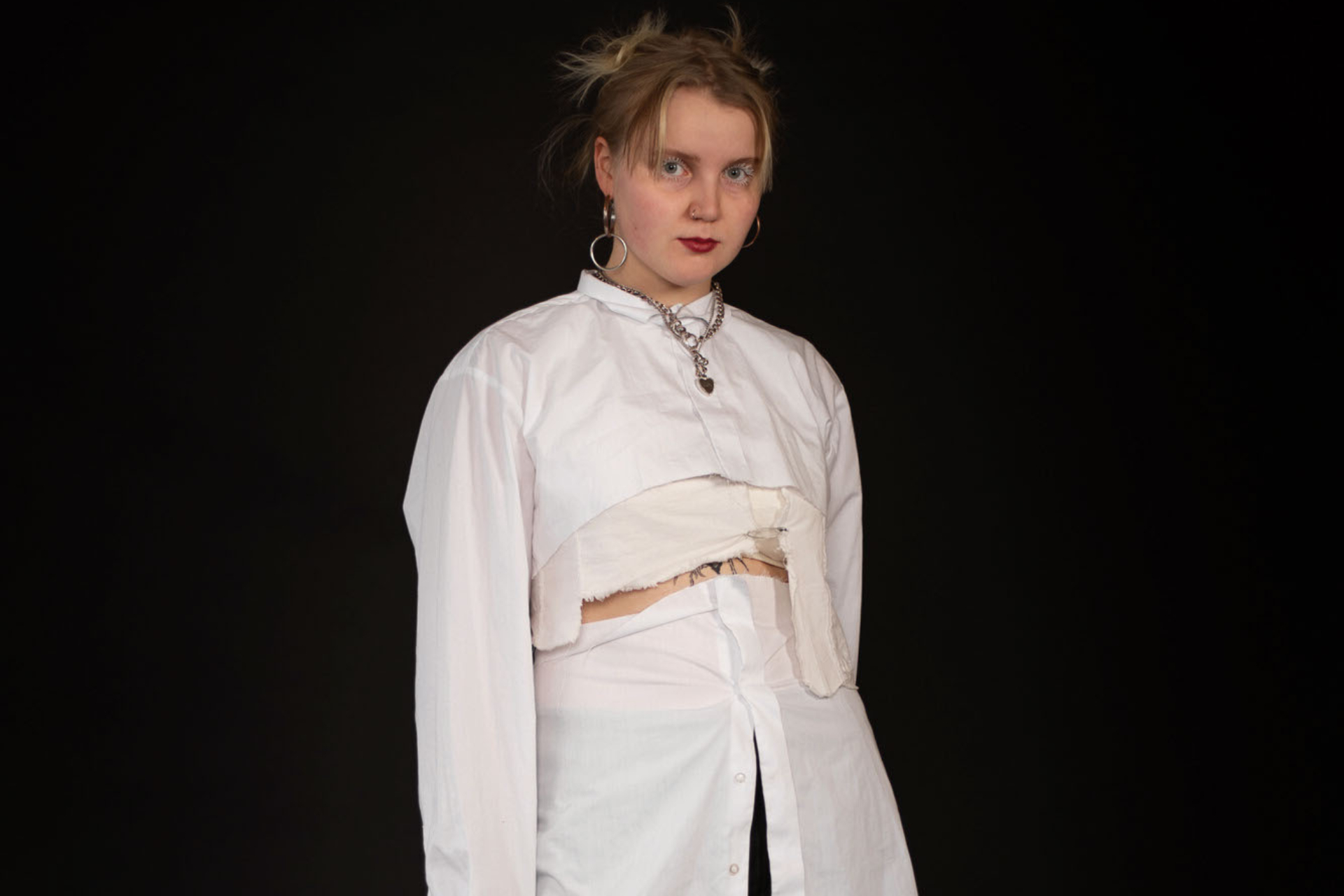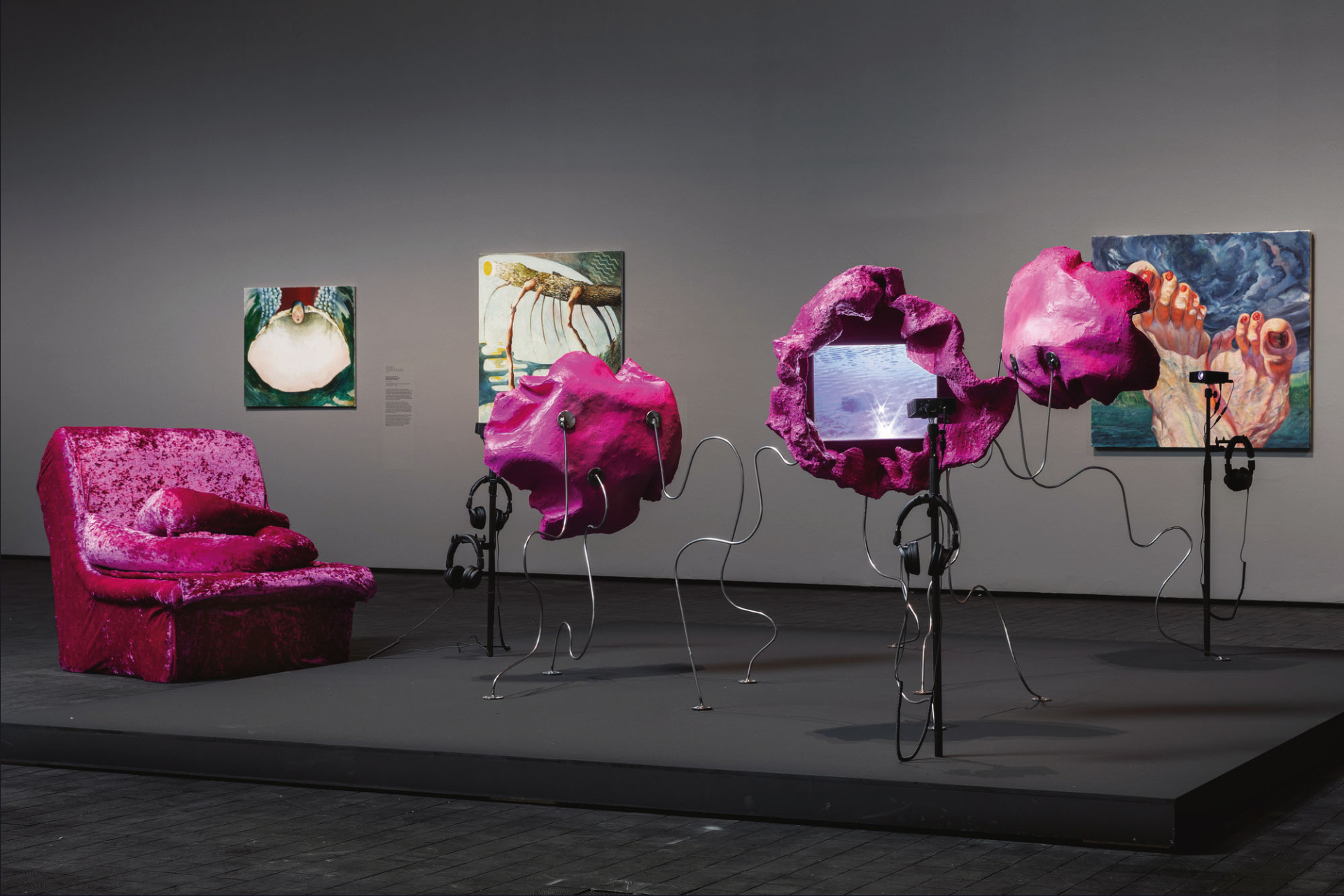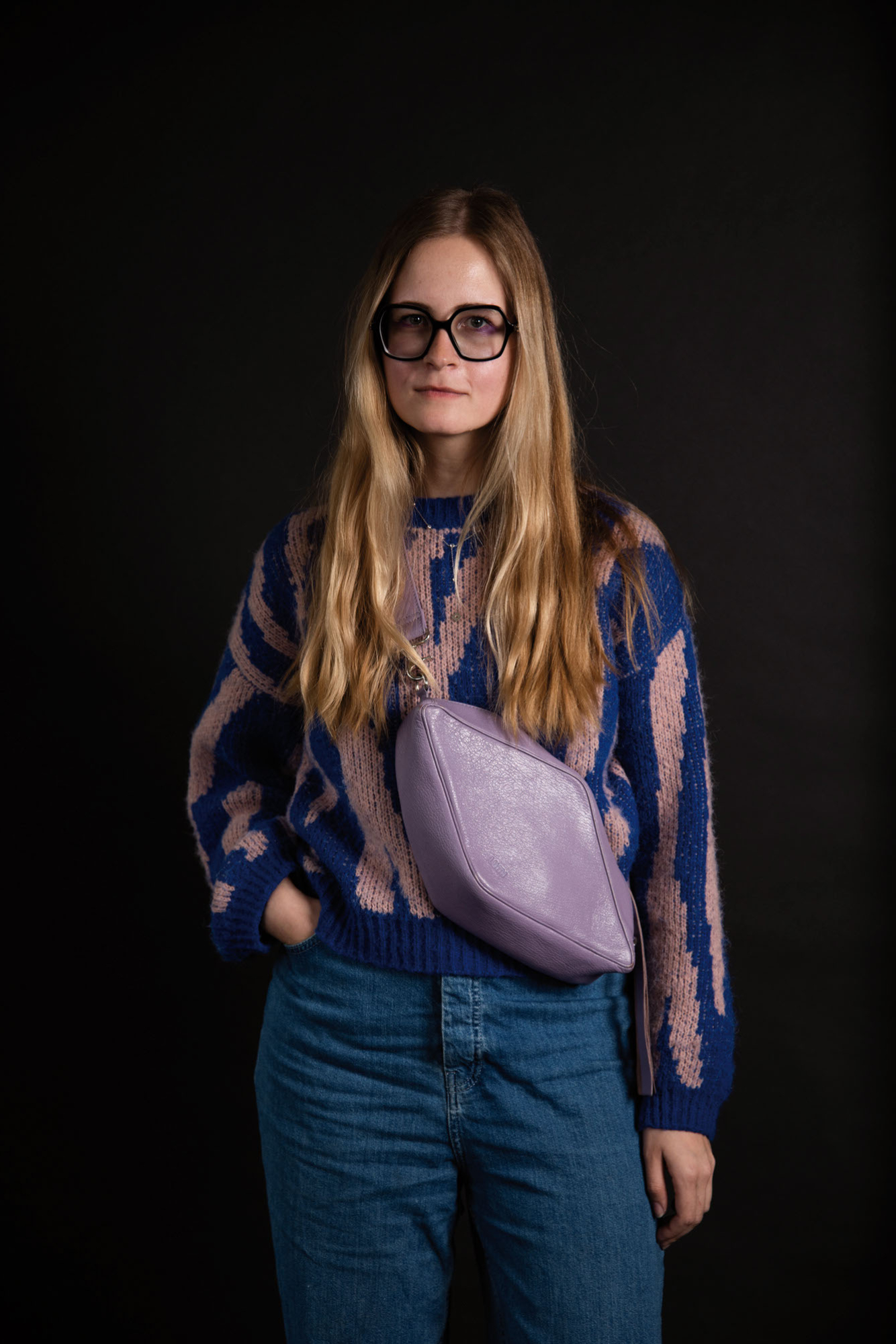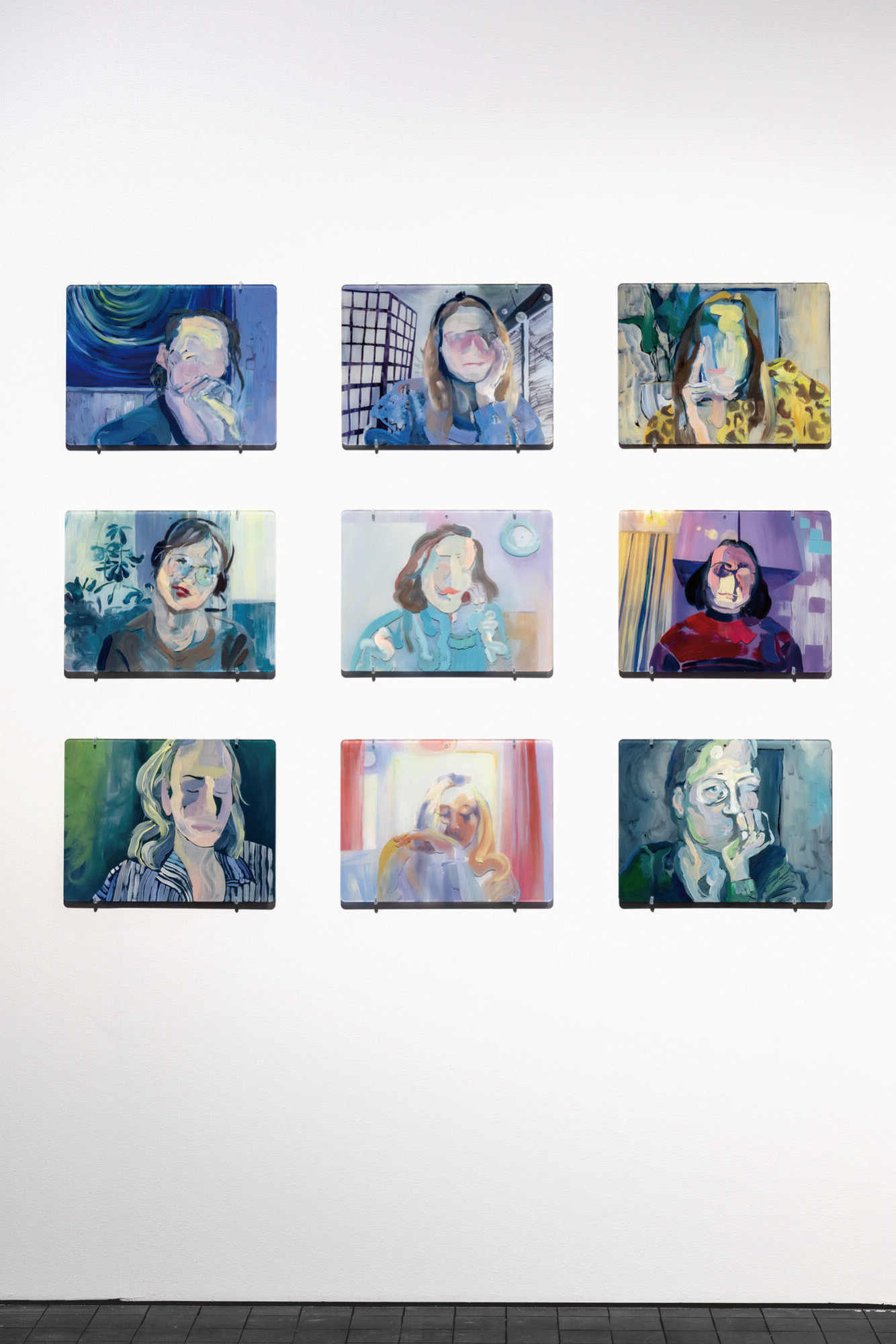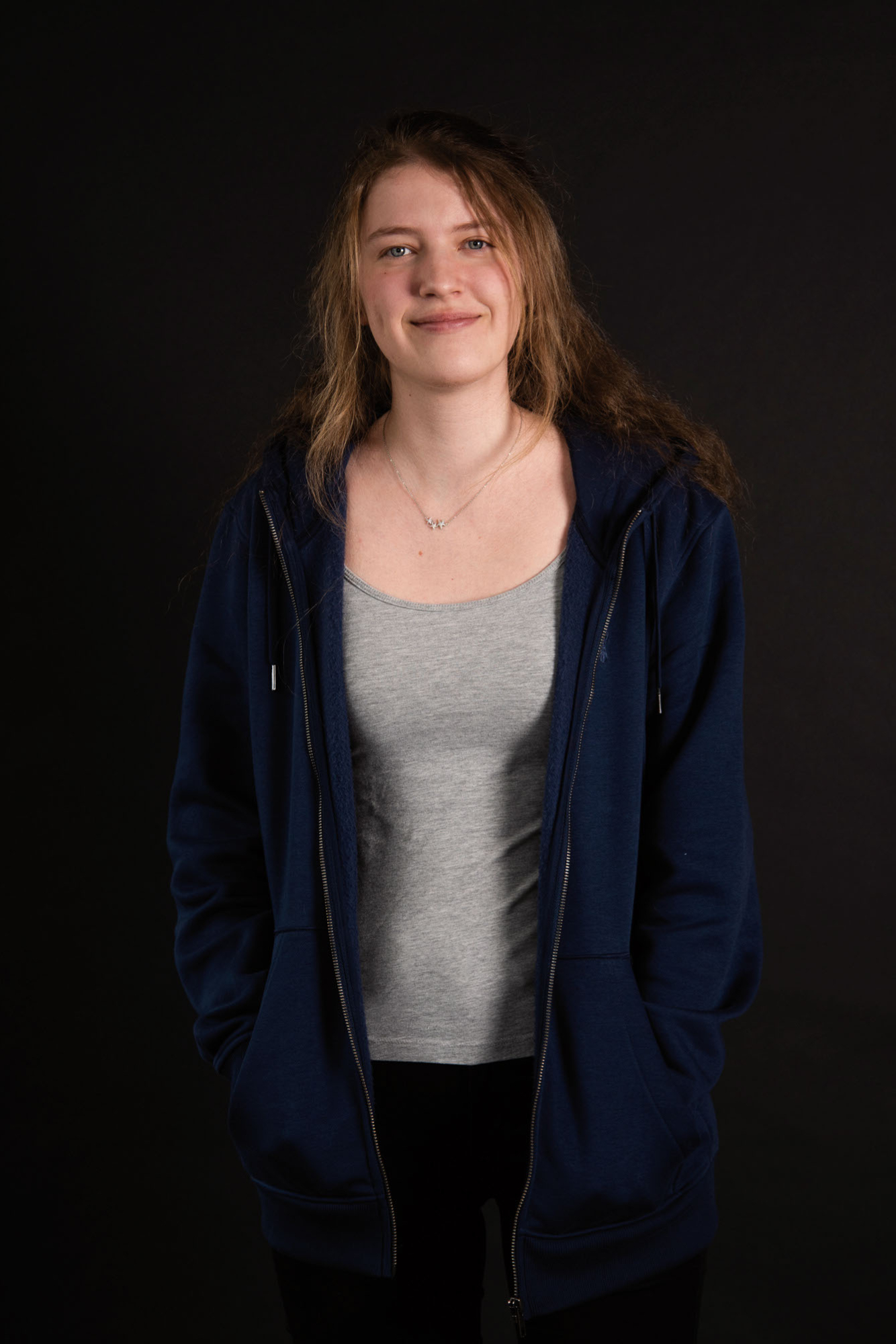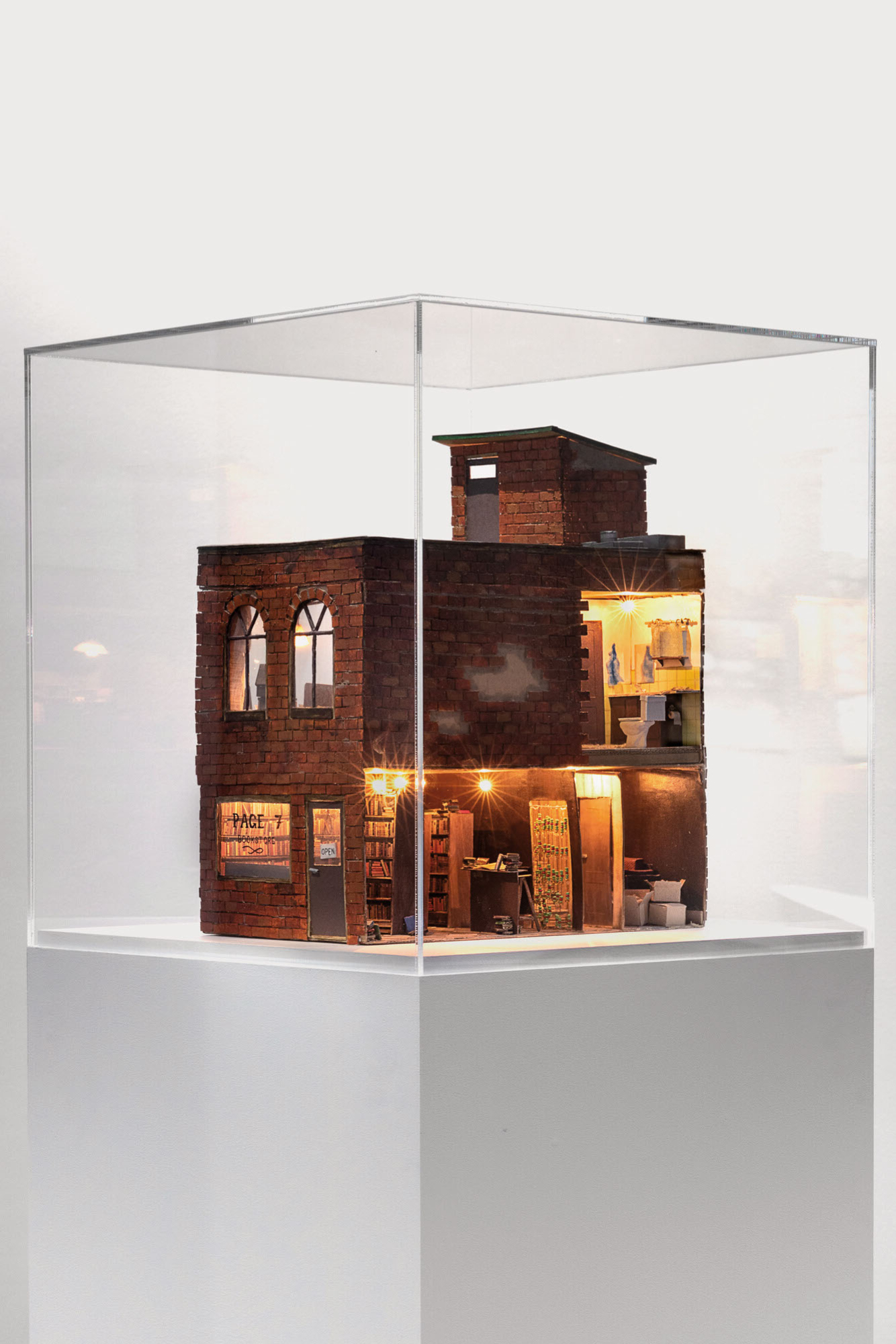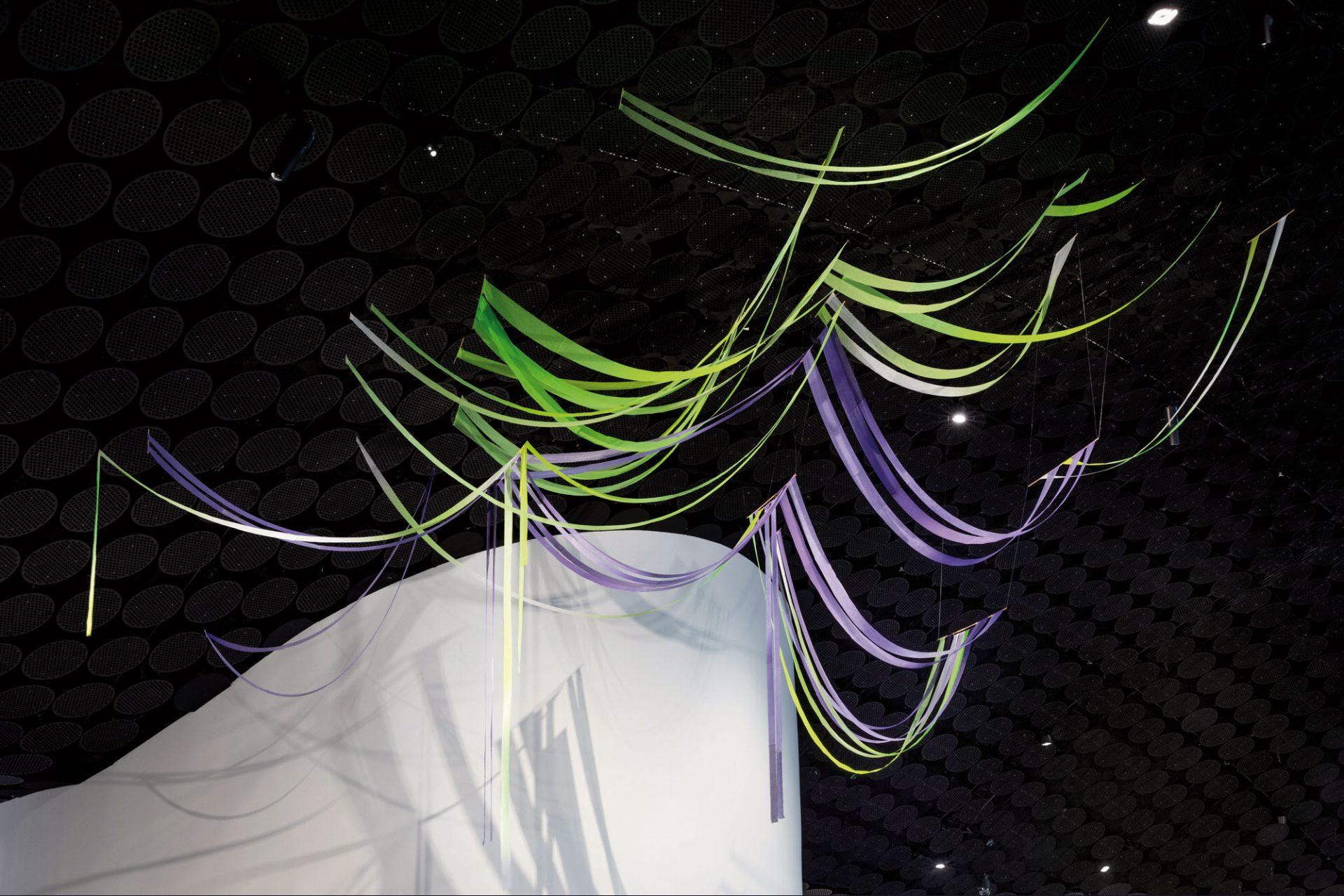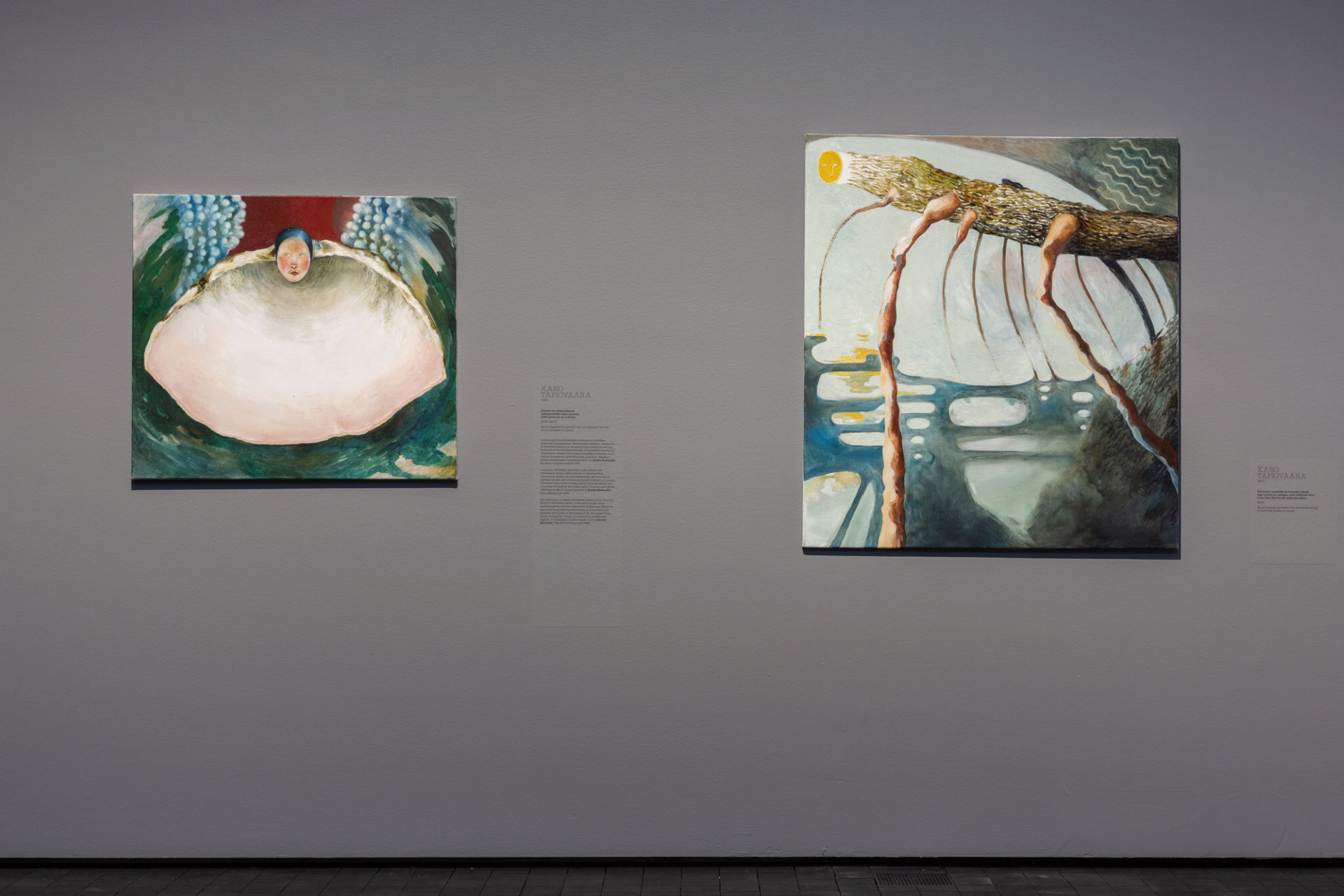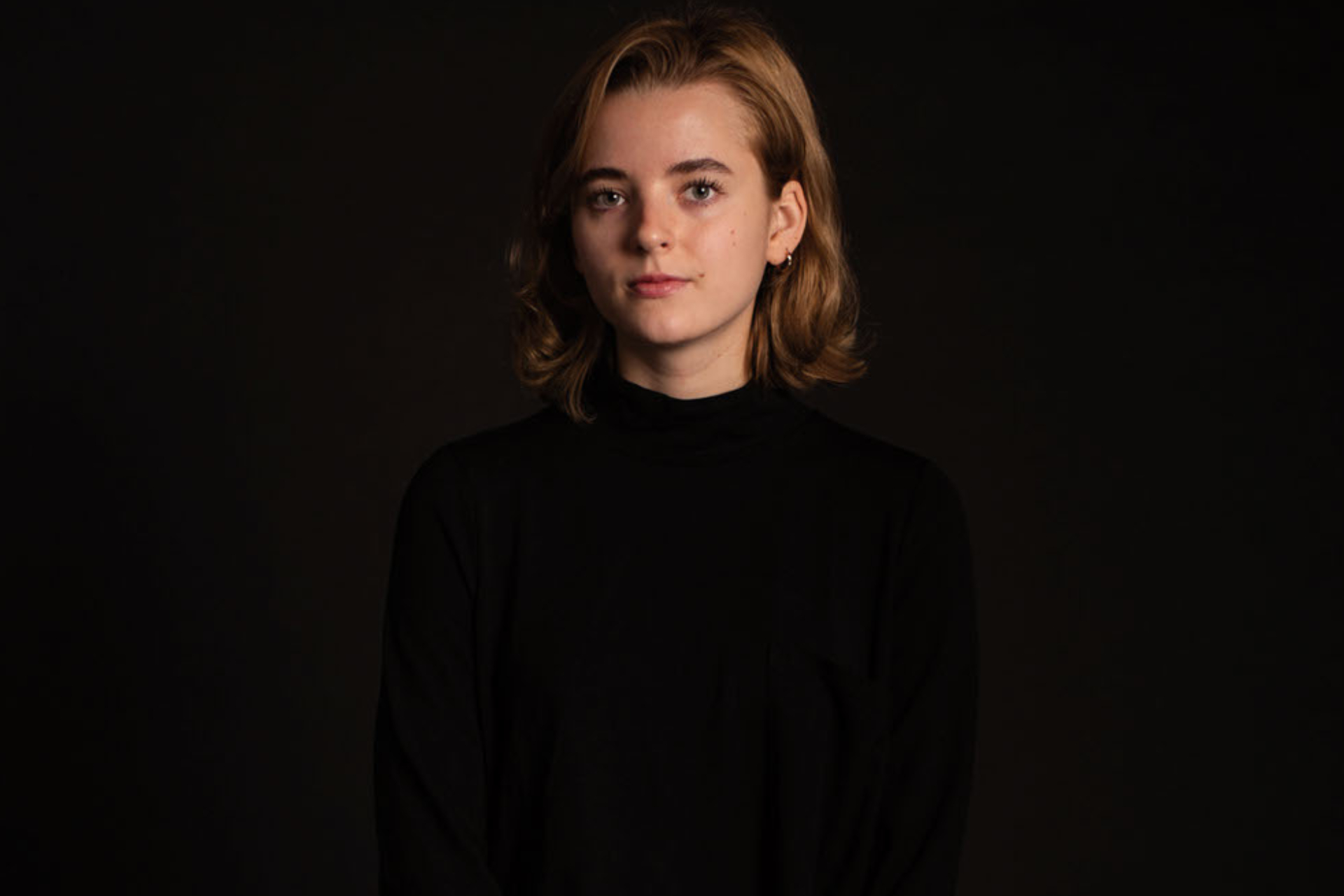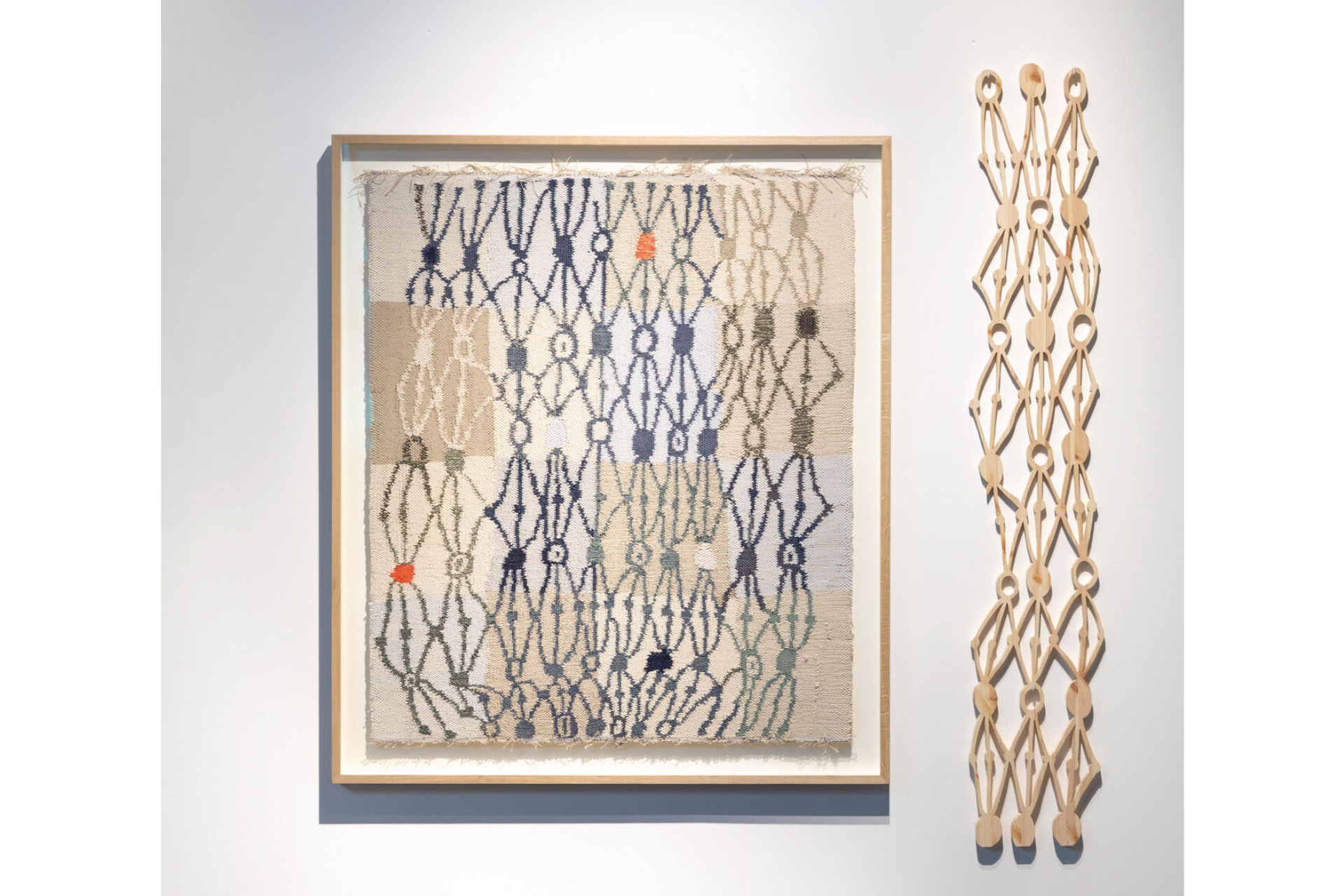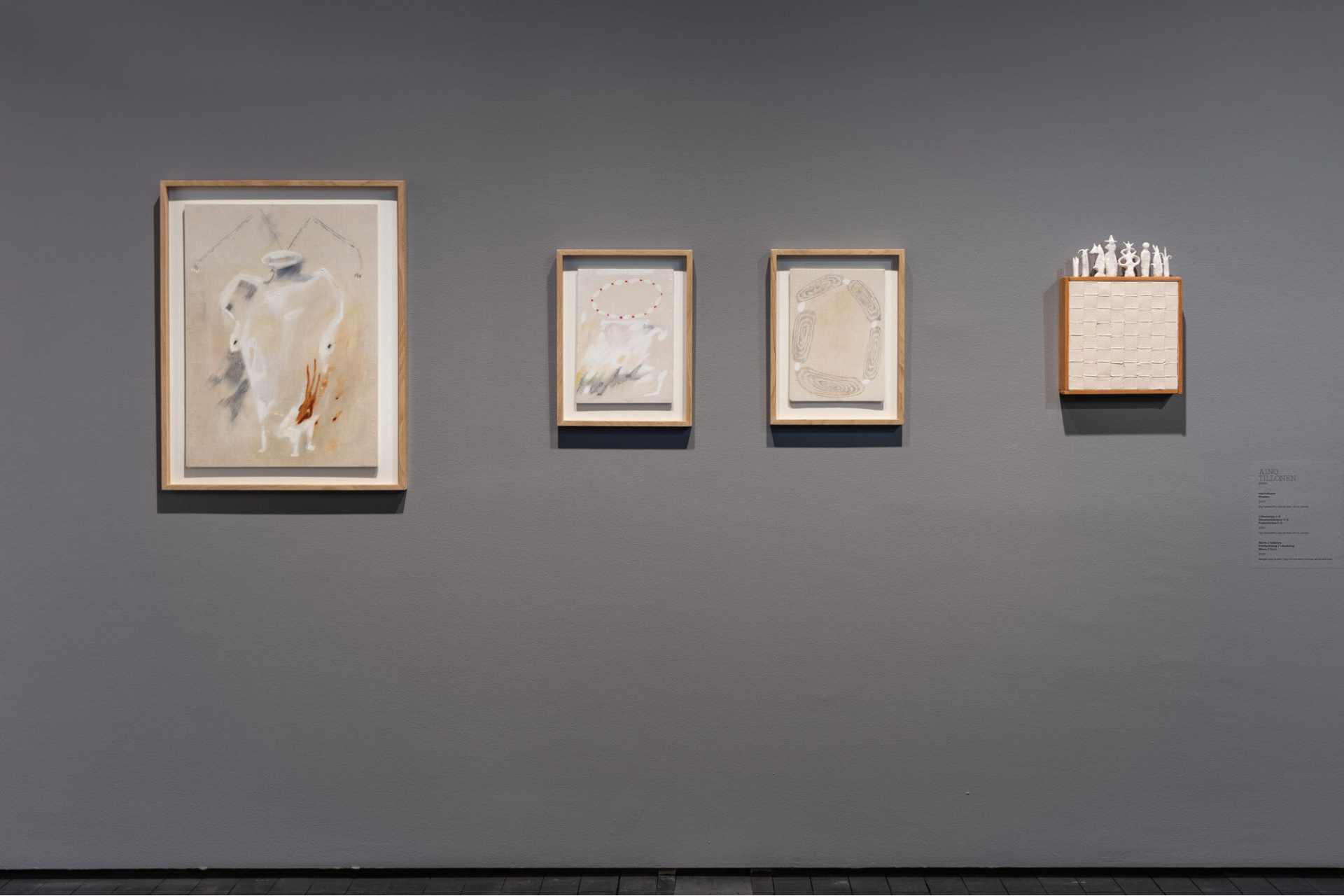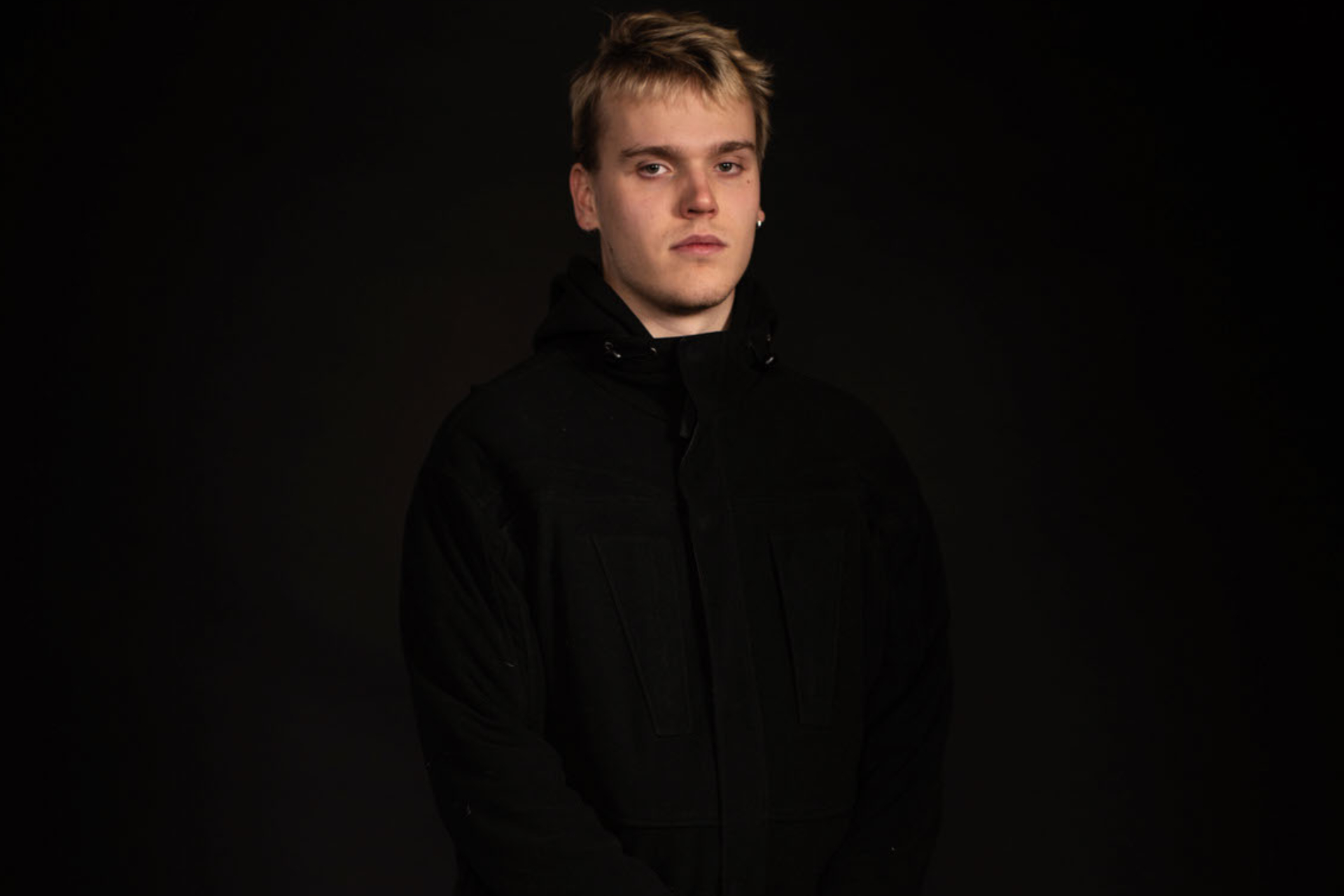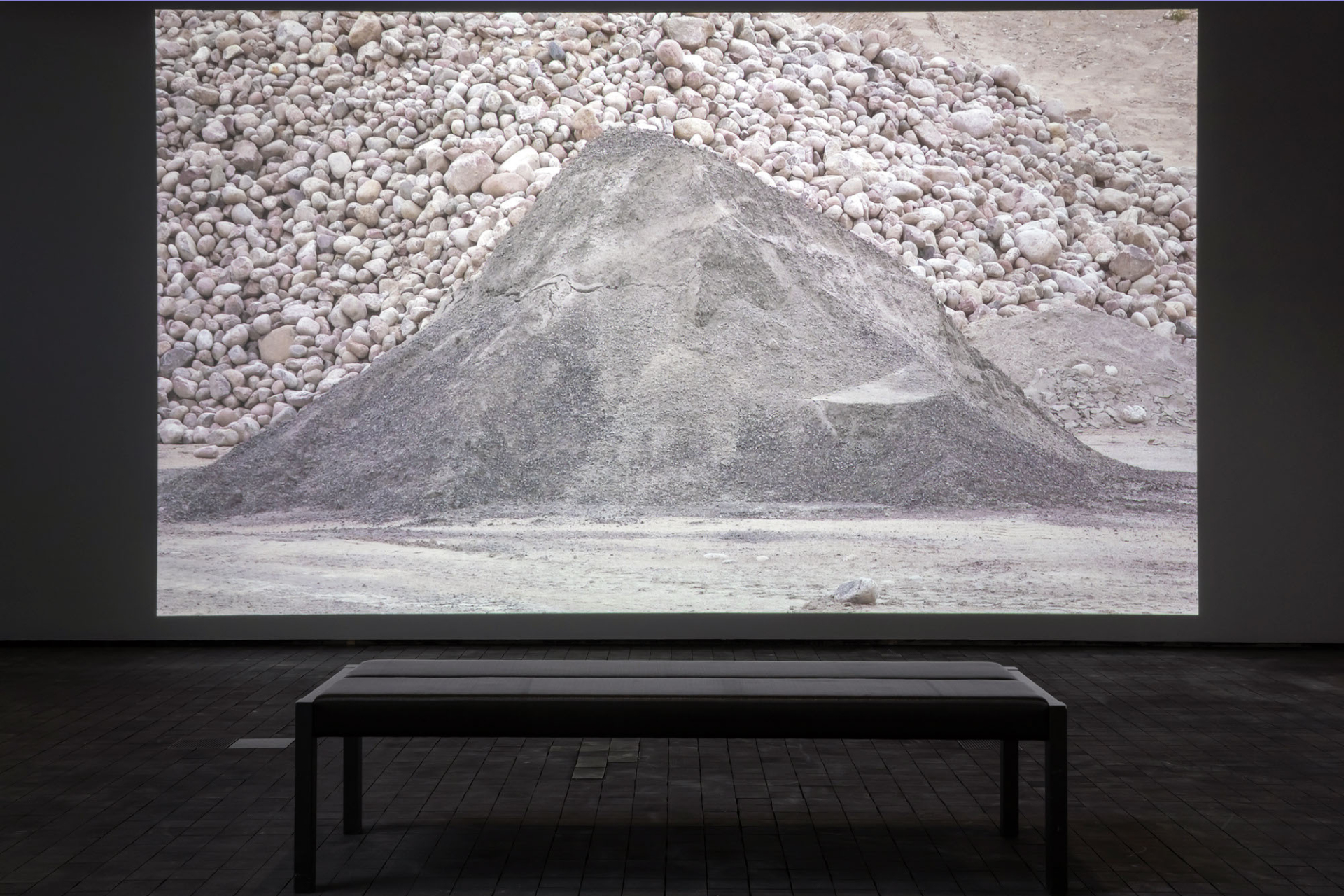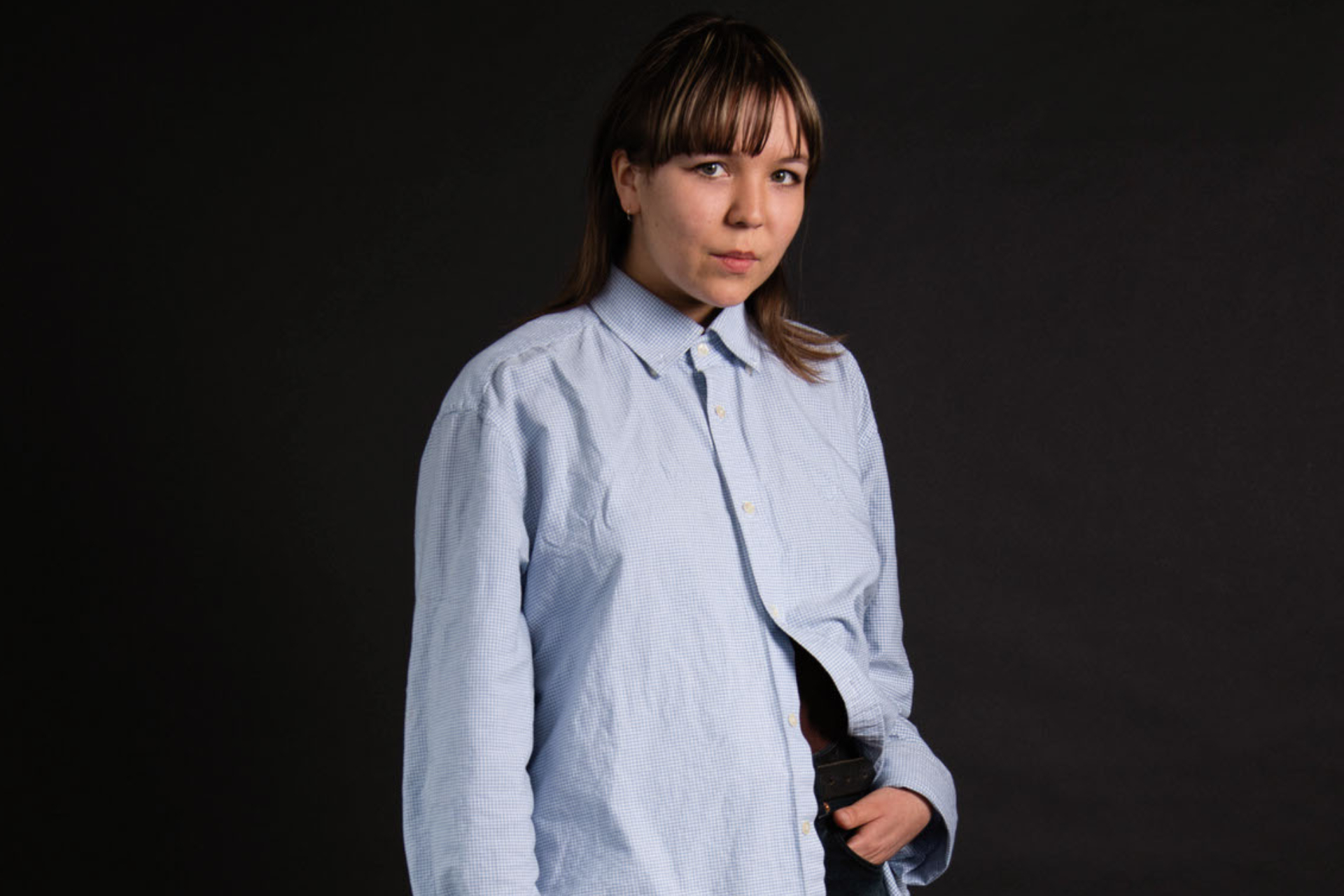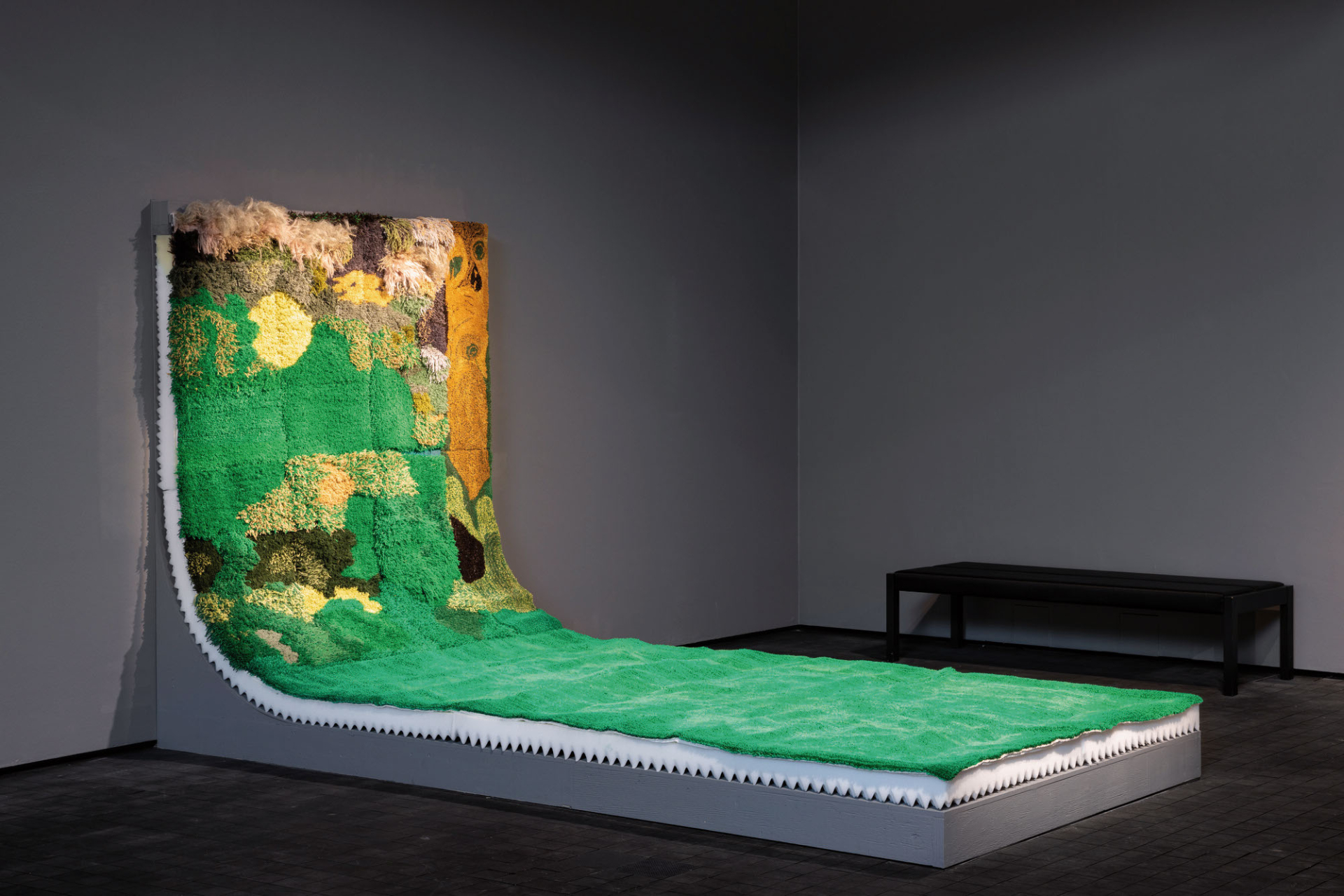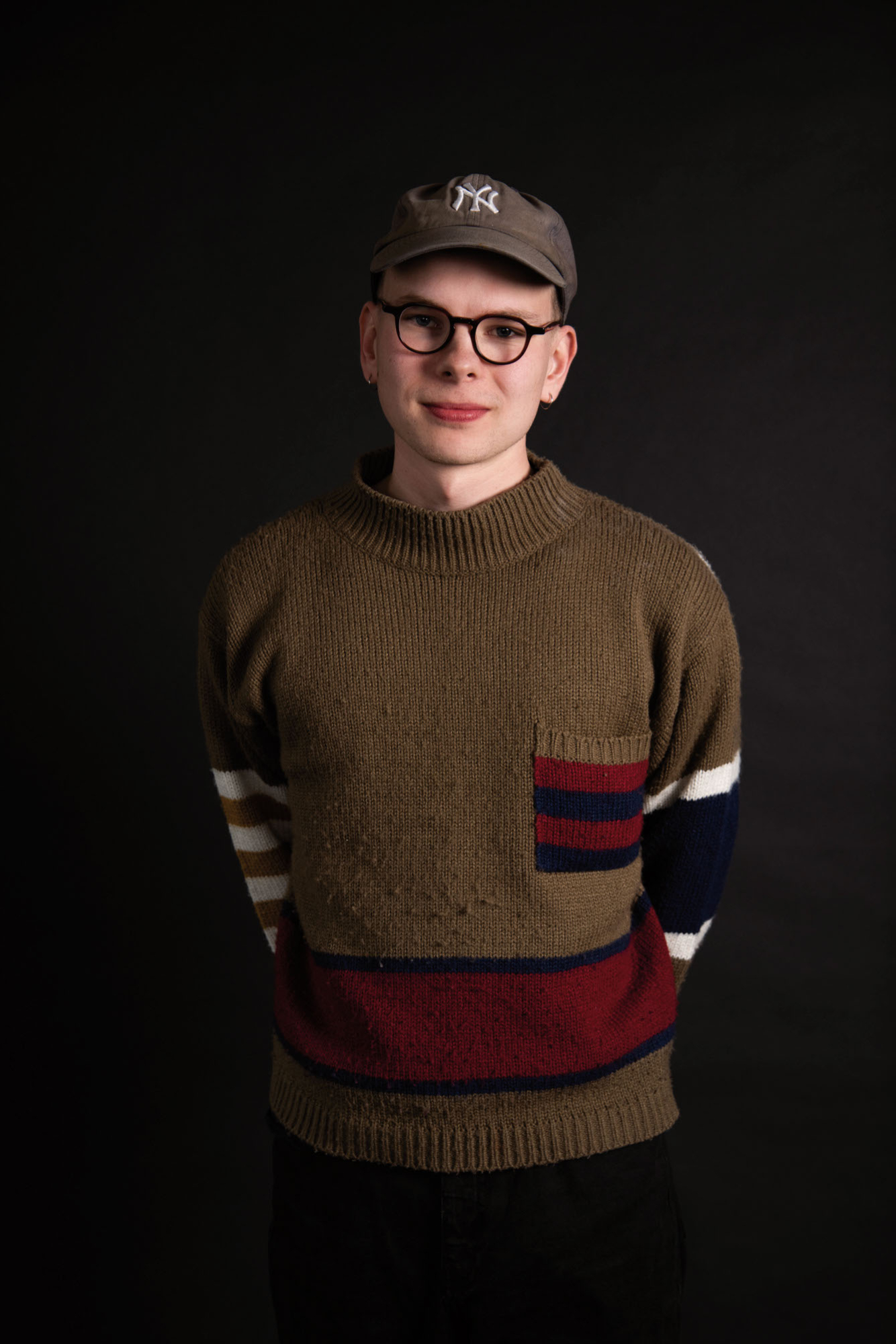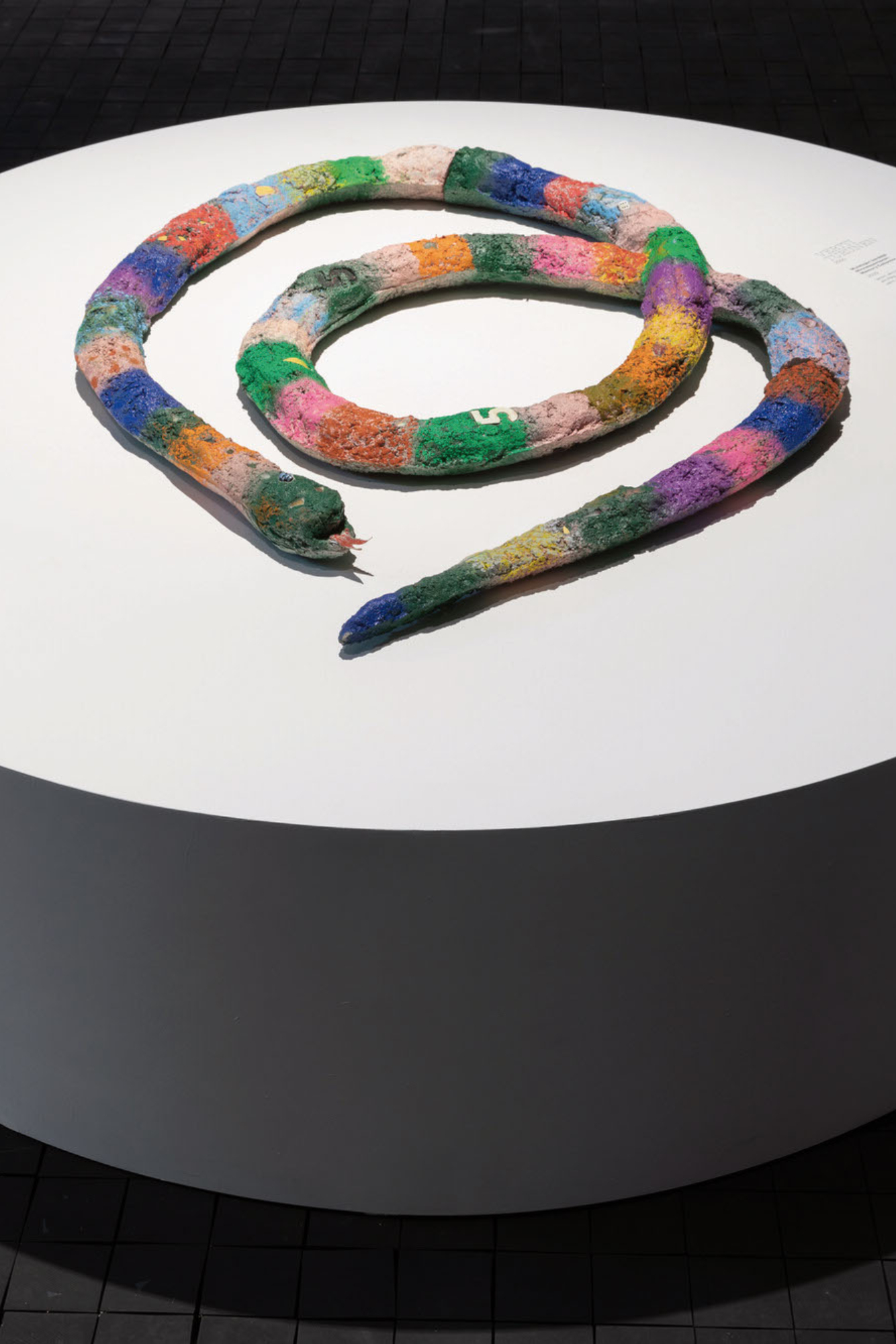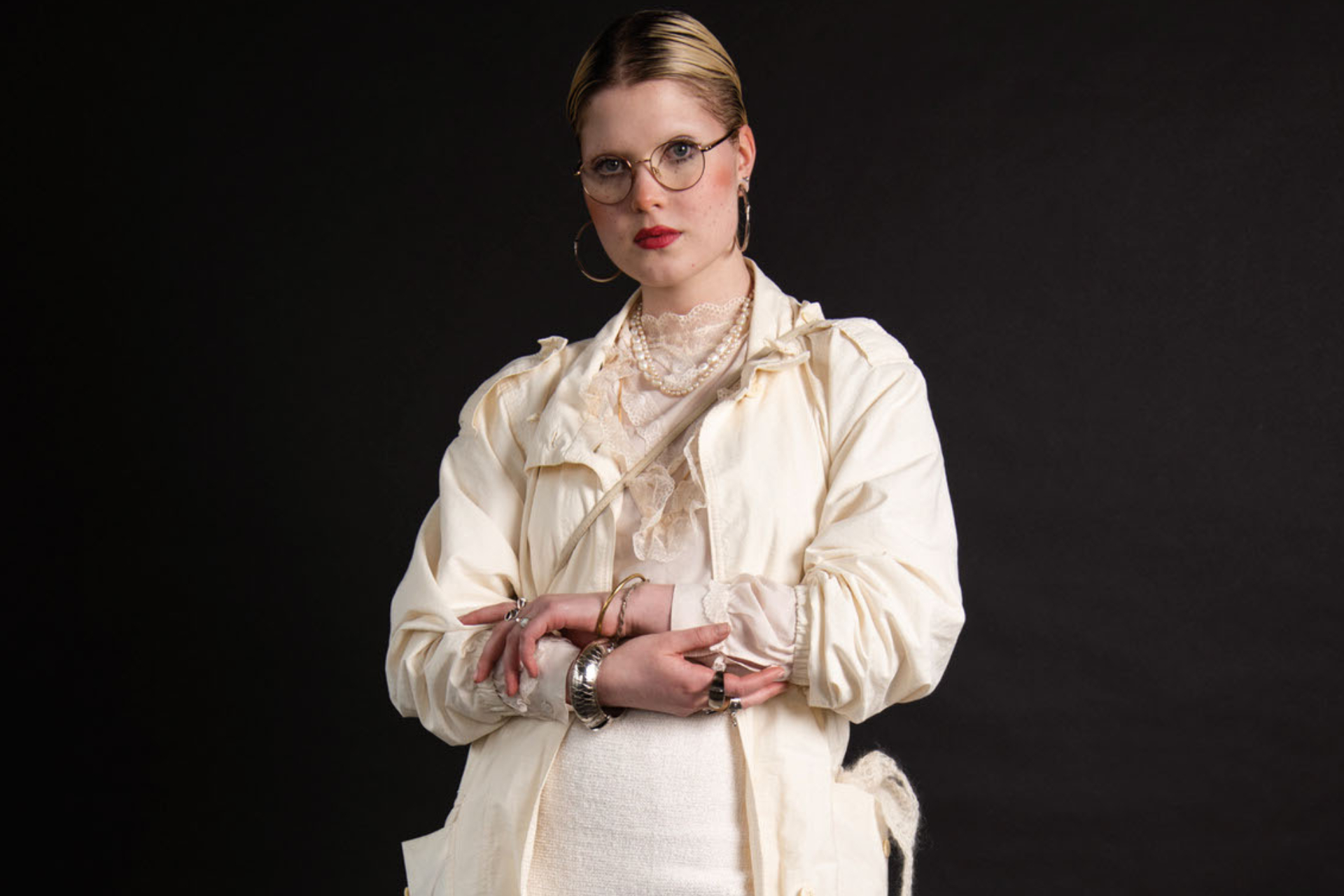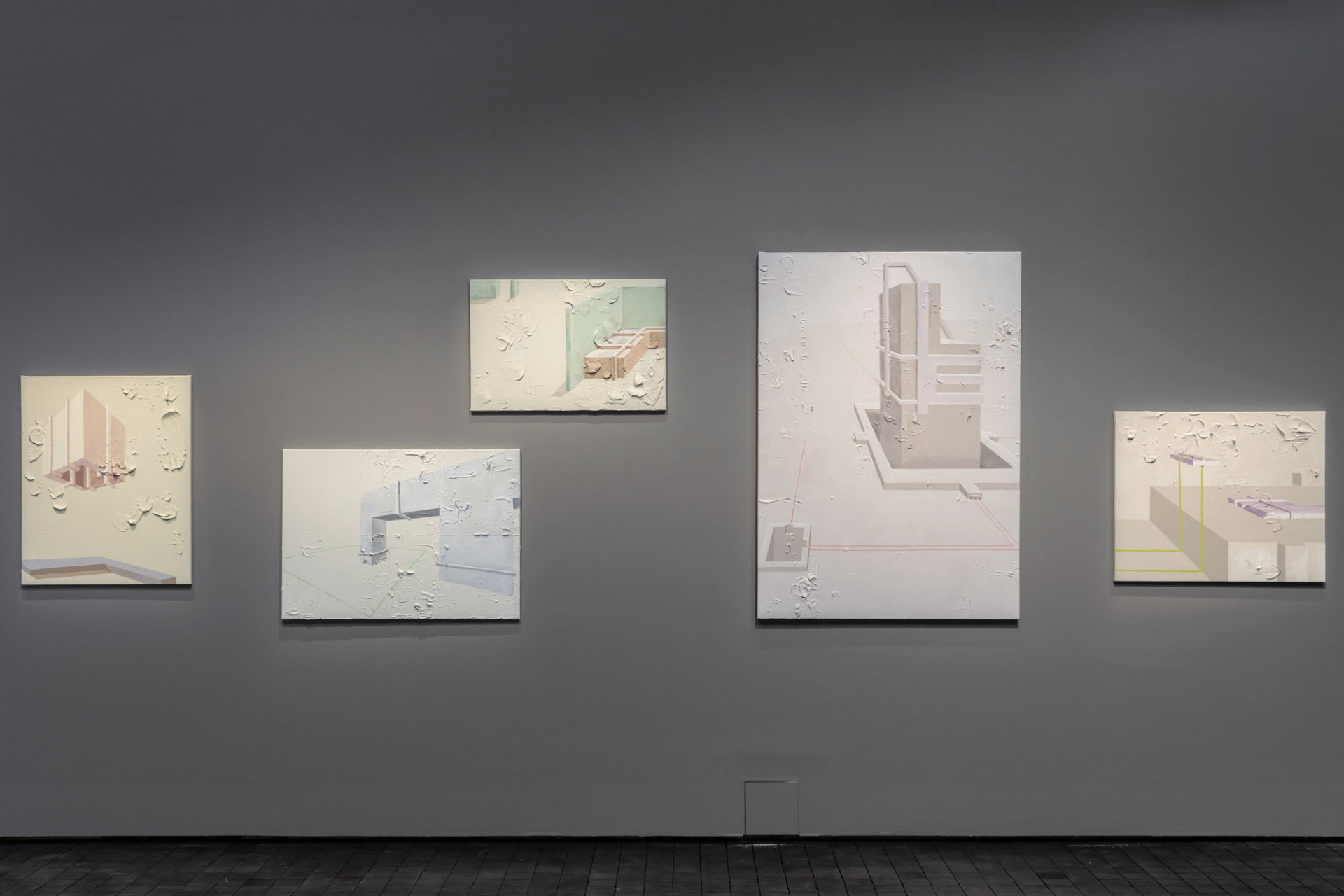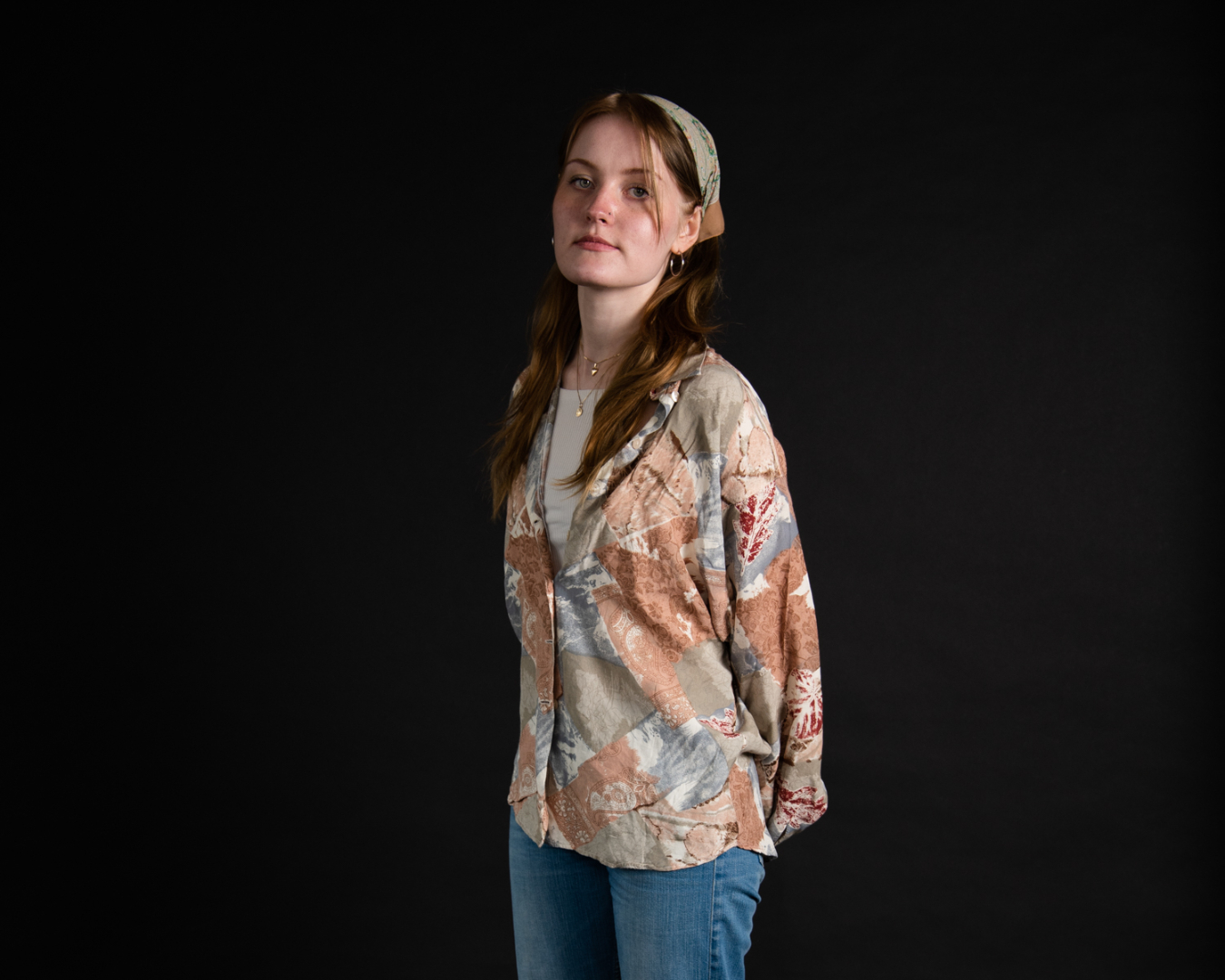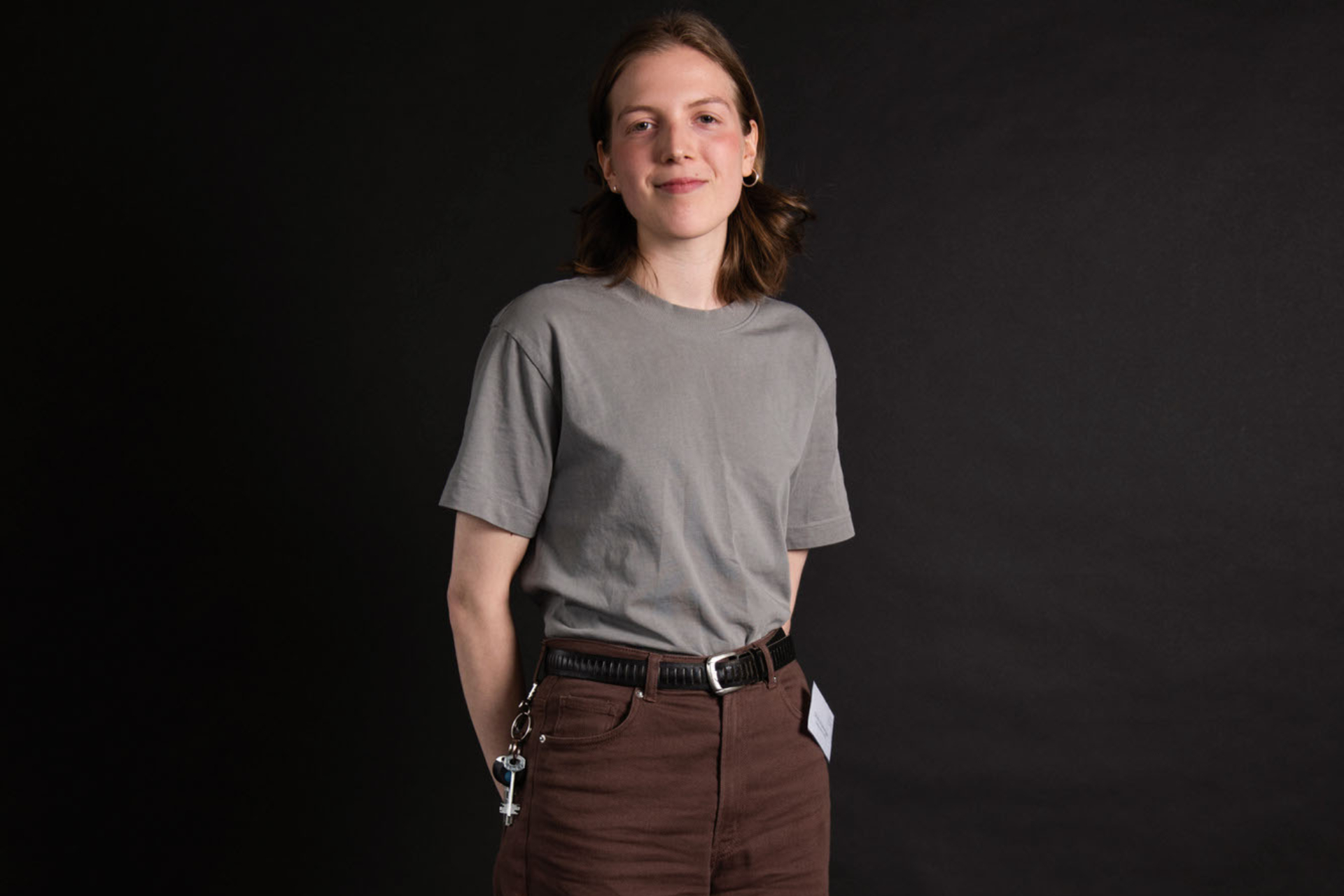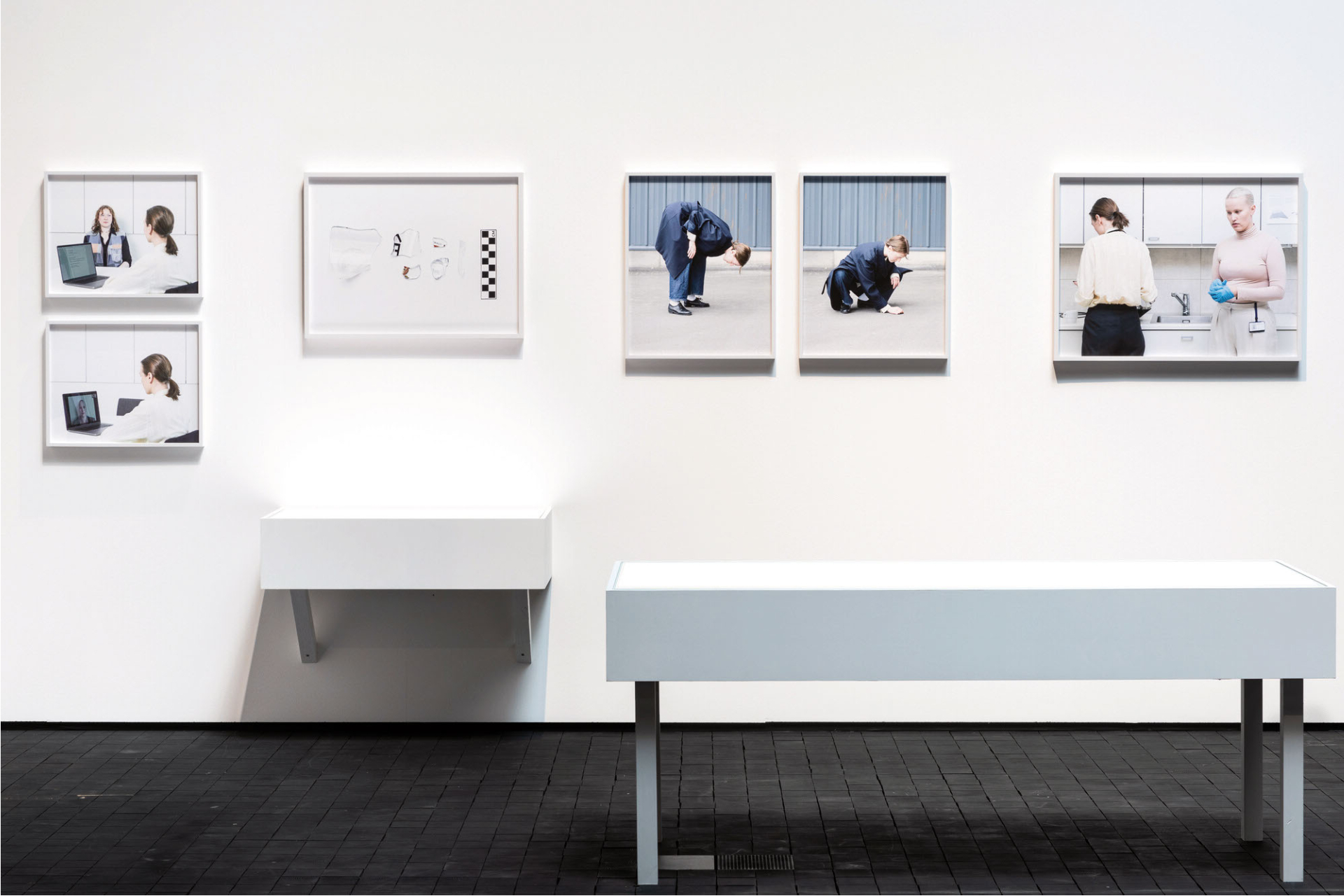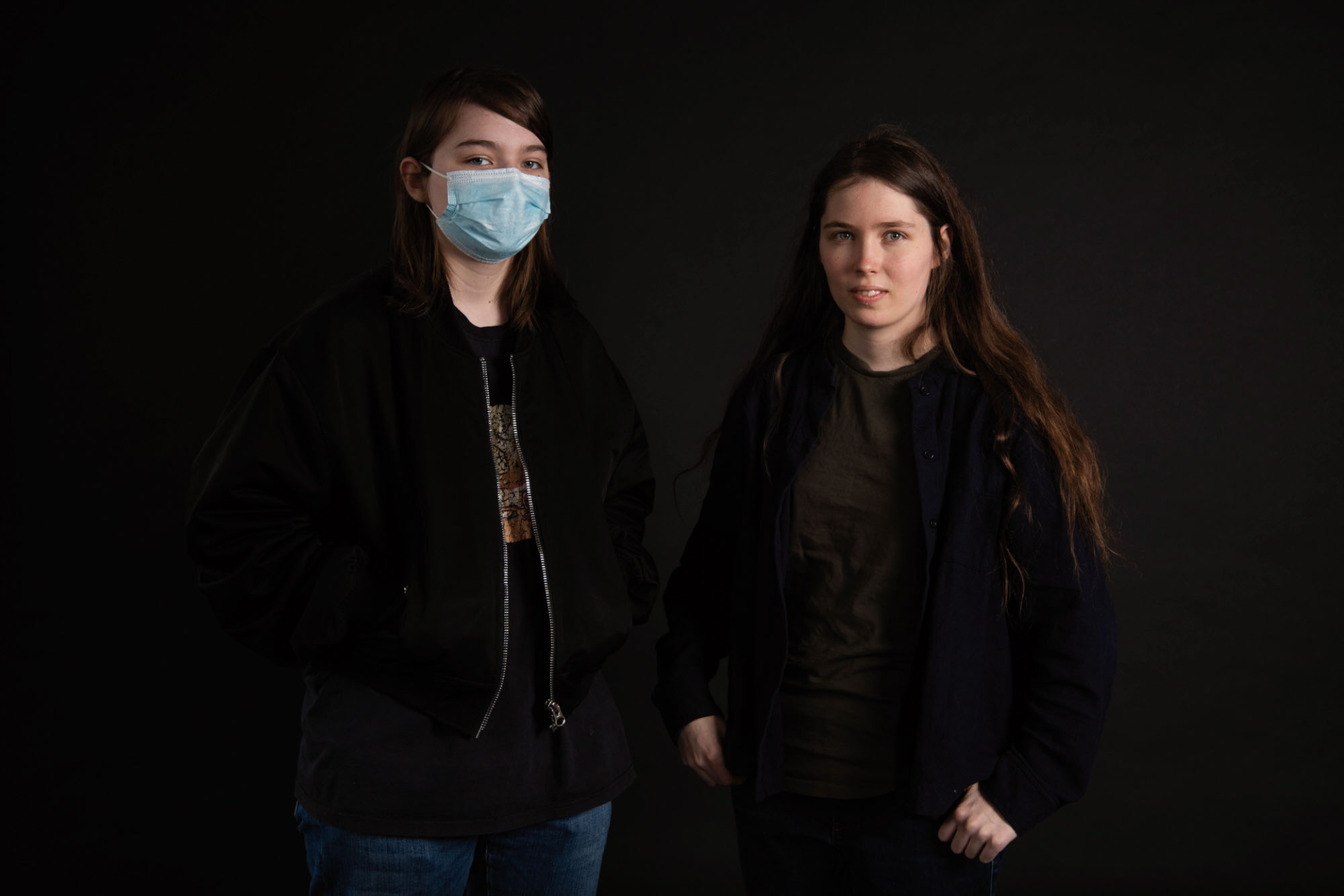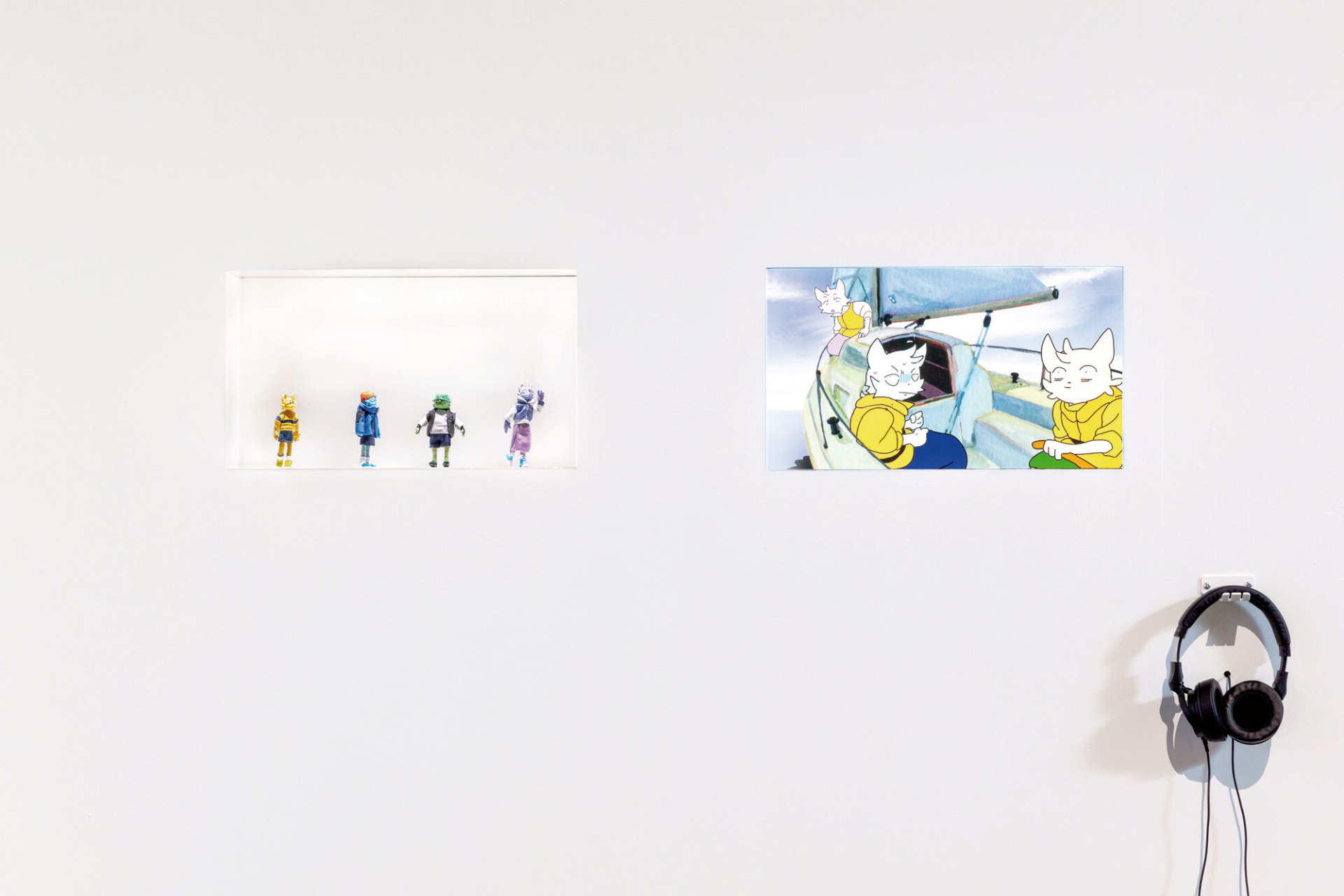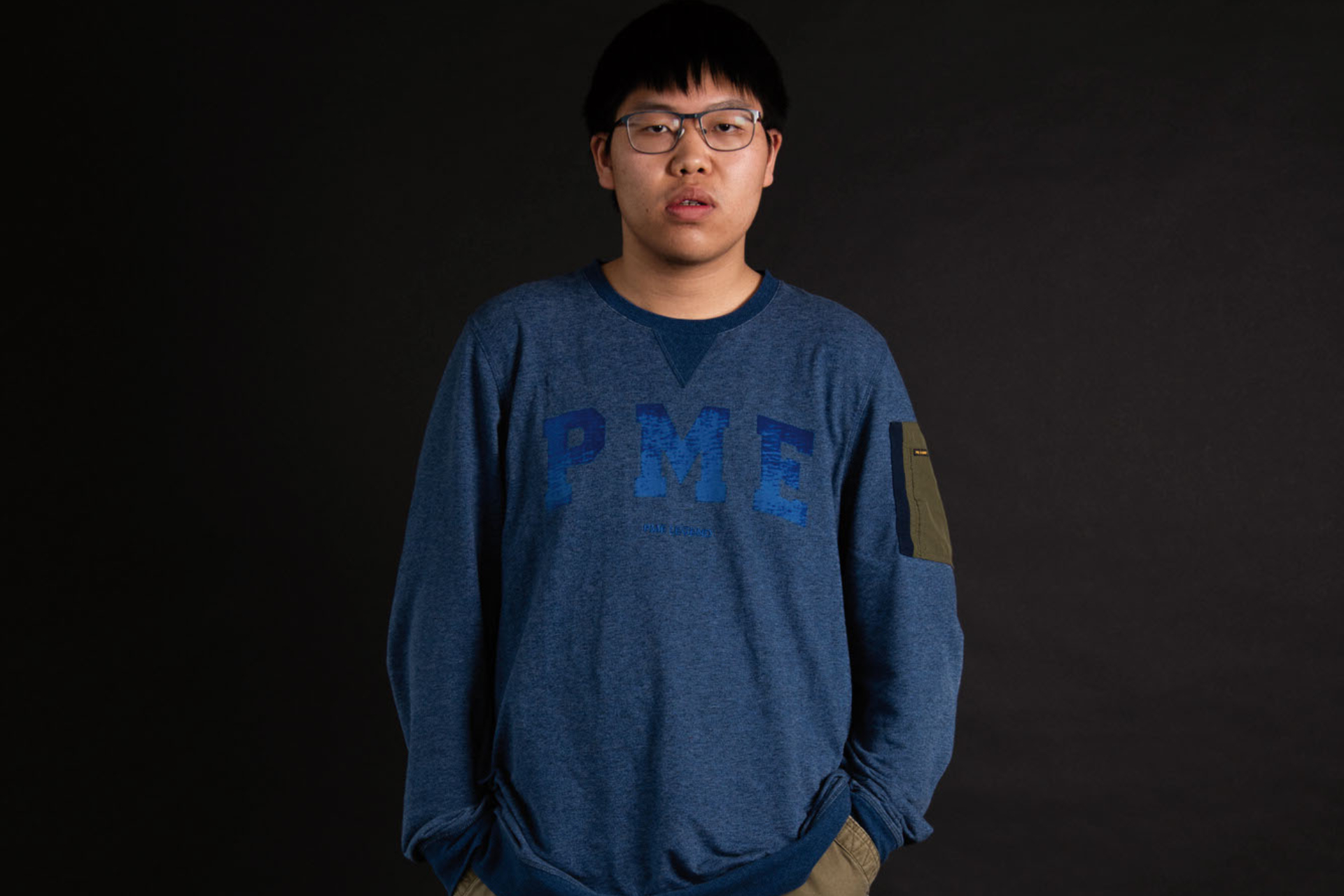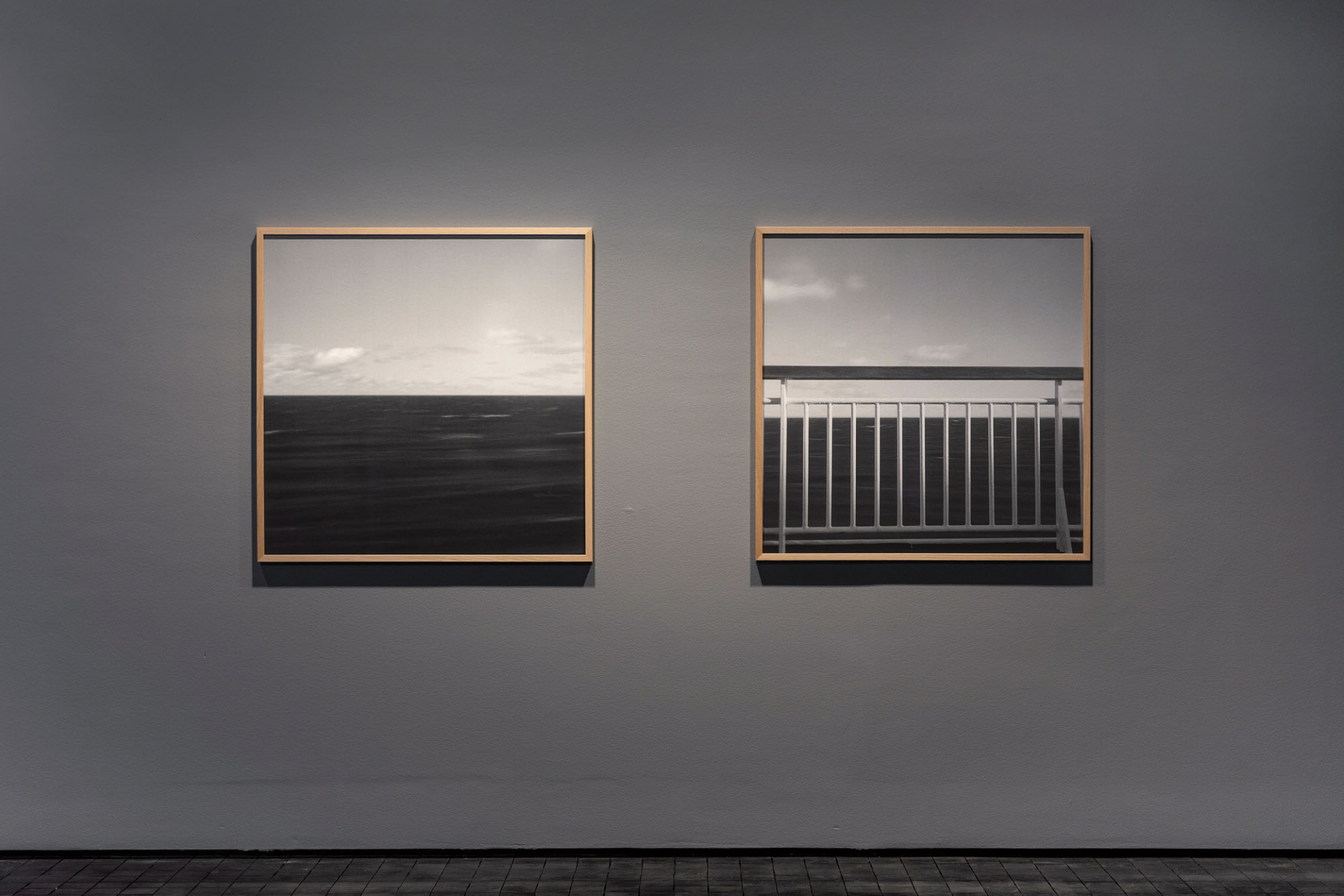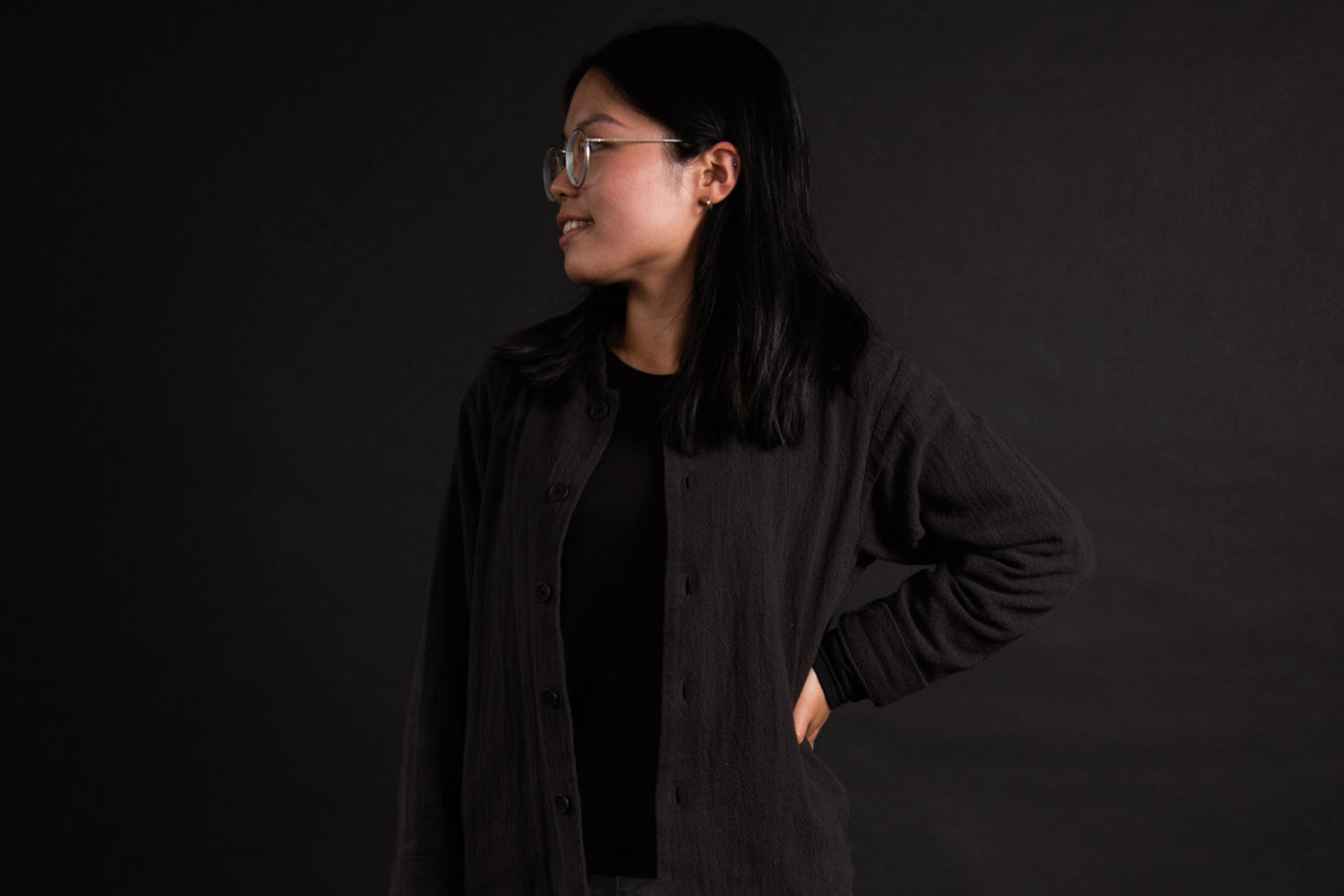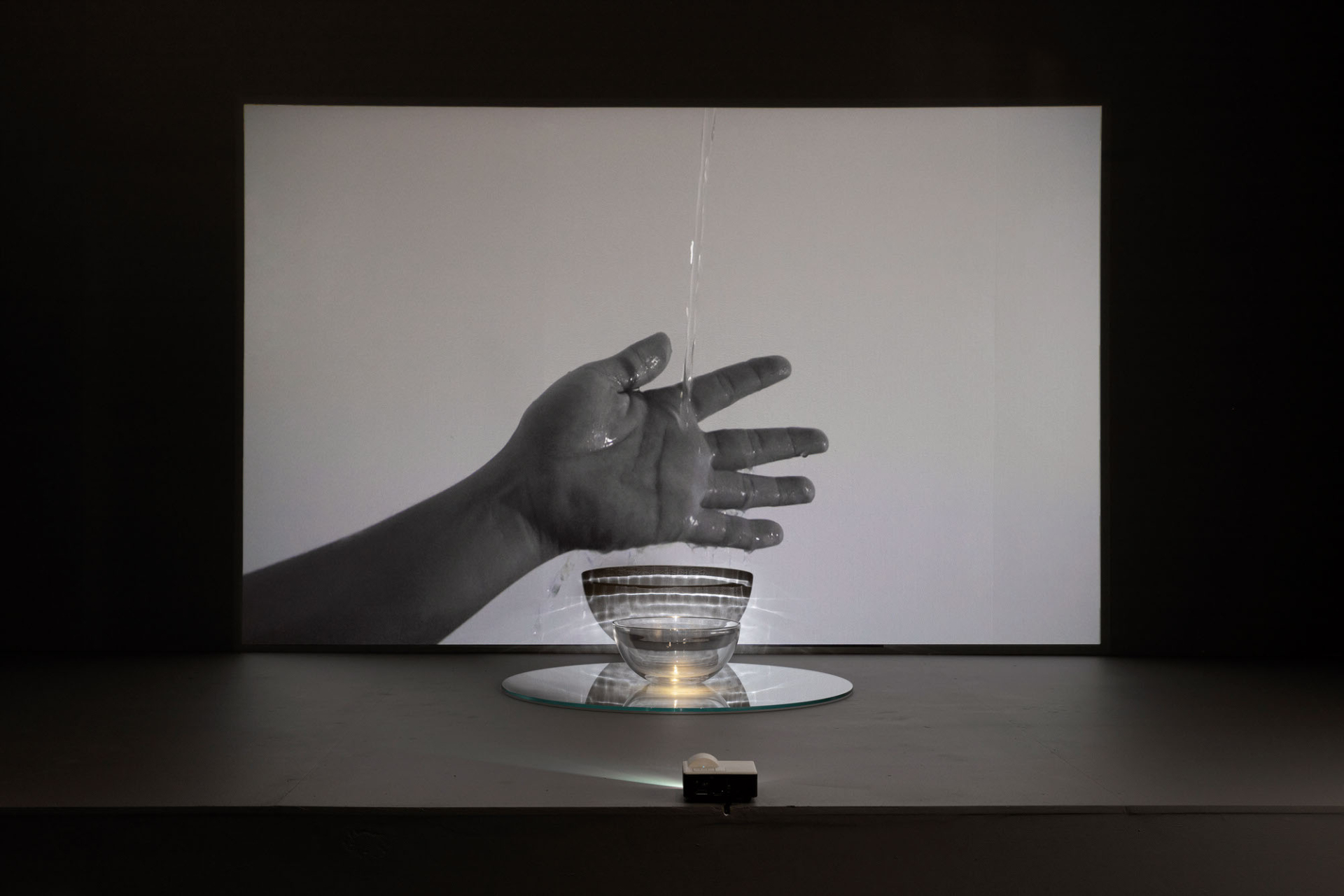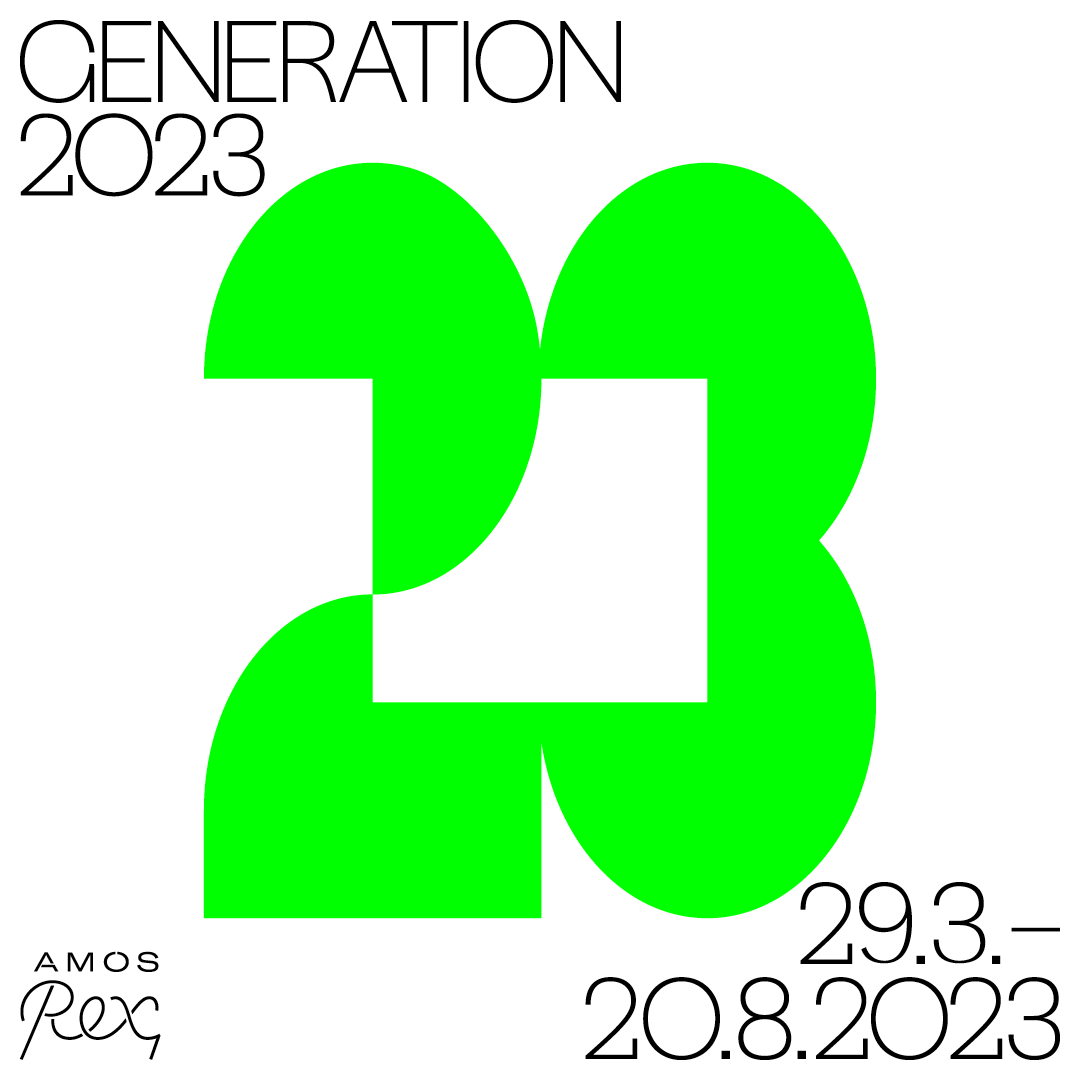
Generation 2023
From gathering confessions to everyday observations of a fragment collector, from knitted diaries to monster outfits – in this third edition of the Generation triennial, the young artists’ relationship with creativity continues to be multidisciplinary and open-minded. The artists of Generation 2023 move fluidly across different art forms avoiding strictly defined genres.
Some of the artists in the exhibition have just begun to study at art schools, some are already enrolled, while others have become interested in creating art in recent years. All are united by the shared experience of being in a unique stage of their life where they have the freedom to experiment and search for their own artistic language. The artists’ varied backgrounds form a rich and diverse tapestry in which their artistic voices are heard. The life experiences of this generation and their reflections on the current state of the world play a key role.
In their works, the artists seek new ways to approach the most pressing issues of our time. Many put a spotlight on the state of nature and its coexistence with humankind. How can we change a relationship where one side has benefited from the constant subjugation of the other?
There is also a desire to reveal other societal structures. Do we live in a society where everyone can express themselves freely without being subjected to certain expectations? By exposing norms related to gender identity, appearance and clothing, the artists lead us to question established norms.
Digital exhaustion and other feelings brought on by the global pandemic are topics that many of the artists reflect on and deal with through their art. One artist finds an escape from the bleakness of everyday life in a bookstore, creating a miniature cardboard model of it. Another artist revisits childhood playgrounds and processes these personal memories by crafting peculiar outfits.
Works have also been born out of the need to help others better understand experiences of depression and anxiety. One work simulates the bodily experience of anxiety with the help of algorithms and visualises how difficult emotions are formed, while the performance artworks gently coax us out of our bubbles to enjoy art as a shared experience.
Creators aged 15–23 were invited to take part in the exhibition’s open call, and submitted a total of 1,004 work proposals. From these impassioned, high-quality applications, the jury selected 50 artists and working pairs to participate in the exhibition. The seven-member jury, chaired by choreographer and director Ima Iduozee, included Generation 2020 artists Anna-Karoliina Vainio and Alex Luonto, museum director Kai Kartio, and curators of the exhibition Anastasia Isakova, Krista Mamia and Laura Porola.
Alfred Aalto
Alfred Aalto
2002, Helsinki
Alfred Aalto is a photographer for whom portrait photography is a particularly important way to process their own feelings and thoughts. Nature, animal and human rights, childhood and dreams are central themes for the artist, who examines these subjects in their works, especially through objects, surroundings, clothing and colour schemes. They often describe their works as bittersweet, because despite their light-hearted atmosphere, they often deal with heavy themes.
Skirts Belong to Everyone
2021, photo series
Skirts Belong to Everyone reflects my feelings about my gender identity. Photography is an important way for me to clarify things that I can’t express otherwise. This series of works has helped me figure out what the gender experience means to me.
Everyone should have the right to express themselves without fear and shame. Everyone should be able to define for themselves how they feel about gender roles, instead of society defining them for us.
Images: Jarno Jussila, Stella Ojala
Bayonle Adelakun
Bayonle Adelakun
2001, Helsinki
Bayonle Adelakun is a self-taught artist based in Finland, who is currently studying business. He has been painting since the end of 2020, spurred to art, in part, by the pandemic. Art has become a form of self-expression and discovery for Adelakun, and by working with oils he aims to portray a feeling in surreal, abstract figures. His motivation comes from personal experience and feelings that he has a hard time dealing with.
Rooted I
2021, painting
Quiet
2022, painting
I’m fascinated with the idea of intensity and how it’s evoked through colour and composition. My figures emerge from a contradictory desire to paint people. I experiment around the edges of abstraction and fiddle with my concept of perfection and readiness to bring the paintings to a threshold.
My motivation comes from distortions, feelings that I didn’t choose. So, I make my paintings as real as necessary. To hint at whatever existential gripes I’m undergoing. I leave the rest out. They’re vague, but I’m in there somewhere. Caught.
The figures exist in a vacuum. Not a world like ours. I like that separation; it’s suitably impersonal. It allows me to make my subjective objective. In freedom from association.
Images: Jarno Jussila, Stella Ojala
Mimmi Ahonen
Mimmi Ahonen
1999, Helsinki/Tampere/Uurainen
Mimmi Ahonen is interested in everything that is clichéd, pathetic, sad and marginal. Her works are mostly text, performances or installations and they are almost always inspired by poignancy.
Currently Ahonen studies dramaturgy and playwriting at the Theatre Academy and works in the Tampere based performance arts collective Iva.
This is a confession
2022, poster series
I’m interested in confession as a need and an event. Is it born from the need to get something out or from the need to get a solution in return? Where does recognition end?
All over Finland, I’ve offered people the opportunity to confess anything. I’ve been to festivals, offices, chapels, libraries and house parties. People have written confessions on paper without knowing when or by whom they will be read.
They are heard in this exhibition space. The confessions have been detached from the confessors and appear on the museum wall on as objects of their own. Perhaps, in this independent form, confessions no longer need anything – on the contrary, perhaps they have something to give.
Images: Jarno Jussila, Stella Ojala
Robin Berende & Antti Järvelä
Robin Berende & Antti Järvelä
2003 & 2004, Kirkkonummi
"Hey btw, do you play Minecraft?" was the question that started Robin Berende and Antti Järvelä’s friendship and collaboration. Through various coincidences, Berende and Järvelä ended up in the contemporary art field.
Their work combines the world’s momentary hyperfixations with theatre buffoonery and contact improv as well as some kind of foggy storytelling – or lack thereof.
In their free time, Järvelä and Berende can be found either playing on the computer or tangled up in a big spool of light and sound cables. They prefer to make their biggest, most serious decisions after 11pm at Hesburger.
F41.1
2023, audiovisual installation
110010 110001 101110 110101 100101 100000 1101111 1100110 100000 1101000 1101001 1100111 1101000 100000 1110011 1100011 1101000 1101111 1101111 1101100 100000 1110011 1110100 1110101 1100100 1100101 1101110 1110100 1110011 100000 1100101 1111000 1110000 1100101 1110010 1101001 1100101 1101110 1100011 1100101 100000 1101101 1101111 1100100 1100101 1110010 1100001 1110100 1100101 100000 1101111 1110010 100000 1110011 1100101 1110110 1100101 1110010 1100101 100000 1100110 1100101 1100101 1101100 1101001 1101110 1100111 1110011 100000 1101111 1100110 100000 1100001 1101110 1111000 1101001 1100101 1110100 1111001 101110 </do_you_understand_me?/>
Images: Jarno Jussila, Aleksi Poutanen
Amos Blomqvist
Amos Blomqvist
2004, Vantaa
Amos Blomqvist is an artist from Helsinki specialising in digital art and music. Along with his studies, he creates visual art using a variety of working methods such as 3D modelling, computer graphics and image processing. This way of working – although laborious – allows for free, unrestricted artistic expression. Blomqvist also composes and produces music.
The End
2022, digital image
A metro platform hardly evokes grand emotions in many people. It is a kind of intermediate stage between two places, which itself is only experienced as a hollow transition. My work focuses on a mild feeling that fascinates me, one that I often experience in transitional spaces such as underground platforms.
The End seeks to confirm this feeling through a dreamlike, even slightly absurd arrangement. I don’t want to further explain this feeling between starting point and destination. Let the viewers feel it themselves.
Images: Jarno Jussila, Stella Ojala
Saikou Ceesay
Saikou Ceesay
1998, Helsinki
Saikou Ceesay is a Gambian-born former professional soccer player, now a visual artist and designer. For him, painting is an alternative way to express himself and channel his natural rhythm now that he is off the pitch. In his art, Ceesay creates dreamy, surprising moments and reflections. Although most of his art is abstract, Ceesay has developed his own visual vocabulary and unique style. It is typical of his work that the viewer is simultaneously surprised by what’s in the work and what’s missing.
Boom Goes The Playground
2021, painting
I tried to communicate an idea and paint a very urban landscape. I tried to make a painting that would be different from others I’ve seen on a similar subject. They have mostly been minimal and alienating.
I wanted to make a very straightforward painting where most people could see themselves.
Images: Saikou Ceesay, Stella Ojala
Katariina Fortuna
Katariina Fortuna
1998, Kotka
What is an artwork if not a message? An important message should be short and clear, and present itself in a monochromatic colour palette. Colour, negative space and bold geometrics play a punctuation role, accentuating the message of each piece.
Katariina Fortuna is a graphic artist, primarily working with pencils and traditional printmaking to show aspects of life through the beauty of the form. For Fortuna, the use of traditional techniques is a way to remember and honour the impact of printmaking in history and the development of humanity.
World Without:
№ 7222, № 0518, № 116
2022, graphic prints
Looking at architectural landmarks through the prism of the modern day, the World Without series raises the question of modernist and postmodernist architecture's meaning for modern and future generations. The series consists of graphite drawings and aquatint prints.
The works play with contrast and negative space, bringing attention to intricate shapes, adding three-dimensional aspects to the pieces, and allowing them to interact with their surrounding through lighting.
№ 7222 features the Nakagin Capsule tower, and questions its demolition.
№ 0518 pictures the desolation of great architectural pieces.
№ 116 differs from the rest of the series. I wanted to tell the story of a building born from the collision of art and power, but ended up telling a story full of pain and grief.
Images: Jarno Jussila, Stella Ojala
Maija Fox
Maija Fox
1998, Helsinki
Maija Fox is a visual artist working site-responsively through sculpture. Her crafted devices are sensitive reflections of her immediate surroundings, like the fluttering and falling of seeds or the functionality of engineered objects in the modern world. The process of making, materials and scale in Fox’s works are playful responses carried by time, place, and curiosity in noticing narratives between natural and human-made mechanisms, or seeking to see the details between the interconnected spaces and functionalities that surround us.
A Maple Wingnut; Greeting with chimneys and adjusting with the moment
2021, sculpture (Bio Rex terrace)
I am absorbed by the movement of air ventilation turbines, the postures of whirlybird maple seeds travelling through time and space, the circular motions embedded in the threading of rods and the fastening of wingnuts.
These observations manifest the reflection of my surroundings – the acknowledgement of the stone beneath my feet and the embodiment of my body and the sky.
The maple wingnut blurs and encapsulates the communication of interior, exterior, mechanical processes, and motions created by the wind.
Images: Jarno Jussila, Stella Ojala
Suvi Haapaniemi
Suvi Haapaniemi
2003, Lahti
Suvi Haapaniemi is an artist from Turku whose works mainly consist of oil paintings and ceramics of various sizes. Haapaniemi’s works deal with nature, humanity and life; themes of constant change and its cyclical nature. They examine these from perspectives such as identity, love, sexuality and gender. For Haapaniemi, it is important that their works reach a variety of people and spur opportunities for discussion and empathy.
thoughts passing by like these sweet summer skies
2021, painting
The story of my work takes place on the border between youth and adulthood, where its characters find themselves at a new crossroads in life, not knowing which path to follow. Blood-red poppies, symbolising death and eternal life, bloom behind them, but the damp fog that has settled over the fields prevents them from seeing far.
The moon hanging in the sky is still young, like the figures, even though one of them wears a bridal veil and the other has angel wings on her back. Now, when it is time to make a decision and choose a direction, the characters seem to have chosen to stay apathetically in their places. Maybe they’re waiting for the fog to clear, or simply resting for a while before continuing down the road – wherever it leads.
Images: Jarno Jussila, Stella Ojala
Claudia Hirvonen
Claudia Hirvonen
1999, Lahti
As an artist, Claudia Hirvonen is experimental and performative. She typically tackles even difficult subjects through colourful, arranged aesthetics. Hirvonen is interested in her own history and self-development, and feels that she is in the early stages of becoming fully human. Through her art, she seeks ways to support her own development into the best version of herself. Hirvonen believes in the healing power of beauty and that everyone can freely decide to be the superstar of their own life.
One
2021, video
Welcome along to experience this journey. You’re just meant to be with it.
Images: Jarno Jussila, Stella Ojala
Siiri Hänninen & Jon Pettersson
Siiri Hänninen & Jon Pettersson
1998 & 1998, Helsinki
Jon Pettersson’s works use careful gestures to approach the semantic wilderness of sound and word, where drones are deployed and shipwrecked ASMR glitches are raked together from the fine sand.
Siiri Hänninen is a curious dreamer and a builder of sorts. Her works are spaces, or take place in spaces. Through them, she strives to provide space to explore, discover and perceive. In her work, she creates moods while dreaming of gentler ways of being and encountering.
Hänninen and Pettersson collaborated for the first time for the Generation 2023 exhibition.
Audio Walk
2023, audio play
Audio Walk leads the listener to a familiar city, where a new personal but shared space emerges from a fabric formed by music, sound and language.
Our generation is detached from its environment in many ways, and living in a commercialised urban space can alienate and make you indifferent. On the other hand, amid this indifference and squeezing through it, it feels like our generation is required to find solutions to the big questions that define our existence.
The soundscape in the piece encourages you to listen to and be sensitive to your own surroundings, and thus create a new mental urban space; a new will to care for it. The work aims to expand the way we talk about our experiences through the playfulness of language and by moving along the interfaces between words and sounds.
Image: Jarno Jussila
Aatos Ketvel
Aatos Ketvel
1999, Helsinki
Aatos Ketvel is a self-taught media artist and singer-songwriter-stage poet whose work is defined by a non-commercial ethos and home-grown aesthetics. They are interested in the rotting of fruit, the absurdity of everyday life and the play of words. Ketvel works to escape from binarities, striving to perform some kind of strange bird’s nest with their art, creating his birdsong deep inside their head and beyond gender. For them, post-genre and post-gender happily go hand in hand.
The Rocky Balboa Gender Show
2022, video, mixed media
My work is a performance that explores genderlessness. My performance plan, The Gender Show Workout Plan, is loosely based on Sylvester Stallone’s workout plan for his role in Rocky. However, instead of muscle conditioning, its daily exercises include dress-up games, clipping newspaper articles, writing exercises and deep dives into popular culture’s gender imagery.
The starting points of my work, which delights in the performativity of gender, are my own unlimited gender experiences and a cinematic research curiosity about the gender roles of two classic films. Therefore, its audiovisual surface riotously mixes the queer merriment of The Rocky Horror Picture Show with the boxing imagery of Rocky, which represents extreme masculinity.
Images: Jarno Jussila, Stella Ojala
Yoonsik Kim
Yoonsik Kim
1999, Helsinki
Yoonsik Kim is an artist and designer working in Helsinki. Kim is interested in spiritual experiences and observations, which include random contemplations and weekly moments of prayer and devotion. His artistic work, in all its silence, strives for a prayer-like discursive connection, which invites viewers to step into themselves and experience the immaterial part of their own vulnerable existence.
A Devotion
2022, textile installation
This work deals with a suit that is turned inside out. A suit that closes and suffocates its wearer to settle in the flickering interface of selves and otherness. A suit that seeks to strip away everything that is of the flesh and to move towards what is left.
Ritual clothing and bodily experiences, from Sunday religious services to the uniform of the defence forces, carry within me the concrete striving of life toward the eternal and immutable.
The formation of a suit starts from individual filaments twisted into toward themselves to form threads, which are then arranged as warp and weft threads, like an x- and y-axis. The warp and weft threads that pass under and over each other bind together to form two fabrics, which once again bind together to form a self-breathing organism.
Images: Jarno Jussila, Stella Ojala
Aino Kontinen
Aino Kontinen
1999, Helsinki
Aino Kontinen is an artist who works with writing, performing arts and camera work. The artist and her work are guided by her perceptive sensitivity and ability to listen, as well as respect and wonder for everything that is and has been alive. Kontinen is studying for a master’s degree in art at Uniarts Helsinki’s Theatre Academy.
To my love
2022, video
Toward
2023, spoken word
To my love grew into a video mosaic during my recovery amid a period of depression and exhaustion. The video and the text were built around each other, based on my journal-like entries, as a kind of consolation to myself. The video piece is a breath of air from inside the repair process, a promise of a return.
The video work To my love continues with the spoken word performance Toward, which deepens and expands the themes of the video work and is a gaze at yourself and your surroundings as life begins to seep back into you.
Performances at Amos Rex:
Thu 20 April at 4 pm
Thu 20 April at 6 pm
Sat 20 May at 3 pm
Images:Jarno Jussila, Stella Ojala
Samir Kuronen
Samir Kuronen
1999, Helsinki
Samir Kuronen is a performance artist and illustrator. The central themes in his projects typically reflect his own self-image and identity through audiovisual means.
In his work, he uses textiles and sound design, through which he embodies the key elements of personal memories and traumas. With the help of these techniques, he seeks to visualise his spiritual world and to criticise the structures that spawn injustice.
Ana/me
2022, video
Uncertainty about identity and not belonging to any particular community is a really contradictory feeling. This is familiar to many who share more than one ancestry. Even if a person shares the same mother tongue, upbringing and culture as a person belonging to the native population, he may never be fully accepted as a member of it.
It may also be difficult to come into contact with one’s own identity, as a member of a minority who grew up under a dominant culture does not necessarily have – or is unable to have – an equal kind of interaction with one’s other heritage. This vicious cycle contributes to the dilemma of isolation.
Ana/Me is an examination of identity under interaction between two different cultures and an effort to create an identity between them.
Images: Jarno Jussila, Stella Ojala
Heini Laaksonen
Heini Laaksonen
2000, Järvenpää
Heini Laaksonen works with both digital and traditional drawing tools. At the moment, she prefers to paint with oil and water colours. She is particularly interested in portraying people and nature, cartoons, illustrations, and unusual painting surfaces and methods of image cropping.
Flow of Three
2022, cartoon series, painting
I’ve noticed that comics are easily dismissed as an art form, and I wish they could be seen as equal to other art forms.
With this piece, I want to combine the art of painting with the art of cartoons and expand the concept of what a cartoon can be. By presenting the work, I aim to bring new dimensions to comics.
Images: Jarno Jussila, Stella Ojala
Oona Laitinen
Oona Laitinen
1998, Tampere
Oona Laitinen is an artist who is interested in everyday reality, idleness and combining documentary art with dreamlike reveries. Above all, Laitinen aims to see everyday events and objects that are classified as boring as being worthy of the processes of art creation.
She is fascinated by the questions of how to create works from everyday reality and milieu that fit into the canon of contemporary art and how to paint drawn, documentary observations of one’s surrounding reality in an interesting way.
Objects of Idleness
2021, painting series
This is a study of idleness. Of the evil that we shouldn’t have in this welfare state that idealises work. Which tells us that there should always be something more and faster.
Instead, I’m fascinated by everyday reality, idling and leaving it at that. A radical resistance of gentleness against the pressures imposed by capitalism, where idleness is at the center. Idleness is tranquillity and real freedom. It is characterised by boredom and everyday life around us, which you can dive into as escapism, as long as you look at life from the right angle.
Images: Jarno Jussila, Stella Ojala
Juho Lehiö
Juho Lehiö
2000, Helsinki
Juho Lehiö is an artist and makeup artist. In his work, he studies the human relationship with beauty, self-image, the body and social norms. Lehiö works with installation, performance and video and photo art, using fashion imagery and phenomena as part of his work. In his work, Lehiö creates a subversive image of beauty, which he also experiences as part of a larger social and ideological change.
Face: to put on a face, to remove a face
2022, installation
Face; to put on a face, to remove a face studies the impact of modern technology on one’s perception of beauty and self-image in modern times. I believe that AR technology, for instance, provides a visual utopia where the user can explore human physics, social pressures of beauty and other external constraints without commitment.
Filters can be used to achieve a kind of absolute autonomy over one’s own appearance and how one presents oneself. At the same time, filters also distort people’s self-image, and create new, unrealistic beauty ideals and assumptions. The work offers the viewer an opportunity for just this kind of utopian introspection, but also gives space for concerns about a possible dystopia.
Images: Jarno Jussila, Stella Ojala
Kuutti Lemmetyinen
Kuutti Lemmetyinen
2000, Turku
Kuutti Lemmetyinen is a textile, installation and conceptual artist. Essential to Lemmetyinen’s way of working is delving into certain personal questions, which he reflects more broadly onto societal injustices. Crude materials, vagueness and freedom of interpretation are the cornerstones of Lemmetyinen’s works.
Through the wall
2022–2023, installation
In my work Through the Wall, I researched the right to write history and why certain things are defined as more valuable than others – and how much of our own history and cultural heritage we’ve destroyed because some things were seen as higher-value and more aesthetic in a certain period.
Would our cultural heritage be richer and more varied if social compartments had not been drawn up? Why do some have the right to curate creative work? Whose aesthetic vision defines the value of culture? In my work, I aim to remember unwritten history and cultural heritage for which evidence has been lost or will soon be lost.
Images: Jarno Jussila, Stella Ojala
Janna Lindfors
Janna Lindfors
1998, Tampere
In her works, Janna Lindfors deals with a person’s relationship with intimate subjects that carry a strong emotional bond, such as pets and home. The desire to record memories that might otherwise be forgotten has led her to process her own stories as well as those of family members and strangers, stories in which childhood often plays a significant role. The atmosphere in her works is mainly melancholy, but Lindfors tries to add playful, surprising elements to the narrative as well. She works with animation, photography, moving images and installation techniques.
As The Evening Falls
2022, installation, animation
Although death is a natural part of life, it can feel difficult to deal with and understand. Death can come unexpectedly, and we don’t know what happens afterwards. As The Evening Falls examines death from three perspectives: through the memories and thoughts of a loved one, through one’s own, and through the thoughts of people you don’t know.
The starting point for the work was a story heard from a relative, which I have tried to turn into a beautiful thought game about what happens to an animal after death. The work continues with childhood memories of moments of fear and experiences and views of death gathered from unknown people.
The purpose of the work is to deal with death – a theme that touches everyone at some point – in a humane, comforting way, aiming for a safe moment, like a child under a blanket.
Images: Jarno Jussila, Stella Ojala
Auri Lukkarinen & Iris Kareoja
Auri Lukkarinen & Iris Kareoja
1999 & 1999, Helsinki
Auri Lukkarinen and Iris Kareoja have worked with textiles and wearable art in their fashion studies at Aalto University. Lukkarinen has also completed an internship with ADF knitwear at KnitwearLab in the Netherlands.
Their collaboration was inspired by their shared passion for knitting materials and techniques as well as the unprejudiced use of colour. In working with textiles, testing and dialogue play important roles. The working process is at least as important as the visible end result. Documenting the process is also part of their way of working. For example, their camera roll is often full of pictures of piles of yarn that have fallen on the floor.
KNITTING DIARIES :-)
2022, textile installation
The starting points of this work were written and pictorial notes that we use to document various everyday activities. Implementing and recording routine activities has become an automatic, pleasure-inducing ritual.
Routines provide continuity and, on a small scale, a sense of control. Documentation, on the other hand, helps structure everyday life by leaving a visual trace that can be revisited if desired.
The work reveals the digital archives that we’ve been collecting for years without a clear purpose or reason. The knitwork’s motifs come from personal notes saved on a phone, which become visible to others in the work. The work was realised using the ADF knitting technique, which appeals to us because of its many possibilities and its printing-like result.
Images: Jarno Jussila, Stella Ojala
Axel Lyytikkä
Axel Lyytikkä
1999, Helsinki
Axel Lyytikkä works broadly with many materials as a designer and artist. Working in three dimensions fascinates him, so his works are intended to be observed from many different perspectives. Lyytikkä’s works deal with structure, functionality and contrasts. He is fascinated by the importance of everyday objects in society and experimenting with different materials. In his studies at Aalto University, he has mainly focused on ceramics, lighting and 3D printing.
Amphora
2022, 3D printed ceramics
In this series of works, I studied ceramics from different perspectives. I started with the latest technology, clay 3D printing, and then continued with the traditional method, hand building. As the starting point for the sculptures, I chose an ancient storage vessel, the amphora, because its shape is simple and recognisable.
An amphora is difficult to 3D print out of clay, as it would immediately fall over due to its sharp base. The significance of the sculptures’ support structures changed as the process went on, and gradually these internal and external support frames became an essential part of the works. I also studied the empty space around the object.
The support structures bring out something new, but also hide parts of the sculptures. These amphoras are not meant to store anything other than their own shapes.
Images: Jarno Jussila, Stella Ojala
Anniina Marjakangas
Anniina Marjakangas
1999, Helsinki
Anniina Marjakangas paints a dreamlike fantasy. She creates art that is cheerfully colourful and outwardly sweet-looking, but based on experiences with sorrow and violence. The works show love of life, hope for something better and how life’s beauty and anxiety are entwined. When painting people, Marjakangas portrays the fascinating shapes formed by muscles and bones and the unnatural colour tones hidden in the skin.
Parasitism
2021, painting
Parasitism refers to a relationship in which one organism suffers while the other benefits. The figure in the painting grows into a parasite; it is beautiful and attractive, so it is allowed to exploit another. The victim surrenders to the parasite, waits in peace to be devoured and robbed of their strength.
For me, the events represented in the work tell of a relationship in which an abusive person covers up hurtful actions with love. I’ve found that I can forgive anything if I’m shown enough tenderness and hear kind words after being mistreated. The background of the work is divided into parts, different dreamscapes, between which the character lives. The character experiences the world somewhere on the border between reality and fiction, when the happiness caused by the sweet parasite disrupts the victim’s situational awareness.
Images: Jarno Jussila, Stella Ojala
Kristian Miettinen
Kristian Miettinen
2003, Vantaa
You can imagine him as some sort of guide to the characters and their worlds – or not.
THE FOOL
2022, animation, mixed media
this fool seems to be born out of the castles of the sand, or the throne itself? or rather out of their symbiosis? but no, it’s just a creation created by me.
Images: Jarno Jussila, Stella Ojala
Nsambu & Pieski
Nsambu & Pieski
1998 & 1998, Helsinki
The NSAMBU&PIESKI collective consists of two friends and performing artists. The collective seeks to shake up the current norms and narratives of performance art and create fresh, unique art that breaks down boundaries.
Alen Nsambu is a dance artist and performer from Helsinki who graduated from the Danish National School of Performing Arts. Nsambu is interested in conceptual works, performance art, and representation issues in the art field.
Máret Ásllat Ivvár Ovllá Nilla Ritni, Ritni Rávdnji Ráste Pieski is a Teno-Sámi performance artist and activist. Key topics for Pieski include decolonisation, queerisation and intersectional feminism. In art, they are interested in community, multidisciplinarity, collective projects, subversion of norms and playfulness. Pieski studies at Uniarts Helsinki’s Theatre Academy.
this is an invitation
2023, performance art
this is an invitation is a work that arose from the need to investigate and shatter the current norms of museum behaviour. What is the “right” way to look at or experience art? Has the museum become too sacred a space for us? The work also reflects on the influence and cooperation of our various senses as part of viewing/witnessing art. Can we liberate looking at art beyond the visual sense into a more holistic experience?
this is an invitation invites museum visitors to think about and explore their own attitude to experiencing art in a museum context, without endangering themselves, others or the artworks themselves.
What would happen if you didn’t have to be quiet in your own bubble in the museum?
Performances at Amos Rex:
Fri 11 August at 4 pm
Fri 11 August at 6 pm
Sat 12 August at 1 pm
Images: Jarno Jussila, Stella Ojala
Emma Oittinen
Emma Oittinen
2000, Turku
Emma Oittinen is a doodler-craftsperson-artist. In creating art, she looks for non-existent problems that ask to be solved. Oittinen pursues success while abhorring it: playing, exploring and making a mess along the way are at the heart of joy and expression. On the best days, something harmonious emerges from the mess, something particularly sensitive or surprisingly strong. In her work, Oittinen aims to achieve a homemade feel that is intimate and poignant.
Once in a Lunar Cycle
2021, painting
My work came into this world uninvited. It forced me to examine the flood of emotions from which it had arisen. Feelings that one would like to blame, despise and belittle.
Once in a lunar cycle, my body is out of my reach.
Once in a lunar cycle, I am too much, yet still insatiable.
Once a month, I don’t live up to what is expected of me.
Why is it so hard to fit in here?
Images: Jarno Jussila, Stella Ojala
Veeti Otsamo
Veeti Otsamo
1999, Helsinki
Veeti Otsamo is a visual artist living in Helsinki, who hopes that his works can sensitise people to small things in their everyday lives, even for a moment.
At the moment, his interest is focused on artificial and natural structures and how they intertwine in our world. Otsamo likes the idea that his artistic work emphasises the properties and involvement of the materials he works with.
Unstable arrangements / Sekoittaaksesi sokeripalan tarvitsen puisen lusikan
2022, photo series
All the sun that shines, shines for you
2022, cyantotype
As it travels across the sky, the sun illuminates the fabric hanging in the window in different ways over the course of the day. At the same time, the text All the sun that shines, shines for you speaks to the viewer and about the laminated print of a plant in the exhibition space.
I wanted to honour the sun and highlight its role in enabling everything, including this project. Collaboration with the sun was at the centre of my working process, as it was light source for my printing process. The cyanotype I use in the piece is a printing method that depends on UV light from the sun’s rays.
Images: Jarno Jussila, Stella Ojala
Iiris Puustinen
Iiris Puustinen
2000, Helsinki
Iiris Puustinen is a dance artist from Helsinki. She will graduate with a bachelor’s degree in dance from Uniarts Helsinki’s Theatre Academy in the spring of 2023. In her work, she curiously investigates and questions the limits and possibilities of contemporary dance. Puustinen, who has worked as a dancer and performer for a long time, makes her debut as a choreographer as part of the Generation exhibition.
3, 2, 1 (The Walk)
2023, dance art
This piece was born out of an interest in exploring the mutual possibilities of dance, fashion and clothing design. Its movement is inspired by the clothing designed for the piece and its materials. The work is also influenced by characteristics of fashion shows, bringing them into the museum environment.
Performances at Amos Rex:
Wed 17 May at 4 pm
Wed 17 May at 6 pm
Sat 20 May at 1 pm
Images: Jarno Jussila, Stella Ojala
Ilmari Pylvänäinen
Ilmari Pylvänäinen
1998, Helsinki
Ilmari Pylvänäinen is a visual artist based in Helsinki. Pylvänäinen studies at the Uniarts Helsinki Academy of Fine Arts and works with photography, printmaking and audiovisual projects. His works have been presented in multiple group exhibitions and printed publications, and self-publishes several zines. Pylvänäinen's works study the environment, memory and changes in material and immaterial objects. He likes to keep a playful touch in his practice.
Five Hundred Years Dungeon
2021–2022, photo series
Five Hundred Years Dungeon is a childish homage to the naive urge to pretend.
The work is a personally crafted and curated series of pictures of fantasy monsters, and an abstract study about fantasy and play. It presents a question: how can you make more space for imagination?
I want to study and channel past childlike energy and use it as a method to create images that capture something between reality and play. Five Hundred Years Dungeon is a catalogue of imaginary monsters, photographed in my old childhood surroundings. It depicts my personal fantasy world; thus the project works as a self-portrait. At the same time, I want to play around with the concept of contemporary documentary photography.
Images: Jarno Jussila, Stella Ojala
Salaado Qasim
Salaado Qasim
1998, Vantaa
Salaado Qasim is a teacher, journalist, screenwriter and author from Vantaa. Her latest book was published in the spring of 2022. As an advocate of education and equality, in 2019, together with a group of university students, she co-founded the Peace and Well-Being organisation. She chairs the association, which promotes equality at educational institutions. A year later, the association launched a project called Mentoring for Future, which offers young people information about various education and employment opportunities.
Middle of Nowhere
2022, photo series
Middle of Nowhere emphasises that the defence of human rights should not be overshadowed by the pandemic-driven global economic crisis. States have an obligation to intervene in human rights violations and not to support systematic human trafficking.
The series describes how the kafala system puts women completely at the mercy of their employers. Kafala is still used in many Middle Eastern countries and affects millions of migrant workers. It represents modern slavery. In 2019, there were 35 million migrants in the Middle East, of which 31 percent were women. Most of the migrants are from South Asian and sub-Saharan African countries such as India, Pakistan, Ethiopia and Kenya. In the Middle East, many women serve as domestic workers in inhumane conditions.
Images: Jarno Jussila, Stella Ojala
Dara Riikonen
Dara Riikonen
1998, Helsinki
Dara Riikonen works broadly across a variety of digital technologies. The interaction between the artist and rapidly developing technology is an essential part of Riikonen’s artistic process, as the program’s effect on the artist’s hand cannot always be fully predicted. Each movement is always reversible, allowing freedom to pursue open-minded experimental work, to which Riikonen deliberately gives space after first building the framework elements of the works.
^i^
2022, digital mixed media
A lot of faith is placed in AI’s problem-solving abilities on a planet that we know is heating up, and where technology that once sounded exciting records our daily repetitive behaviour. In my works, elements processed with the help of AI that learns from images echo the techno-optimistic promises of the early 2000s.
Dream images of a futuristic utopia that have gone through a multi-stage digital transformation find their form with means that would be difficult to imagine with the power of the human brain alone.
Images: Jarno Jussila, Stella Ojala
Eetu Ronkainen
Eetu Ronkainen
1999, Turku
Eetu Ronkainen is a visual artist from Taipalsaari who is studying at the Turku Arts Academy. Ronkainen works with different painting techniques, and combines everyday life and fiction in his figurative works. He likes spring and the narrative of painting.
The End
2020, painting
In this work, I aimed for the melancholy of an ending. Something has happened; the moment is halted. The atmosphere is simultaneously dramatic and calm. The only person present is the viewer of the work.
For me, it’s important that the viewer can completely form their own interpretation of the image. I painted the piece during my first year at the Turku Arts Academy. It doesn’t seem to me to be so timely anymore, but it’s still significant. It feels like this is one the first paintings through which I’ve managed to convey exactly the feeling that I was striving for.
Images: Jarno Jussila, Stella Ojala
Johanna Saikkonen
Johanna Saikkonen
1998, Helsinki
Johanna Saikkonen earned a Bachelor of Fine Arts in 2022 and is now in her first year of studies in painting at the Academy of Fine Arts’ master’s programme.
Self-portrait with Makeup
2020, painting
Landscape
2021, painting
The same themes still follow me: in my paintings, I deal with the experience of the body’s inner and outer worlds, which sometimes seem to have a chasm between them.
I am fascinated by the contradiction between the “real” self and adopted social roles, in relation to each other. I photograph people up close, warts and all, focusing my attention on those things, features and dark sides that one typically hides from others.
Images: Jarno Jussila, Stella Ojala
Viivi Saikkonen
Viivi Saikkonen
1999, Turku
We live in chaos, we are chaos.
All of us, even those who say otherwise.
With her art, Viivi Saikkonen aims to slowly clean her own chaos and to help others to take steps towards cleaning up theirs. She considers herself to be a playfully wandering mixed media artist, reflecting on her past and surroundings. Her works are based on short writings and drawings, which develop into videos, sculptures and photographs, which entangle together into installations.
From day to day, Saikkonen tries to better understand this world and its people. By getting to know myself and different ways of thinking, my understanding begins to develop. She studies her own nature, listening skills and thought patterns, which provide a direction toward understanding herself and others. As a contrast to all the seriousness in this world, she believes that we need sprinkles of irony and colour in order to survive. Her works are made up of experiences and contrasts which prompt the viewer to question, listen, think and perhaps smile a little.
love is hard
2022, installation
Disclaimer: This work is about love, but it’s not a love story
love is hard is an installation-based work, which showcases contrasts between different elements. At first you may think the work is one thing, but you soon realise that it is also something completely different. Though colourful and soft on the outside, they actually hide something more serious and complex inside. The work examines my struggles with expressing feelings, showing love and receiving love from others.
Today’s difficulties stem from how I was raised, and how we were raised. I wonder where this silence regarding talking about feelings comes from and how it has affected my life and those around me. This is shown through a video, pink elements and an armchair with stuffed arms, which the visitor can wrap around themselves while watching the video.
Images: Jarno Jussila, Stella Ojala
Mariia Sennikova
Mariia Sennikova
1998, Turku
Mariia Sennikova is a visual artist and art mediator, currently studying fine arts at Turku University of Applied Sciences. Her artistic practice flows between various media in pursuit of documenting the reality she finds herself living in and reflecting on different points of view and experiences of others around her. The making of her artwork is quite intuitive, and work sessions usually involve a lot of dance and music as well as nurturing the bravery of being true and honest with oneself.
Zoom faces
2021–2022, painting series
How to create meaningful human connections online, when even the internet connection keeps crashing?
Since the start of the pandemic, the feeling of being isolated, bored, and out of focus has been growing on me. While staring at faces on yet another video call, I felt captivated by the moments when a picture freezes in motion, so that a person becomes blurred and unrecognisable. Struggling with the internet connection we try our best to hear and understand each other, which often shows in how we express emotions on camera. Noticing these things in others, I have found many of my own habits in my digital reflection.
With my paintings, I offer a way to look at these challenging times as an opportunity to observe our everyday environment, and reflect on our communicational patterns.
Images: Jarno Jussila, Stella Ojala
Sofia Sirén
Sofia Sirén
2003, Helsinki
Since childhood, Sofia Sirén has sought subjects for her works from dreams and her inner world. Today, she works mainly with acrylic paintings, but over the years has actively experimented with various techniques and styles.
Sirén’s works focus on dreamlike subjects and processing dark themes from a brighter, more hopeful angle. Other common elements of her works include a broad-ranging colour scheme and detailed depictions.
Shelter from the World
2020–2021, miniature model
Shelter from the World is a miniature model of a house with a bookstore called Page 7 hidden on the bottom floor. The idea for the bookstore was born in a high school art course amid a pandemic winter, and initially developed as part of a much larger writing project.
Before the creation of the work, there were only a couple of lines of text about the store: “The owner of the store is a man who lives alone, and who accommodates young people living in the area in his home.” You can still find numerous references to the original writing project in the miniature model – you just have to know how to look for them.
I’ve never particularly thought about the miniature model as a work of art. It was also not intended to stretch into a project lasting well over 300 hours, with work from early morning until late at night. Above all, the bookshop is a project that is dear to me, which I spent a lot of time creating and which brought joy to the dark, lonely coronavirus era.
Images: Jarno Jussila, Stella Ojala
Saga Suni
Saga Suni
1998, Helsinki
Saga Suni lives in Helsinki, where she studies at Uniarts Helsinki’s Academy of Fine Arts. Her works combine letterpress relief printing methods, collage and the use of space.
Suni’s art is often characterised by colour combinations that arouse a special interest in her during a certain period. She combines these colours with her own experiences of our interpersonal ways of seeing and encountering each other.
Right at the Edge of the Field
2022–2023, graphic installation
Right at the edge of the field.
I’m sitting on a bus. Someone walks by me with a purple pearl earring.
I’m dancing at night. They’re giving out earplugs, really bright green ones.
I did somersaults with you. We got purple bruises on our skin.
Time passes. Bruises turn green before they heal.
In the middle of the field, I look for simultaneity for small separate events. On the shoulder of the road, I finally found them together.
Flowers like sequins on a huge grass blanket.
Images: Jarno Jussila, Stella Ojala
Karo Tapiovaara
Karo Tapiovaara
2001, Helsinki
The study of nature and its elements is a recurring theme in Karo Tapiovaara’s works. Besides the creation of an image, painting fascinates them because of its materiality and the craft associated with it. Beyond the symbolic meaning of colour, they are intrigued by its physical essence as a ground substance.
Self-portrait as a Clam
2021–2022, painting
I Ran into the Forest and Met Them
2021, painting
I experience the elements of nature and transform them into human form as imagery that speaks to me again and again.
I encountered them as a deadwood tree in the lakeshore water – I looked at them and perhaps they looked back at me. I captured the encounter as a photograph, which I used as the basis of the painting. Elsewhere, I imagined myself as a clam, with all of its art-history ballast.
The juxtaposed works are connected by an image of nature and something turned towards the viewer. Creating a picture is a way to understand something better.
Images: Jarno Jussila, Stella Ojala
Aino Tillonen
Aino Tillonen
2001, Helsinki
In her works, Aino Tillonen moves in the fields of painting, textile art and sculpture. In her new works, she explores fragile images and memories and, alongside them, various materials and their characteristics. The work is aimed at giving form to the invisible, striving to create a deeper understanding of the world around us and to respond to its stimuli. Tillonen studies at Uniarts Helsinki’s Academy of Fine Arts.
Tapestries
2022, mixed media
Illusion
2021, painting
Trajectories 1–2
2021, painting
Move/Turn
2021, mixed media
The familiar formula has changed. The area called the playing field is strange. The old routes have changed, with too much room for manoeuvre. We’re ruled by the new step counts and laws. New courses of action spring to mind: Is it worth breaking the rules? Would it be right to cheat? Was this game even fair in the first place?
The situation is unknown and impossible – one that can’t be overcome or resolved. It’s twisted into itself, knotted and incomprehensible. No head, no tail, no beginning and no end.
The idea is to survive and get through. There’s no telling where the game starts, where it ends, who it’s played against, or what’s left after that.
Images: Jarno Jussila, Stella Ojala
Leevi Toija
Leevi Toija
1998, Helsinki
Leevi Toija is a media artist from Helsinki. He earned a bachelor’s degree in visual arts from FAMU in Prague in mid-2021. Since the autumn of 2021, he has been studying towards a master’s degree in fine arts at the Zurich University of the Arts (ZHdK). In his work, Toija focuses on undoing synthetic portraits and building objective, shared realities. He mostly uses video and photography, while also delving into various location-related installations. Through these different media, he aims to depict the actual rendering of the subject in question. Thematically, Toija works with large infrastructure projects, the concept of "Non-places" and collective memory.
Constructing Spaces of Memory
2020, video
The work consists of a video and a manifesto that speak on behalf of common realities. Spaces of Memory is a concept that is based both on French anthropologist Marc Augé's idea of non-places and French historian Pierre Nora’s thoughts on collective memory. This manifesto describes how Spaces of Memory can be processed and created in a video image.
Even though the video was filmed in gravel pits, it is not about gravel pits. In the context of the work, the gravel pits only act as a mediator of the manifesto. The video image does not show the horizon, but focuses only on the generic tones and precise shapes of the gravel pits, detaching the video from the political and cultural ties of the gravel pits.
Images: Jarno Jussila, Stella Ojala
Anette Toiviainen
Anette Toiviainen
1998, Kerava
Anette Toiviainen is a dancer from Kerava, whose studies in contemporary dance and ballet have taken her to Stockholm, Vienna and Copenhagen. Relentless curiosity about movement and physicality guide Toiviainen’s artistic work. For her, dance is a way to approach, sense and understand the world. She works as a dancer in various productions, including her own works.
Duet
2023, dance art
The dance piece Duet is a shared moment of contact in which the human body and material meet. It began at a time when human contact sometimes had to be at a safe distance. I wanted to reflect on inanimate vitality, closeness and longing. Duet plays and experiments.
The work can be seen by watching freely – and moving in the space, if you like.
Performances at Amos Rex:
Thu 13 April at 4 pm
Thu 13 April at 6 pm
Sat 15 April at 1 pm
Images: Jarno Jussila, Stella Ojala
Ida Tomminen
Ida Tomminen
1999, Turku
Ida Tomminen works with the methods of textile art, juxtaposing it with contrasting materials such as stone, metal and plastic.
In her works, the ryijy rug, which draws on the artisan tradition, takes a new form as part of the 2020s and the problems of our differentiating society.
A slow, iterative technique is essential to the creation process. For the artist, the physical object becomes a personal document of the period spent with it. Tomminen studies fine art at the Turku Arts Academy at the University of Applied Sciences and previously studied contemporary art at the Art School Maa in Helsinki.
Botanical Excellence
2022, ryijy rug installation
The lawn is a product of garden culture and a form nature that is largely controlled by humans. For me, it evokes images: bright green as far as the eye can see, a golf cart and sparkling wine, a sports field, free time, a nuclear family. In a drying world, green grass indicates wealth.
This rug (ryijy) installation is a temporary grass carpet that, when unrolled, is revealed to be defective. What should be a perfectly green lawn is scorched by the sun at one end, with hay and weeds growing on it. Grass fields and meadows are habitats for other species, not humans.
Images: Jarno Jussila, Stella Ojala
Vertti Turunen
Vertti Turunen
2000, Turku
Vertti Turunen mainly works in painting and sculpture. The subjects of his works are united by autobiography, with observations based on his own experiences and memories. During a process that draws on intuition and randomness, thoughts usually take on broader meanings and form chains of thought. During these stages, his own relationship with the work grows and changes. Turunen works in Helsinki, where he studies at Uniarts Helsinki’s Academy of Fine Arts.
Memory collector
2022, sculpture
Stuffed animal. Sacred object. Guardian of the tomb. Freedom. Passing away and rebirth. Play as play. Knowledge expands angst. Shedding a skin. Ssssssssss
Images: Jarno Jussila, Stella Ojala
Alina Uura
Alina Uura
2001, Helsinki
Alina Uura has naturally taken on the role of an observer. Being an observer is not the same as being shy or quiet. On the contrary: Uura constantly keeps their eyes open, remains alert and open to new experiences and thoughts, and strives to expand their visual and experiential library. The role of the observer also includes the nature of the collector, who sees something interesting in everything, and endless curiosity, which is reflected in a sincere interest in other people and artists.
Artefact
2020–2022, painting series
The artefacts arose from my need to calm down and feel in control. Through my works, I create a world whose static, angular appearance hides complex rules and a rich universe that doesn’t reveal everything about itself at first glance. Emotional charges, personality and political influences are muted and hidden. What remains is an expressionlessness, which nevertheless cracks in places.
There is another, more playful side to the world of artefacts. As the name suggests, an artefact is something constructed and artificial, something that does not exist in nature as such. I shape and twist our ready-made world and look at how it bends, how it looks through my eyes and how far I can take what is familiar to us so that it no longer reminds us of anything.
Images: Jarno Jussila, Stella Ojala
Juulia Vanhatalo
Juulia Vanhatalo
1998, Tampere
Juulia Vanhatalo strives to depict the connections between people and the world surrounding us. With her works, she points out the imperfections of the world, while still offering feelings of comfort and inspiration. She often likes to focus on small details and things that cannot be seen, only felt. Besides working with moving images, Vanhatalo is also inspired by experimenting with new techniques and is always seeking fresh ways to portray different topics.
Filter
2022, video
These days, we are becoming more and more used to seeing filters rather than real faces on social media. It is becoming challenging to recognise the difference between authentic and edited pictures. This is creating a damaging concept of beauty and unrealistic goals that we expect others and ourselves to reach. Filter is a video work which questions the effort that we feel the need to go through before publishing a picture of ourselves on the internet. In this piece, I combine the real and artificial world, and invite you to observe the issue from your personal point of view.
Images: Jarno Jussila, Stella Ojala
Karun Verma
Karun Verma
2001, Helsinki
Karun Verma is a photographer from Helsinki and a student of arts studies. In his artistic work, Verma deals with the multidimensional concept of humanity, often in relation to the surrounding society, culture and environment.
In his work, the visual narrative is broadly based on the concept of identity and a critical perspective. Verma’s characteristic narrative tool is documentary photography.
The Dreaded Youth
2022, photo series
Prejudice, disapproval, indifference, resentment, fear. These feelings are directed at the youth culture of the streets of Helsinki, as depicted in countless articles in the media. The harshest scrutiny is on racialised young men. We’re a popular topic of conversation – so popular that the conversation is often carried on for us. There’s talk about gangs, violence, crime. Everything else is forgotten.
The Dreaded Youth started out from frustration, but with a desire to show what’s going on. It is a documentary about young people who live under the constant negative attention of critical gazes. Dare to look, ask, talk. Don’t just depend on your assumptions.
Images: Jarno Jussila, Stella Ojala
Olivia Viitakangas
Olivia Viitakangas
1999, Lahti
Olivia Viitakangas is a visual artist working with camera-based media, spatiality and text. She is interested in archiving as an act and how people collect and store information. In the summer of 2022, Viitakangas tried to archive a park while working as the summer visual artist at Kunsthalle Seinäjoki. In her works, she often examines the practices of our society through simulation and fiction.
Fragment Collector
2021–2022, installation
searchlog(fragmentcollector0–06.09.22)
23.08.21/ O. Viitakangas, processed
27.08.21/ O. Viitakangas, interview
31.08.21/ O. Viitakangas, agreement
01.09.21–/ O. Viitakangas, employment
01.03.22/ Junior Fragment Collector, decision to start the recruitment process
22.01.–04.02.22/ Junior Fragment Collector, open for applications
10.02.22/ Junior Fragment Collector, processing of applications
14.03.22/ L. Hietanen, interview
14.03.22/ S. Tammilehto, interview
30.03.22/ L. Hietanen, agreement
01.04.–30.09.22/ L. Hietanen, employment
Images: Jarno Jussila, Stella Ojala
Ada Vuorinen & Venla Vuorinen
Ada Vuorinen & Venla Vuorinen
2002 & 2005, Helsinki
They thought for a while at the computer, then decided to completely abandon their original plan and go explore art’s still-uncharted territories. If they do decide to start work, the end result depends on the whims of the creator at the time. And whims are just as fleeting as the mental movements of a pampered domestic cat.
In their work, they seek to open routes to possible worlds, bring them to life even outside the outlines of the picture and blow a spark into that story which continues its journey in our minds. They choose a pen as their weapon and animation as their platform, because art is fundamentally about stories.
Catmotion
2022, animation, figurines
The same themes consistently run through our work: love of architecture, seafaring and cats. The idea of the Catmotion video installation is to open peepholes into other worlds and capture moments from the lives of the cats that inhabit them.
At the core of our work are fictional worlds that live as a result of continuous development. We hope that the viewer gets a sense of a wider world that lives and breathes beyond the outlines of the picture.
Catmotion is both a study of animation technology and a reflection on the fragility of the border between everyday life and adventure. When you stop to look at things closely enough, you realise the magical potential of these moments.
Images: Jarno Jussila, Stella Ojala
俞越 (Yu Yue)
俞越 (Yu Yue)
2004, Hangzhou, China
Yu Yue is a high school student who is really enthusiastic about artworks and natural sciences, a newcomer. Yu works in the form of photography but is also actively trying other types of visual arts. He is trying to show his curiosities to the world through his works while healing himself through the process.
Seascape
2021, photo series
This is a record of a relatively hard period. The work was made when I was suffering from some hard things, which most of you will not be bothered with. But please don't treat the hardship as a background colour for this work, just use your imagination to explore the lovely scenery and melt yourself into it.
Images: Jarno Jussila, Stella Ojala
Rong-Ci Zhang
Rong-Ci Zhang
2000, Taichung, Taiwan
Rong-Ci Zhang, a storyteller, works with multiple mediums, choosing them depending on what suits the work and situation best. Their art dives into activist thinking and the issues of identity and social equality, as well as cultural encounters and how geopolitics can be involved in art with care and tenderness.
Frigid Zone Rainforest
2021–2022, installation
The work started from a forced month-long journey from Taiwan to Hong Kong in 2020–2021, including two weeks of quarantine and two weeks of waiting without knowing when I could leave, due to the requirement of obtaining a residency permit to enter Finland during the pandemic.
In the story, the narration is linear and connected to how the water moves and where the boat goes. Staring at Victoria Harbour in Hong Kong, the sea asked me: “Which sea are you facing? Are you drifting or do you have control over it?” The questions are open to every answer.
Photographed hand gestures unfolded on paper tell about their intentions: to catch, to show direction. Water flows down, the bowl catches it; water becomes the shape of the bowl. Hands and water can be turned into infinite shapes.
Images: Jarno Jussila, Stella Ojala

